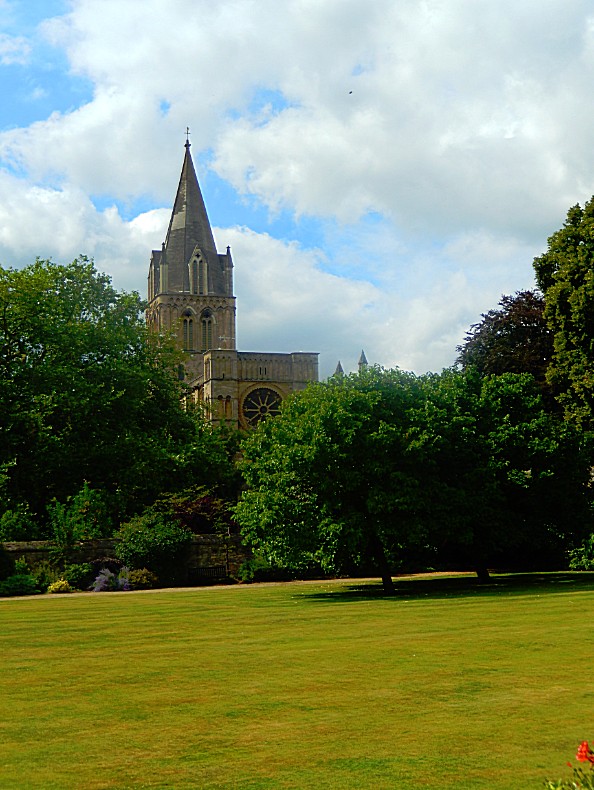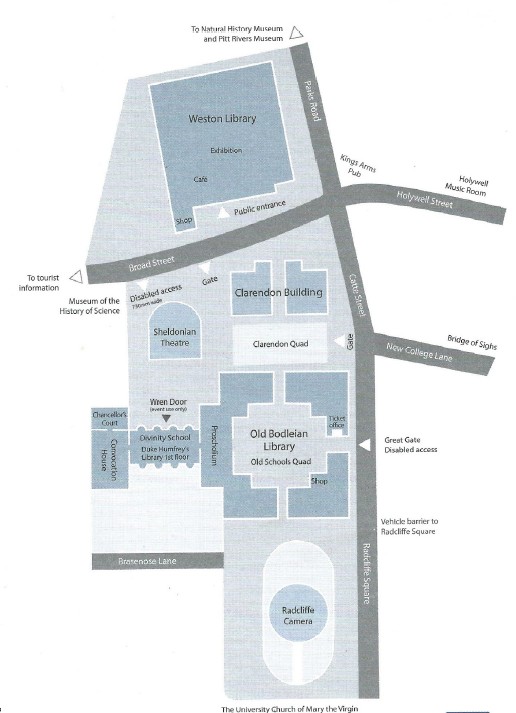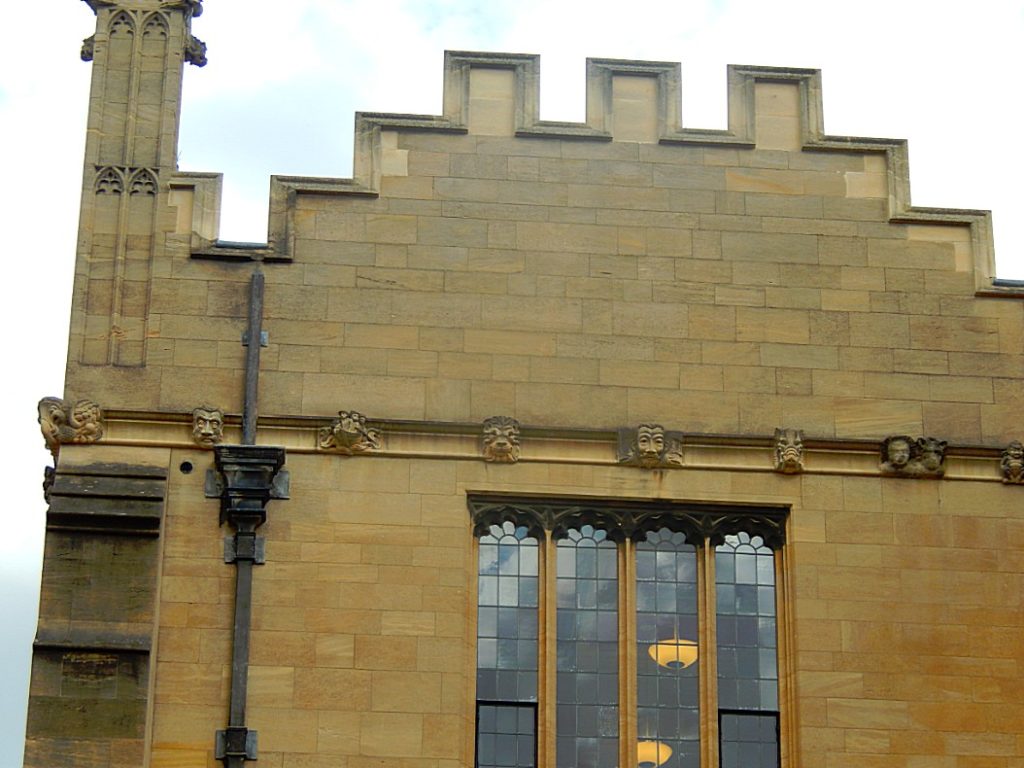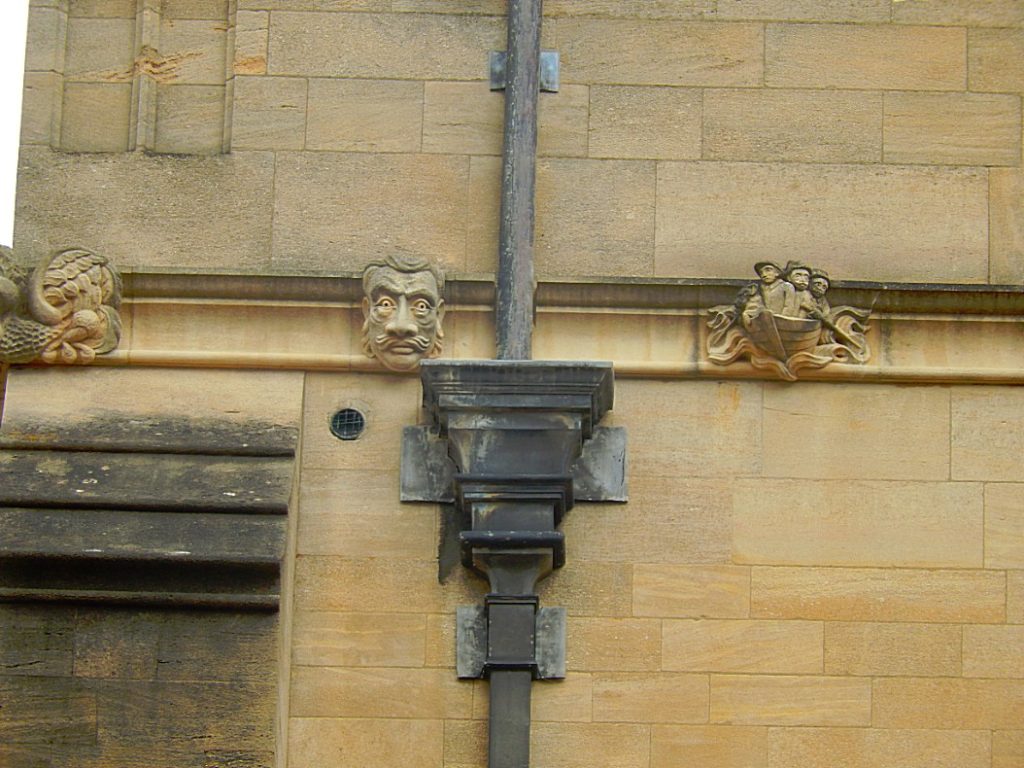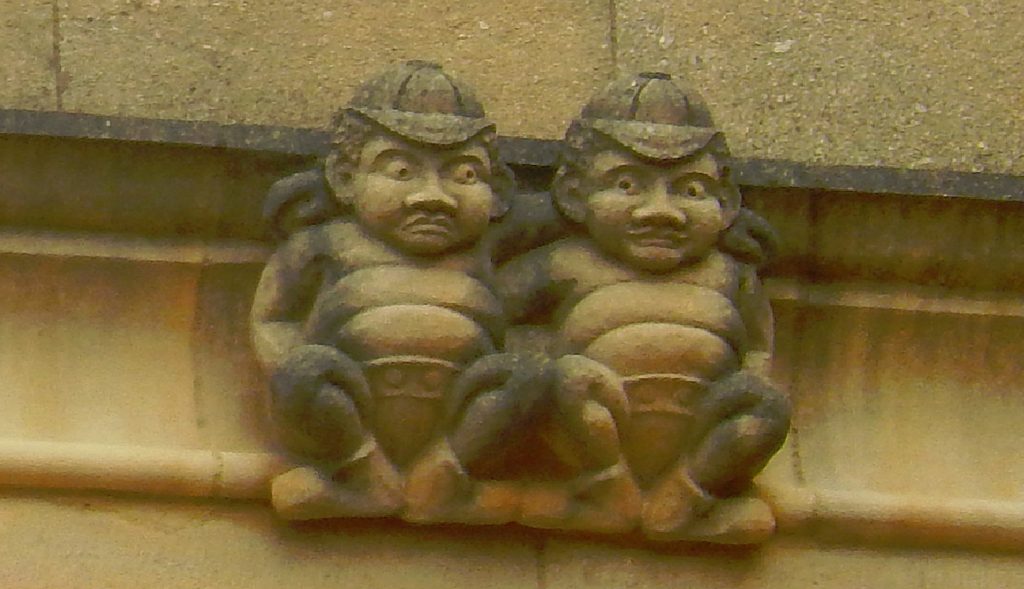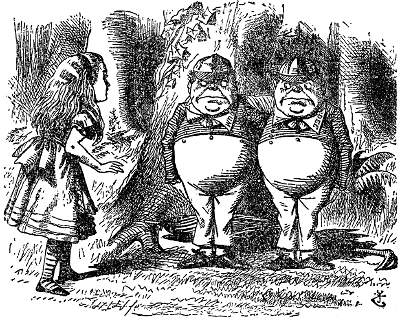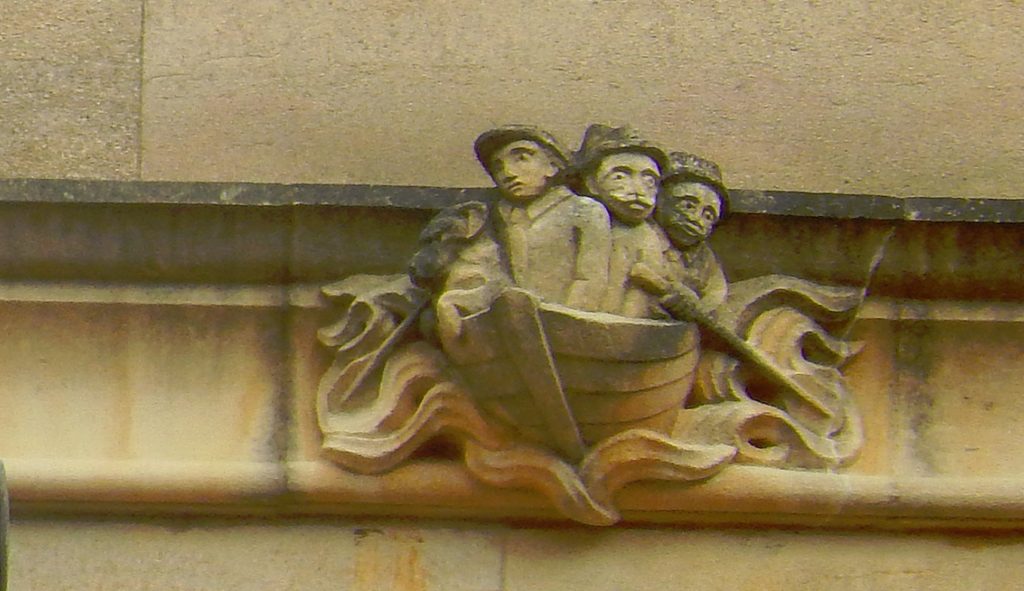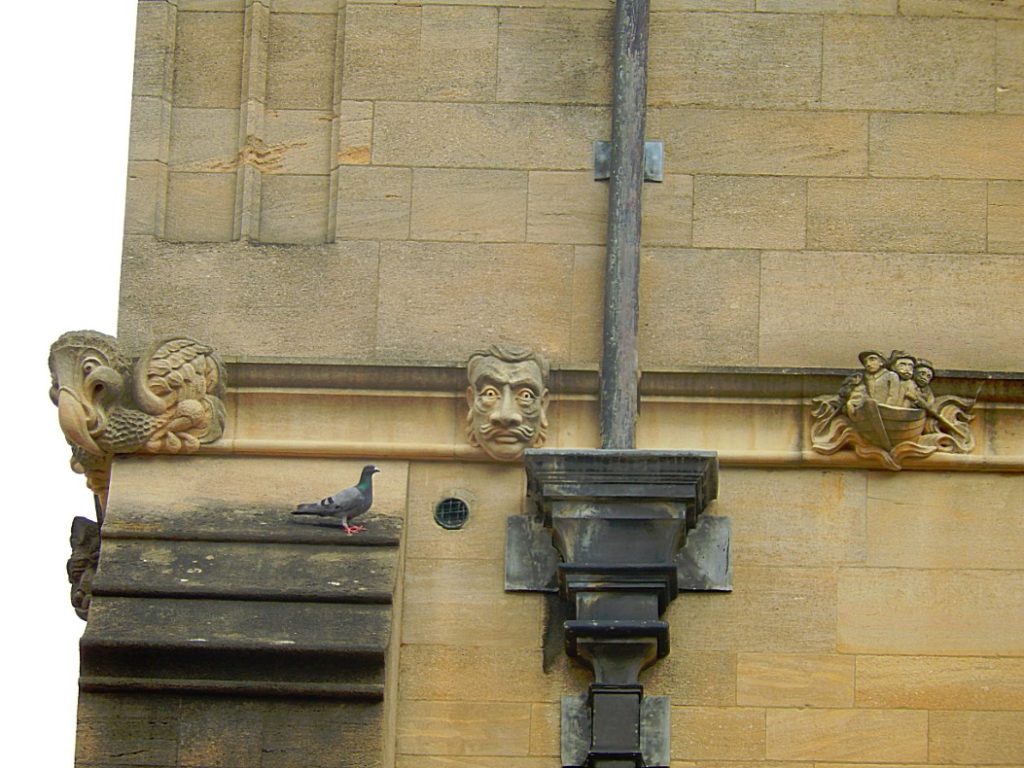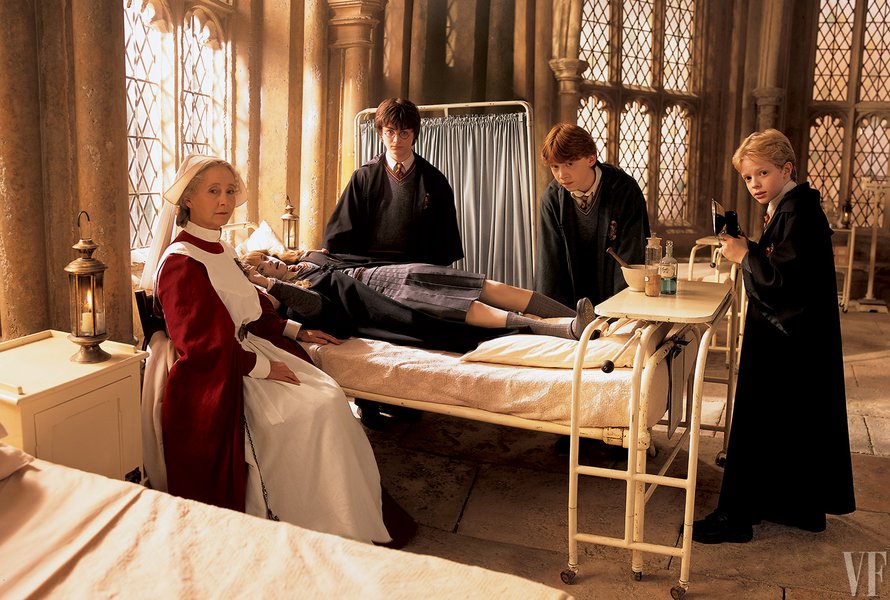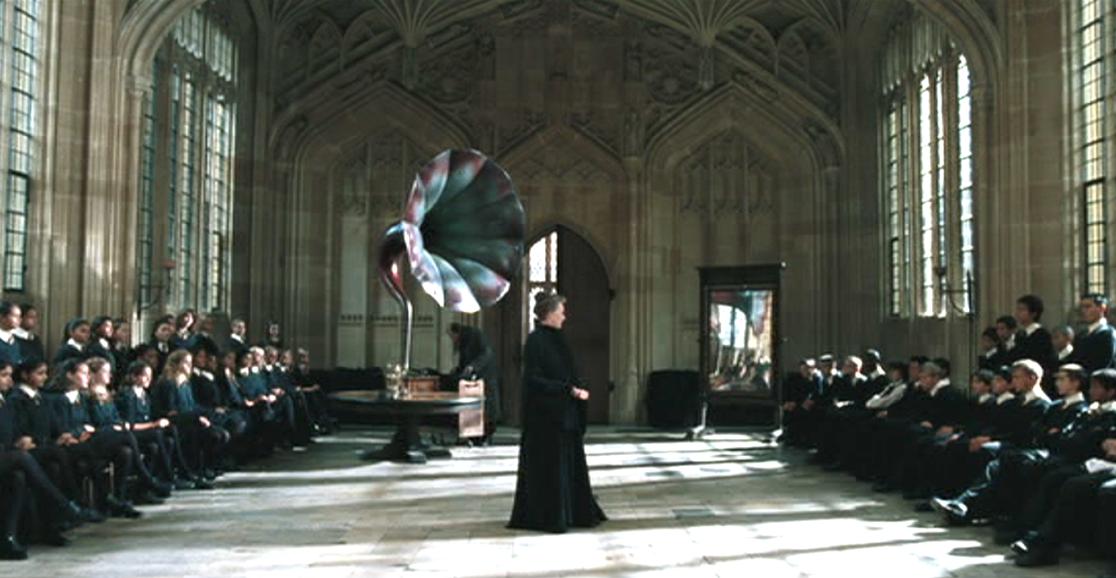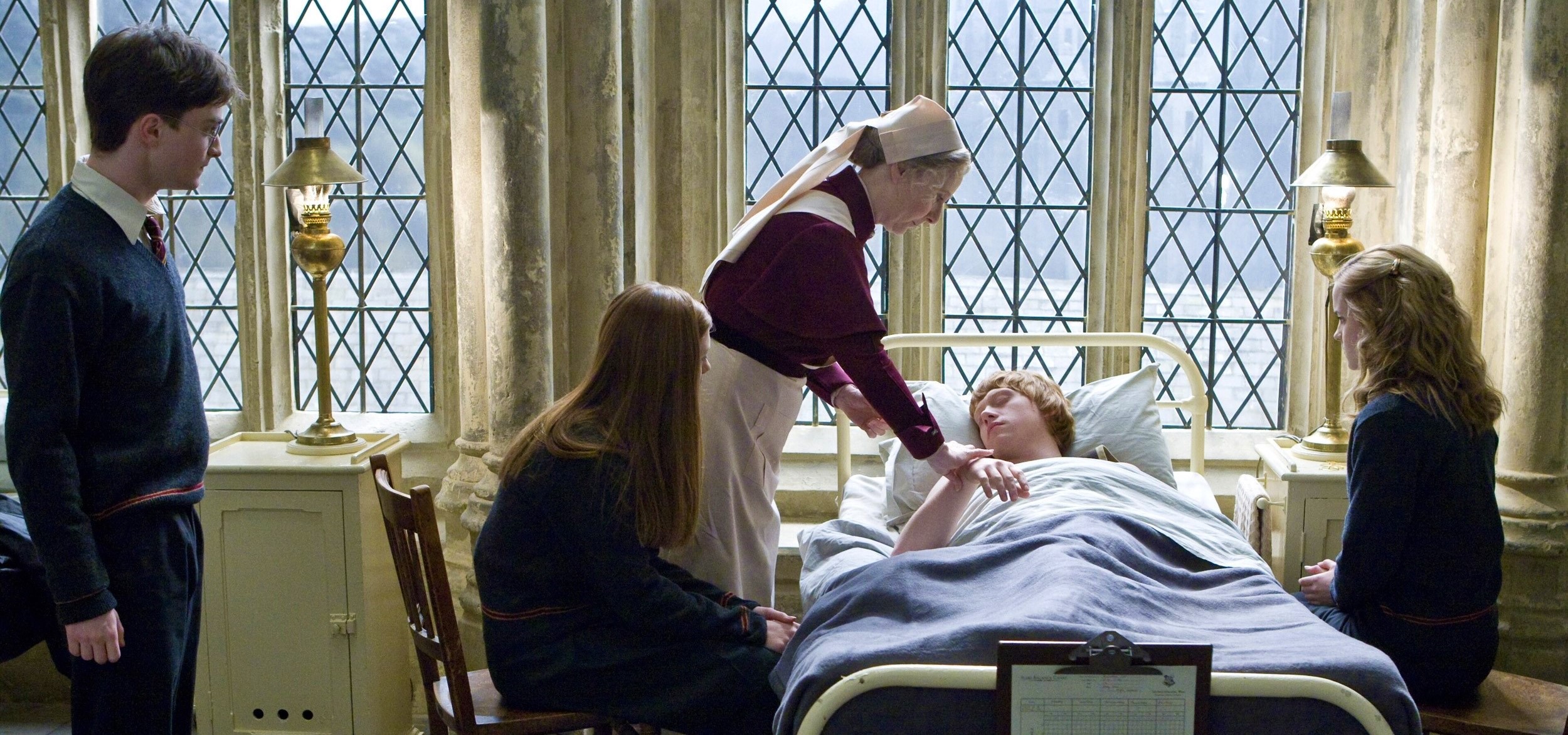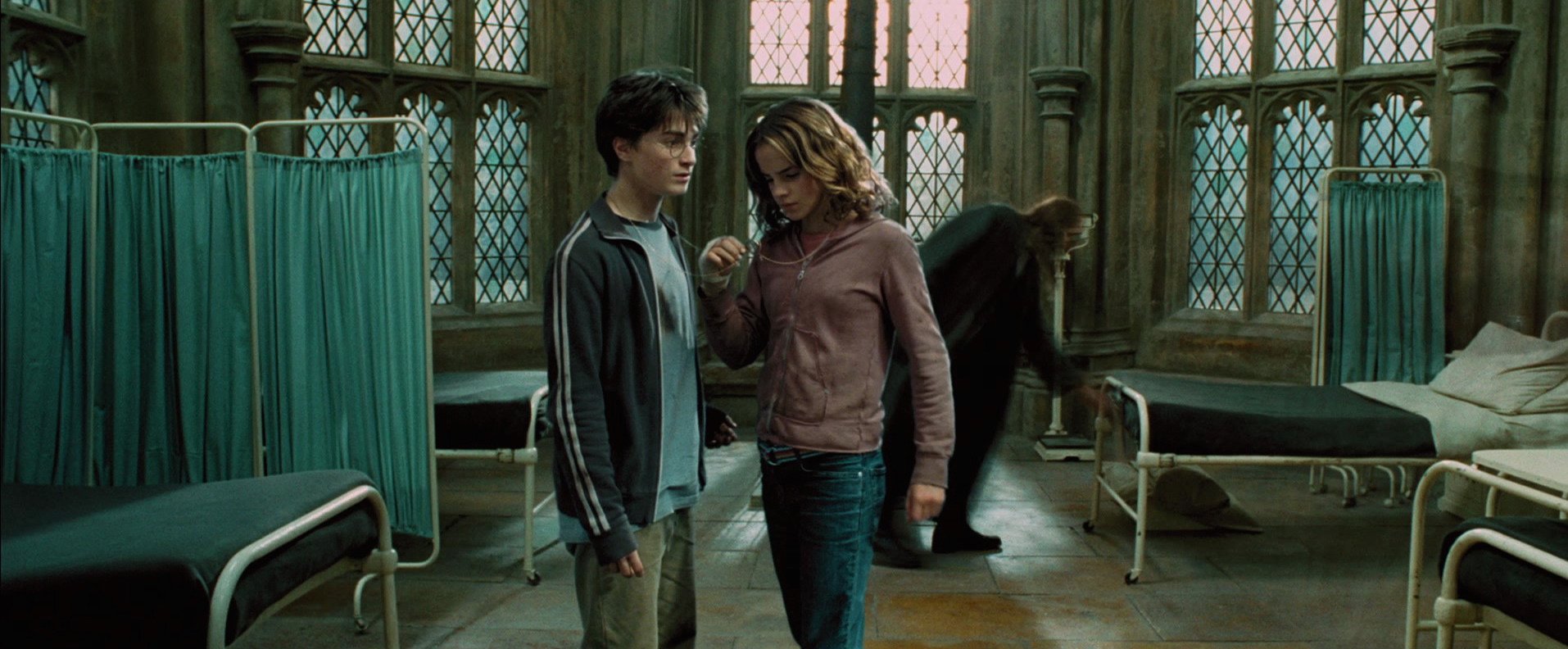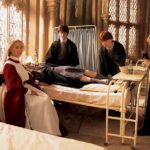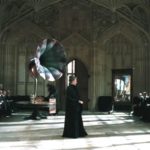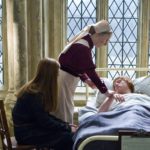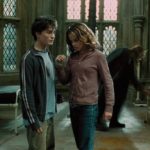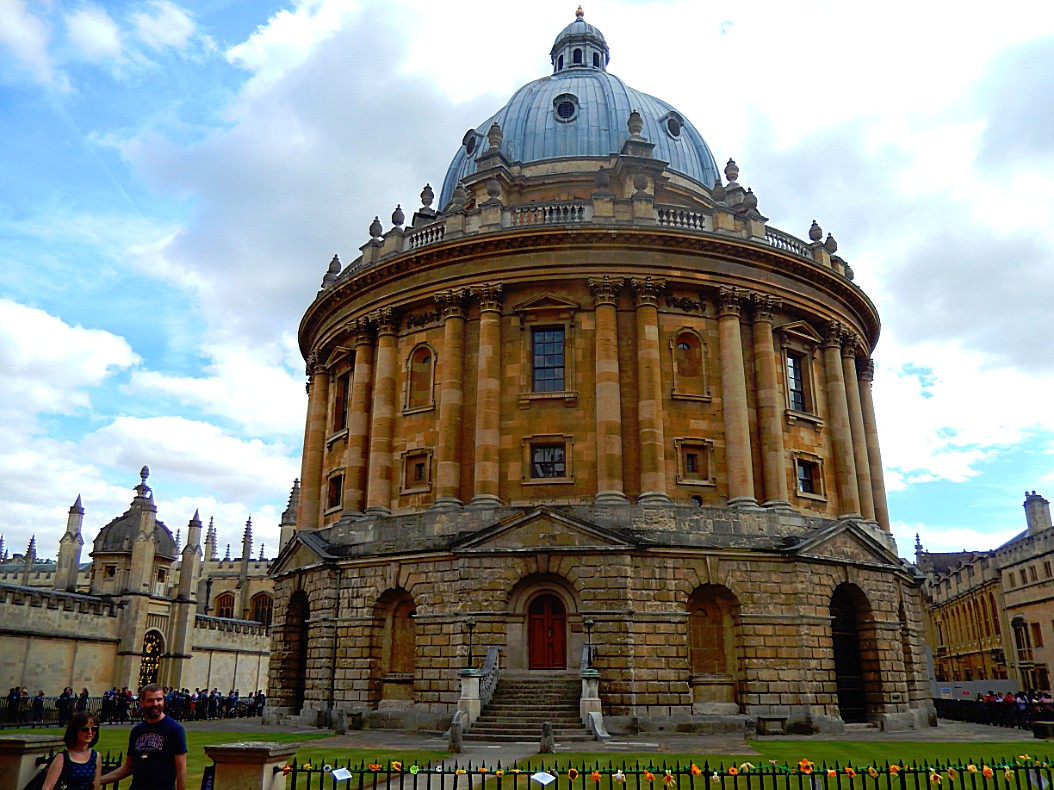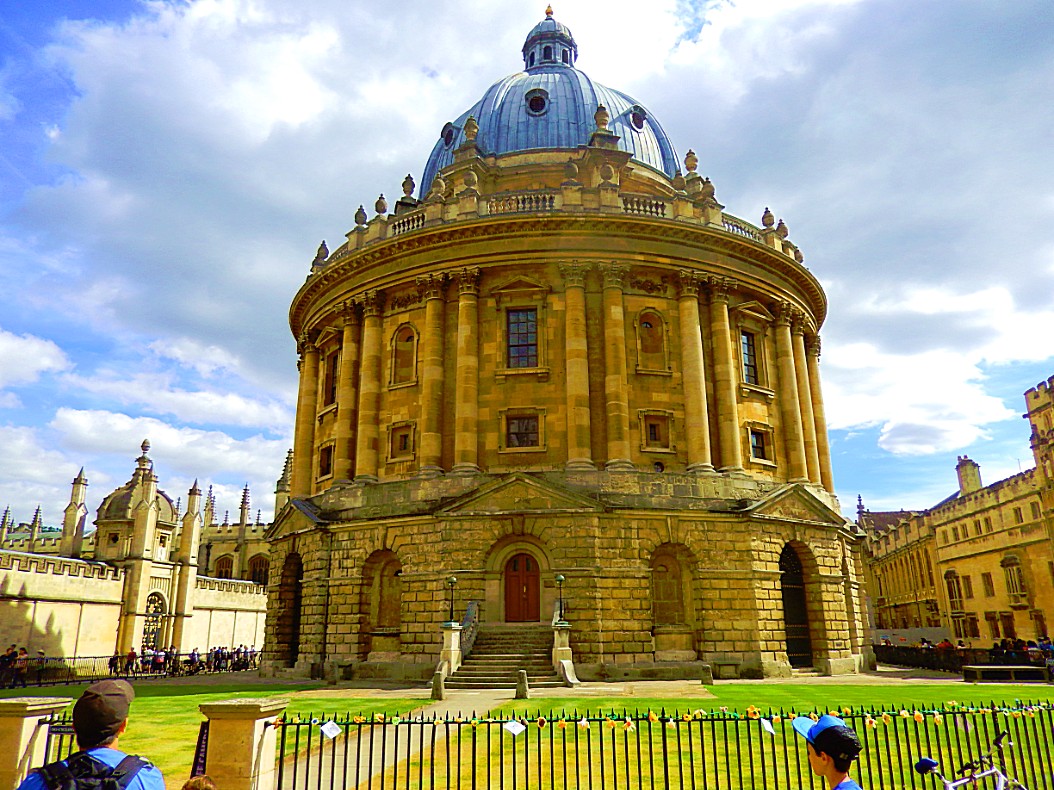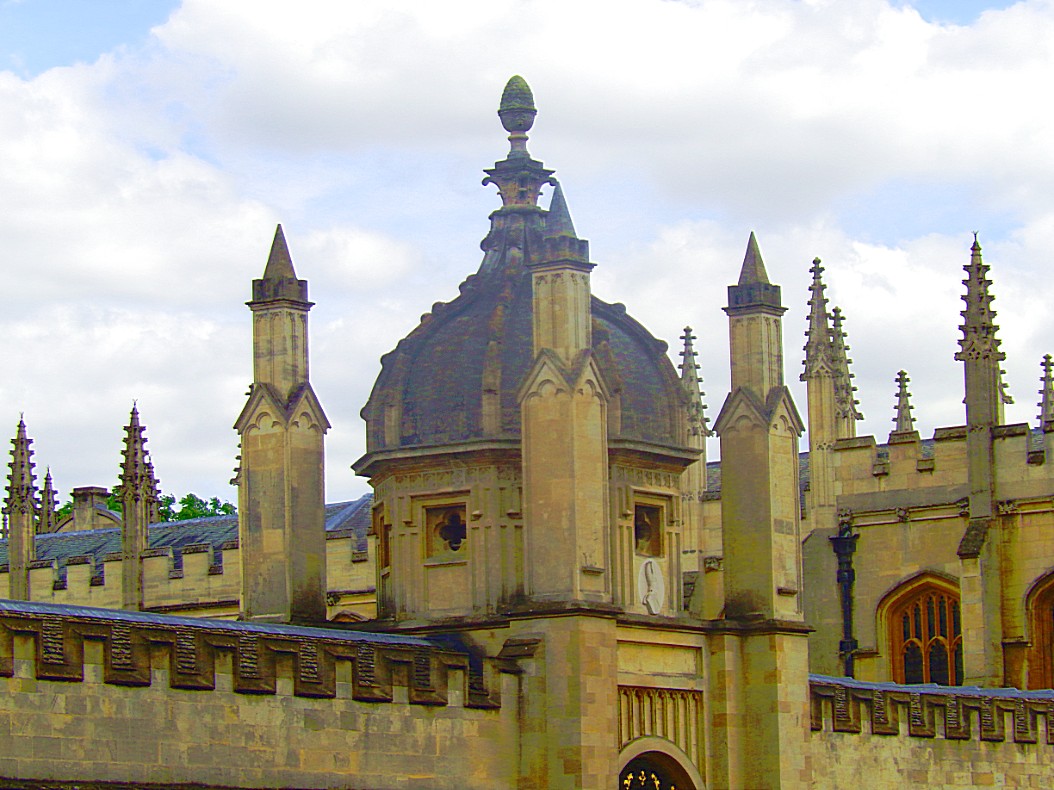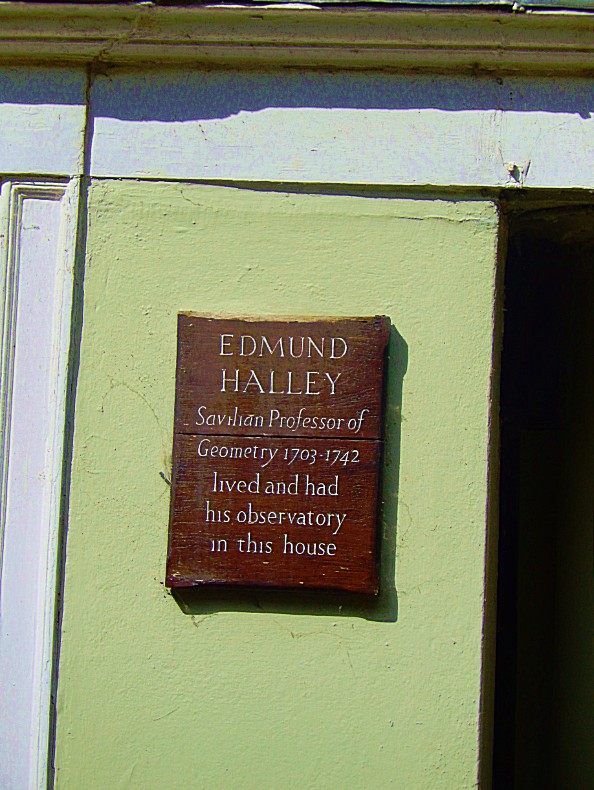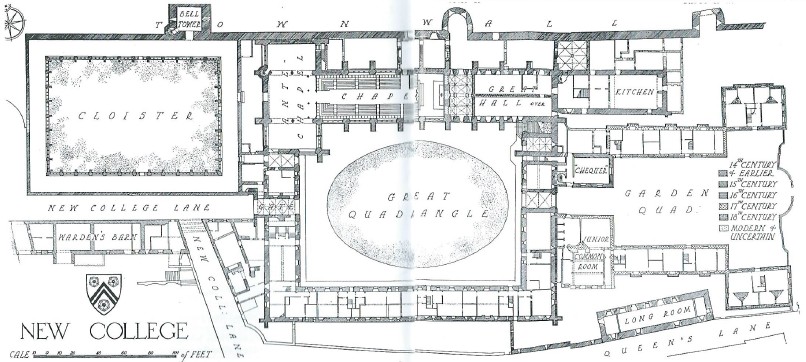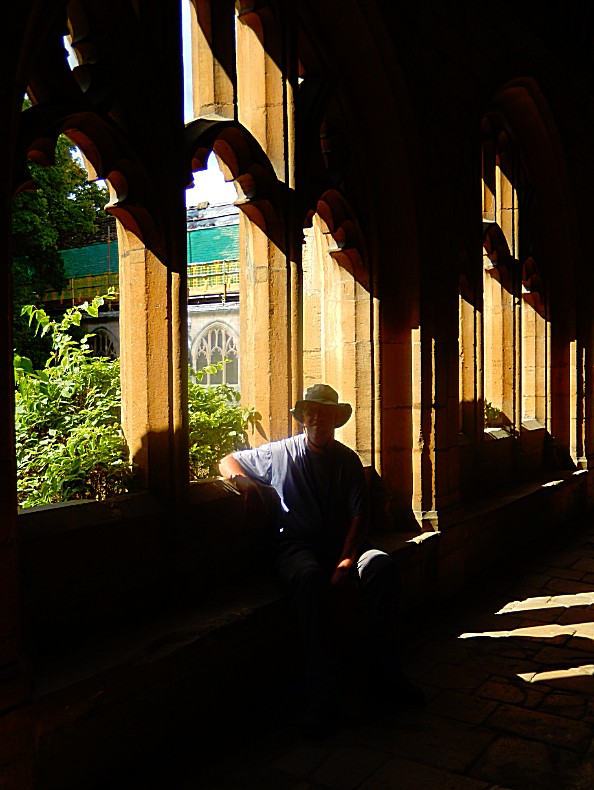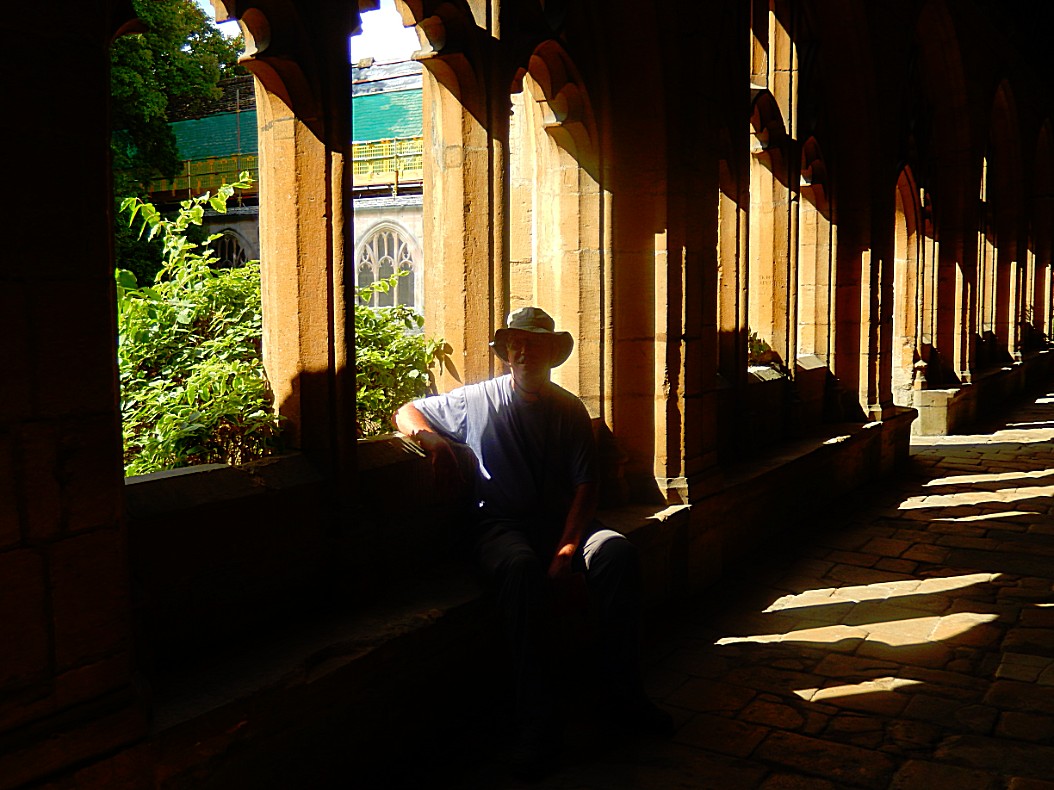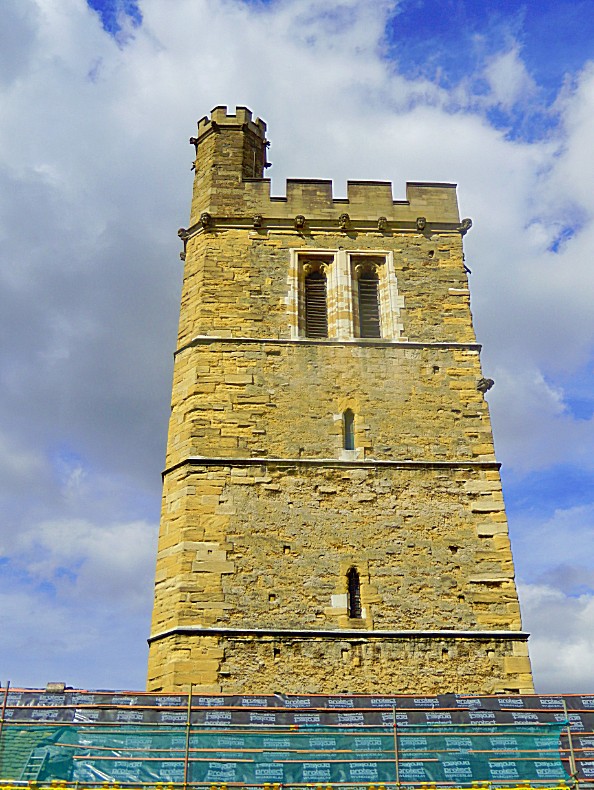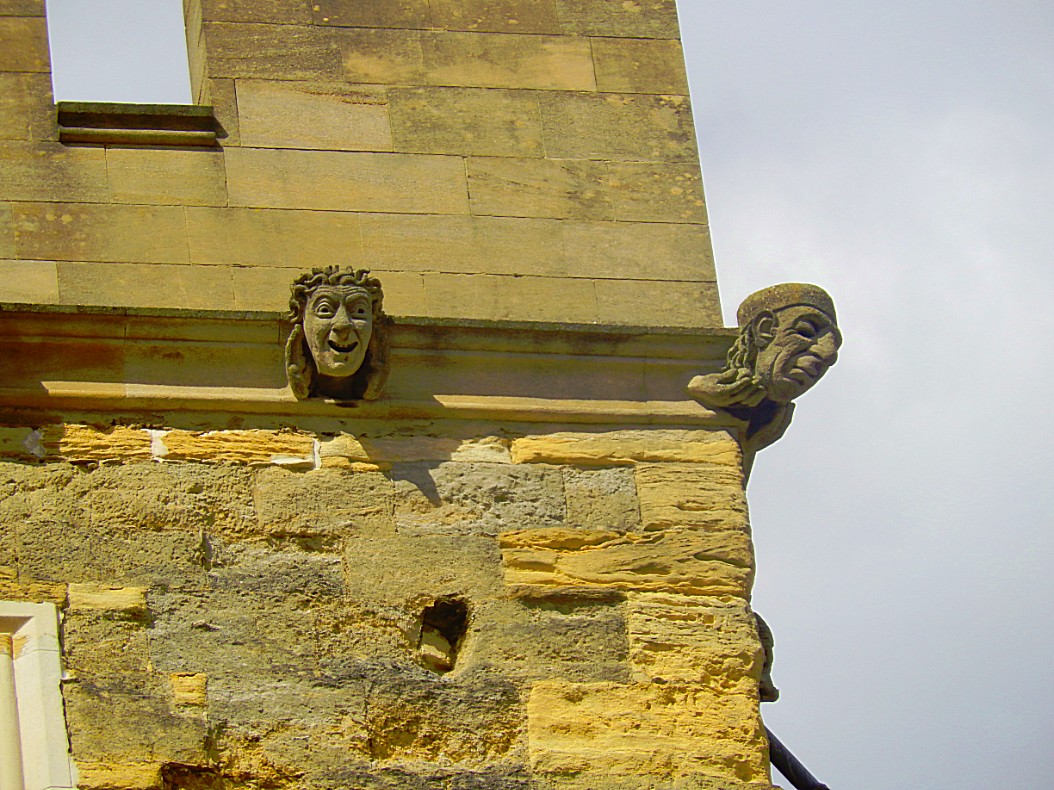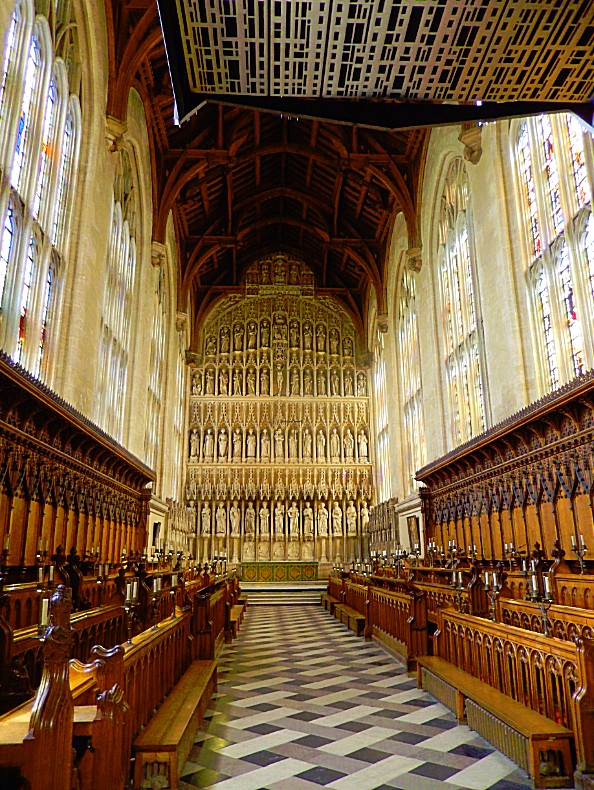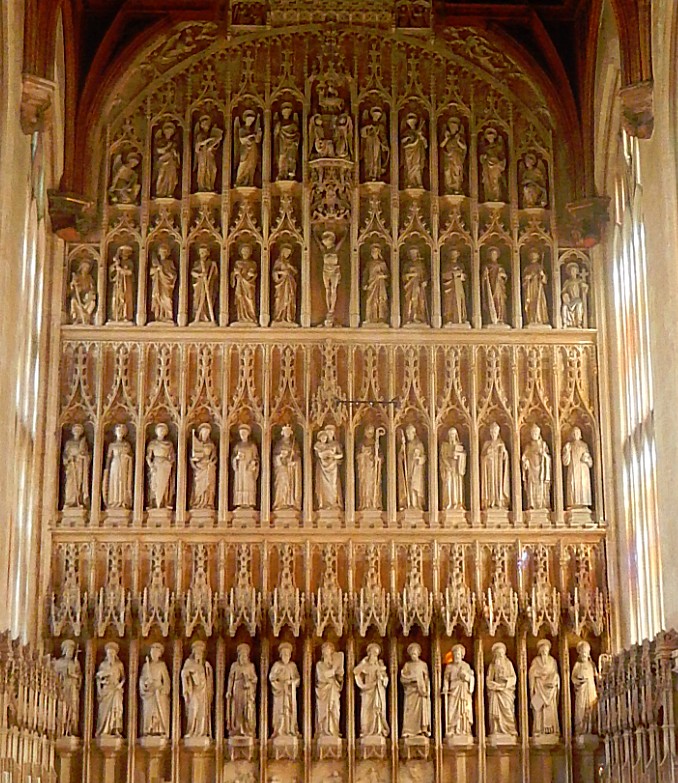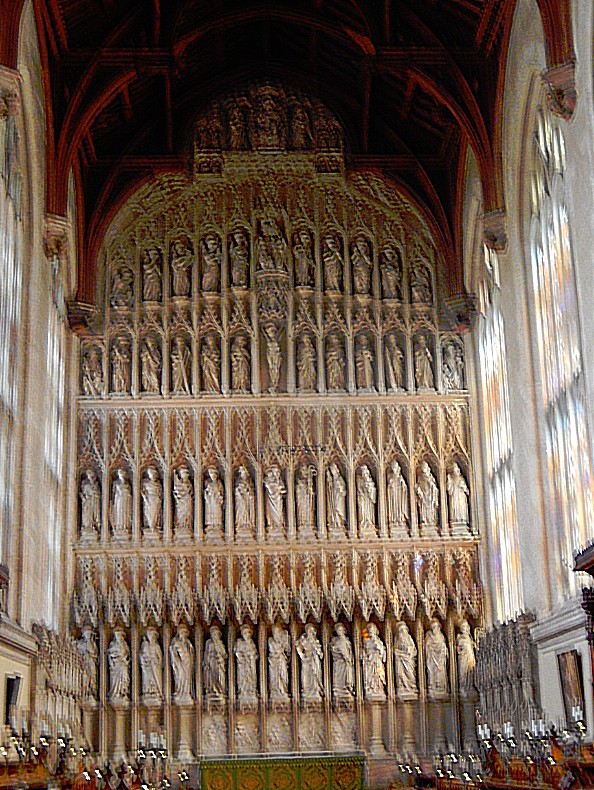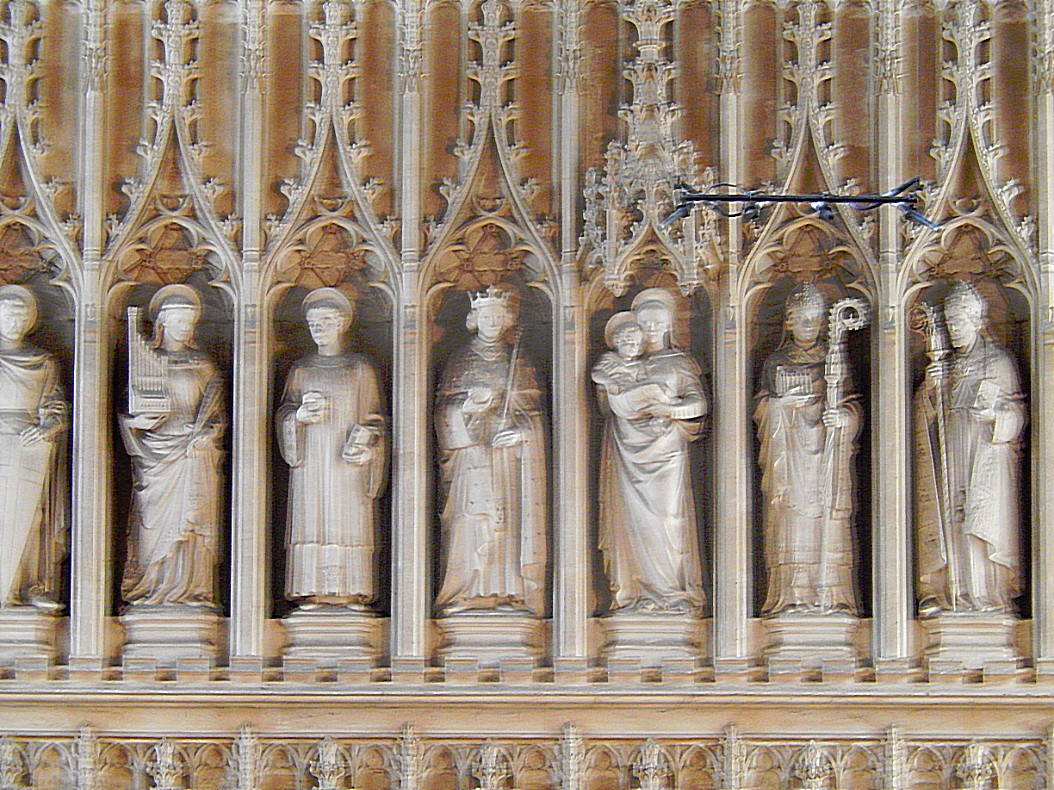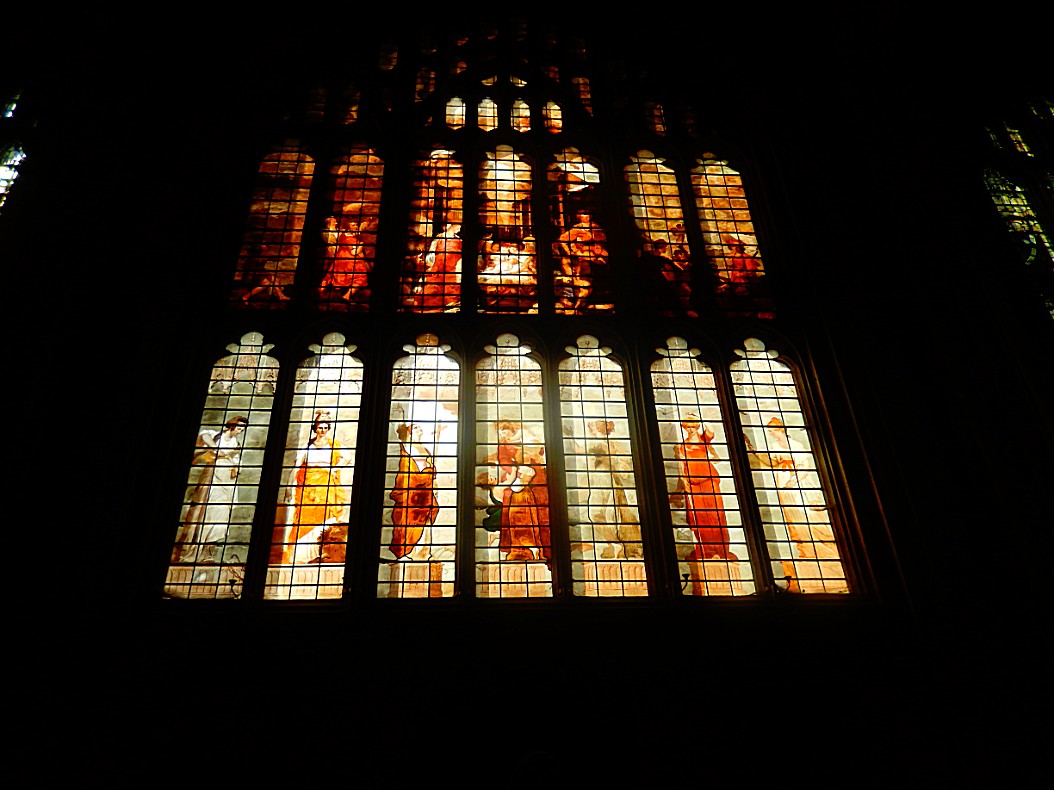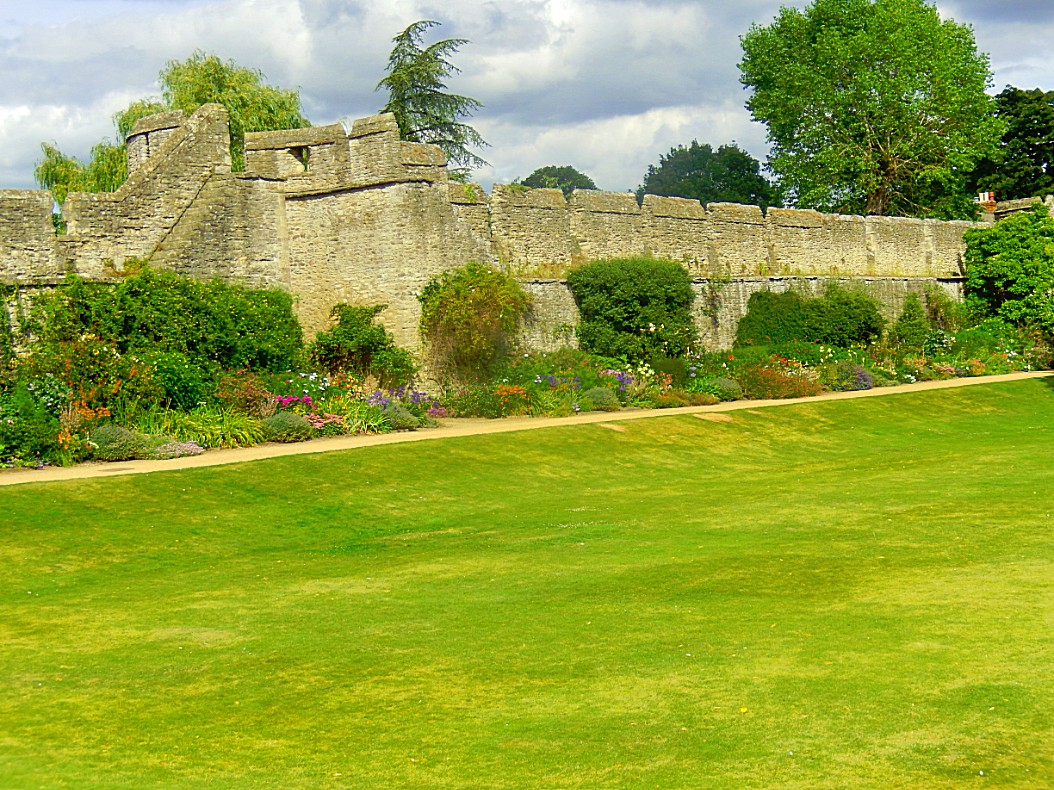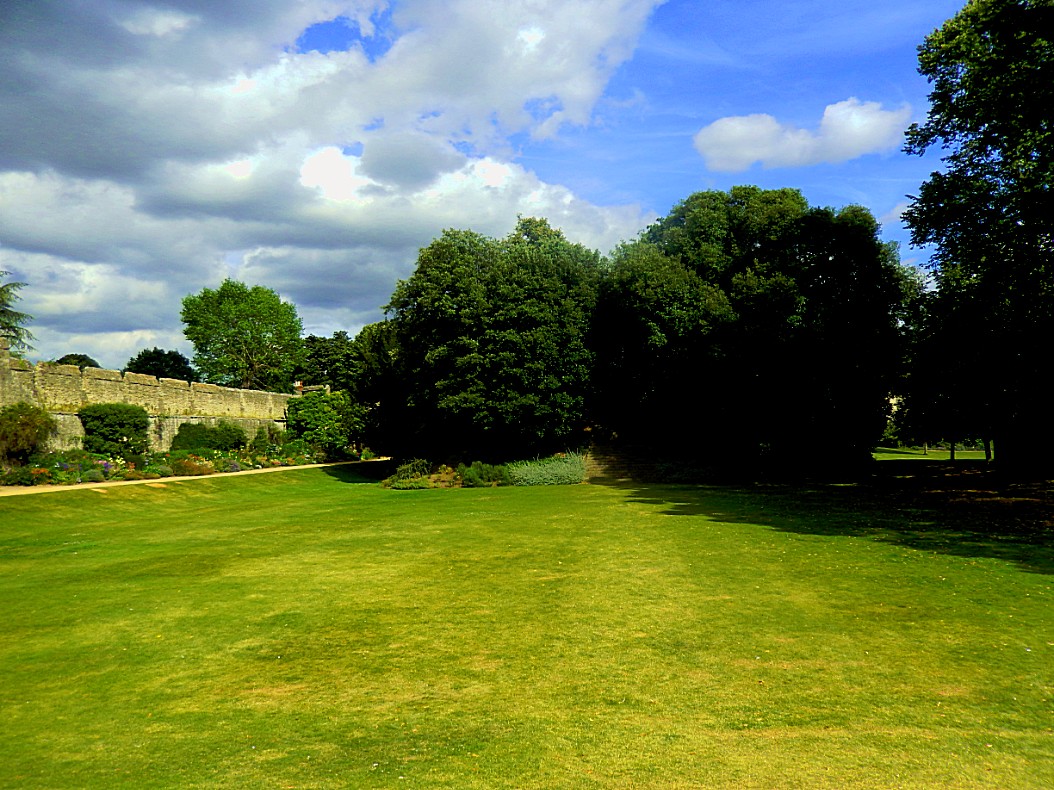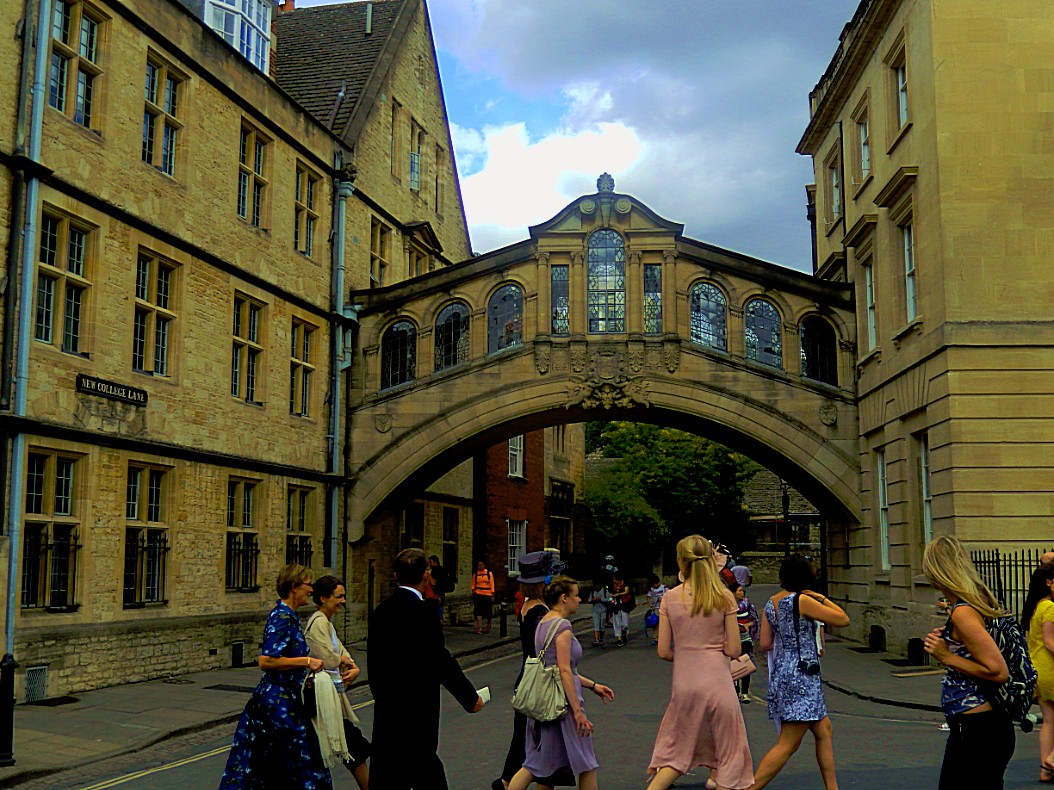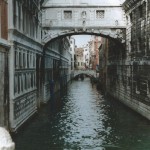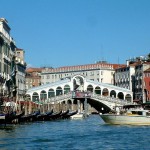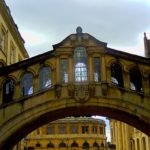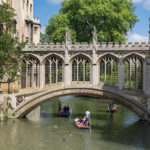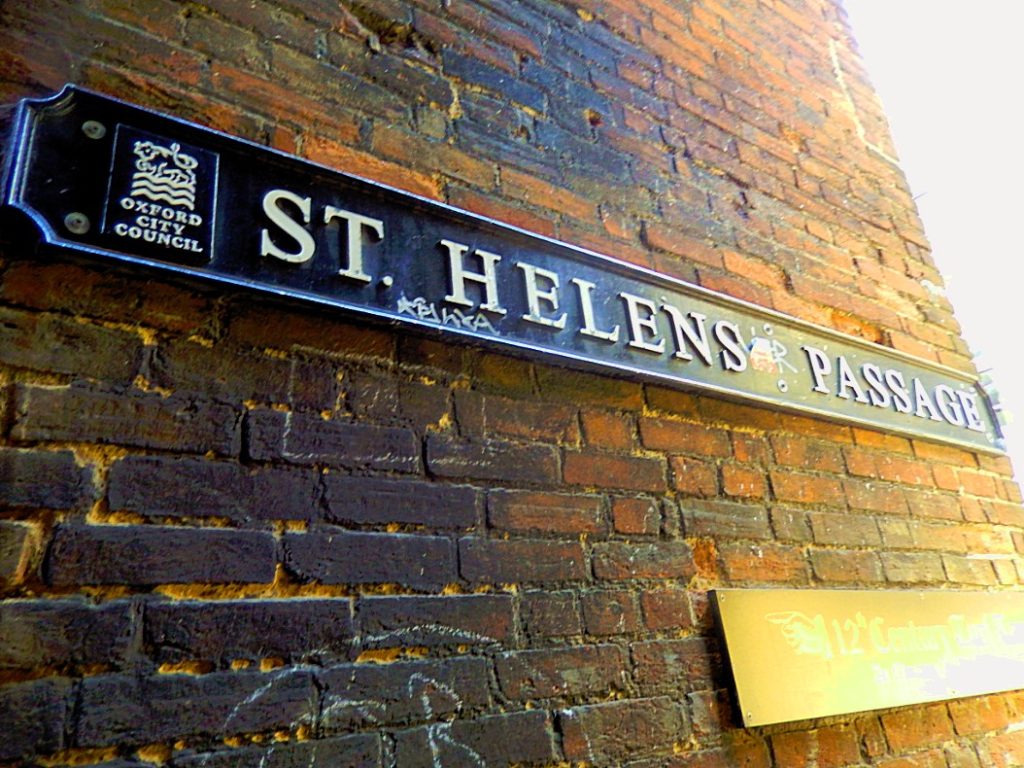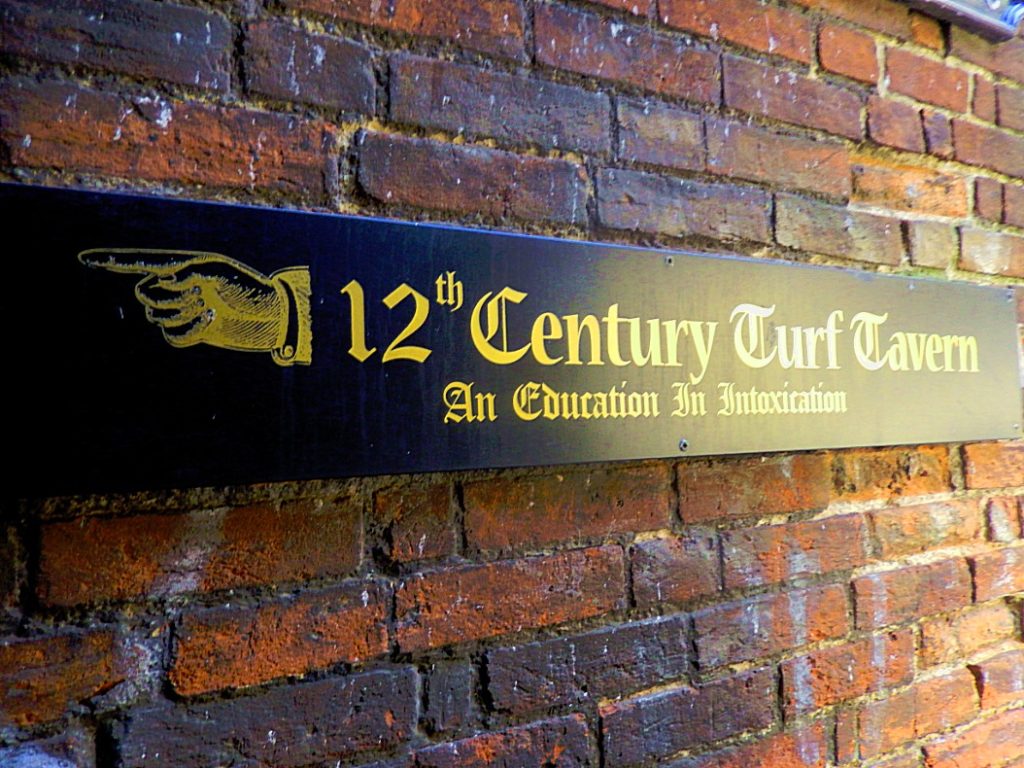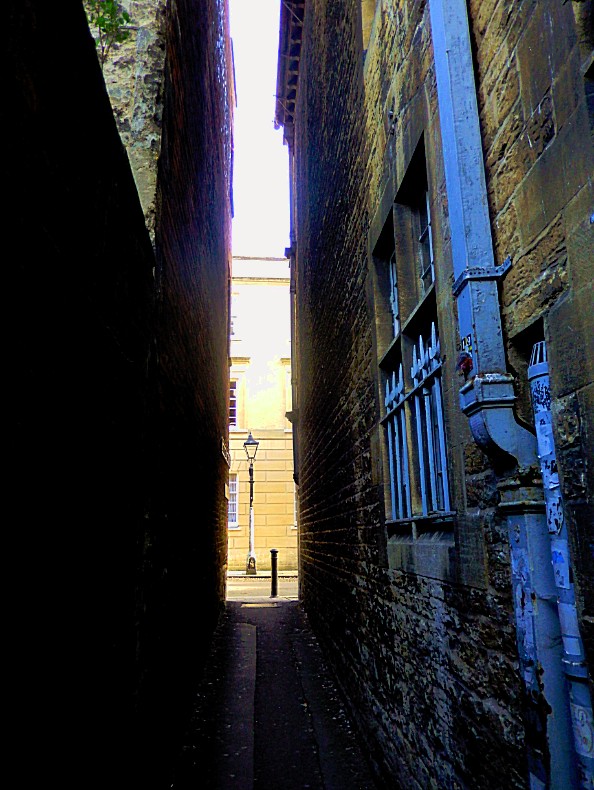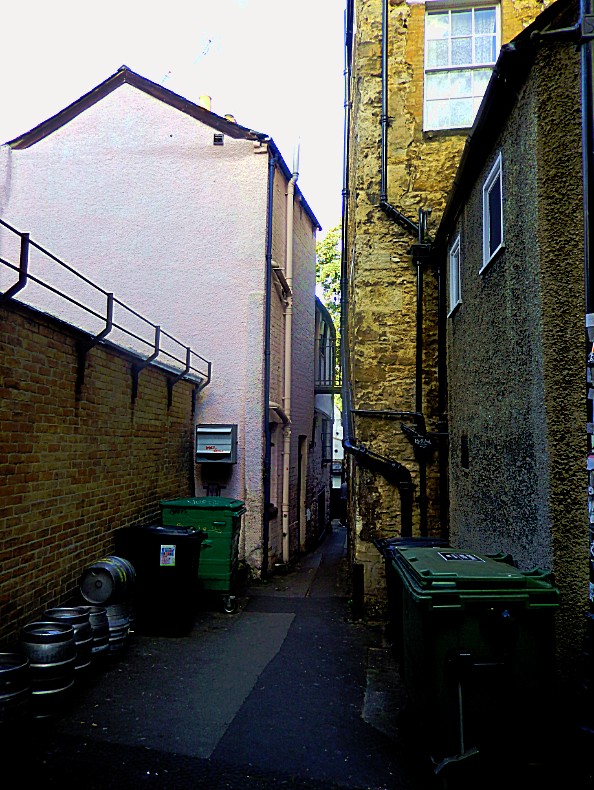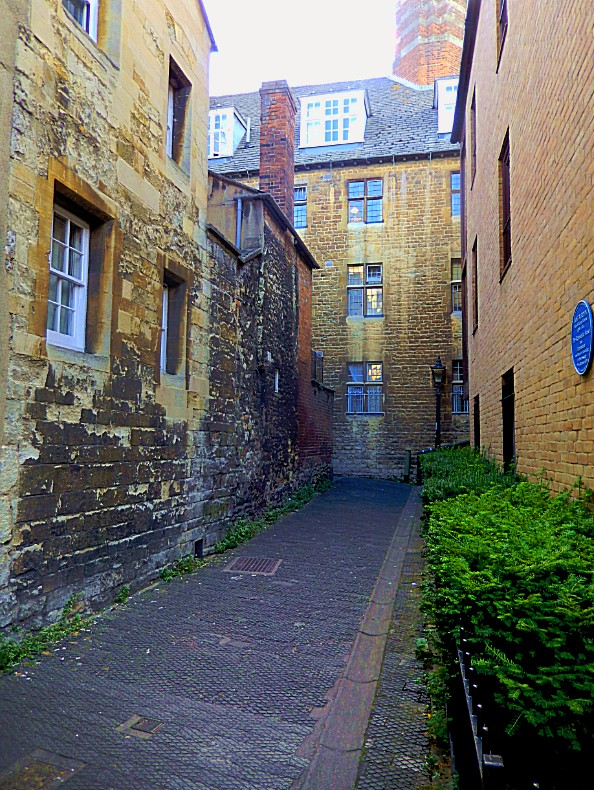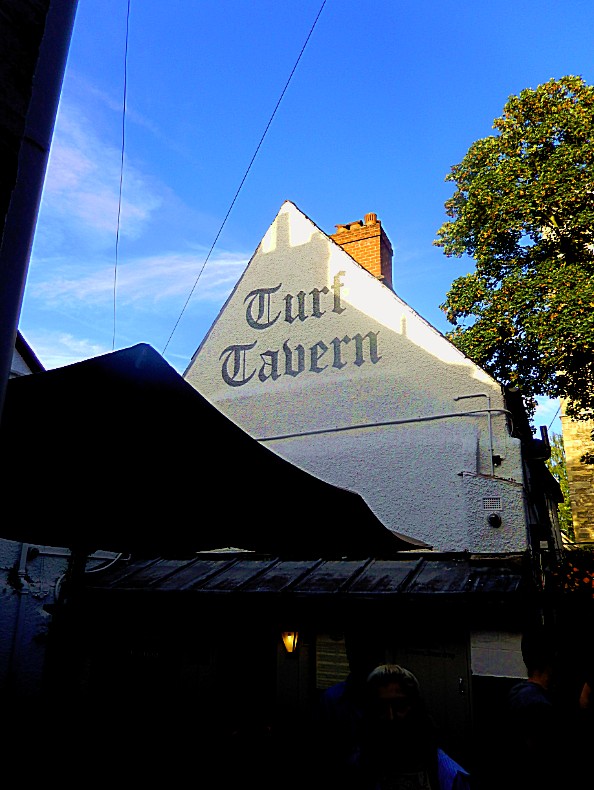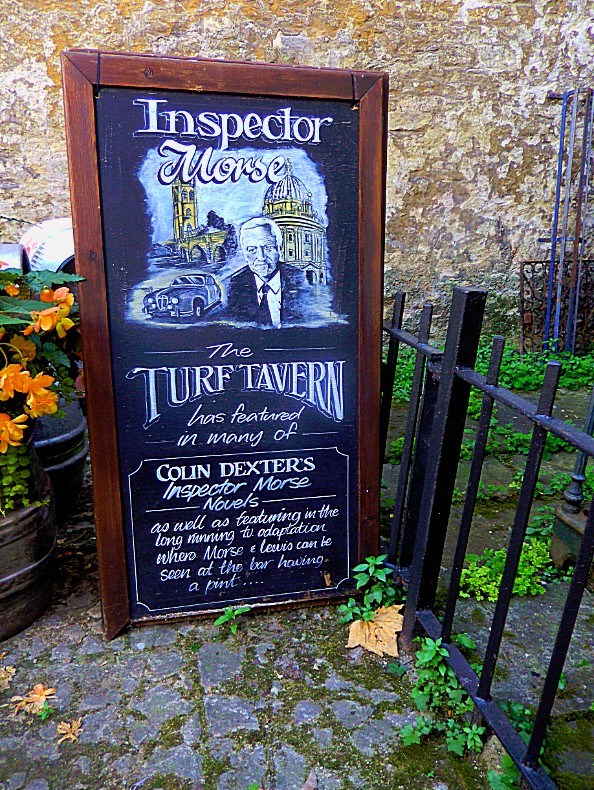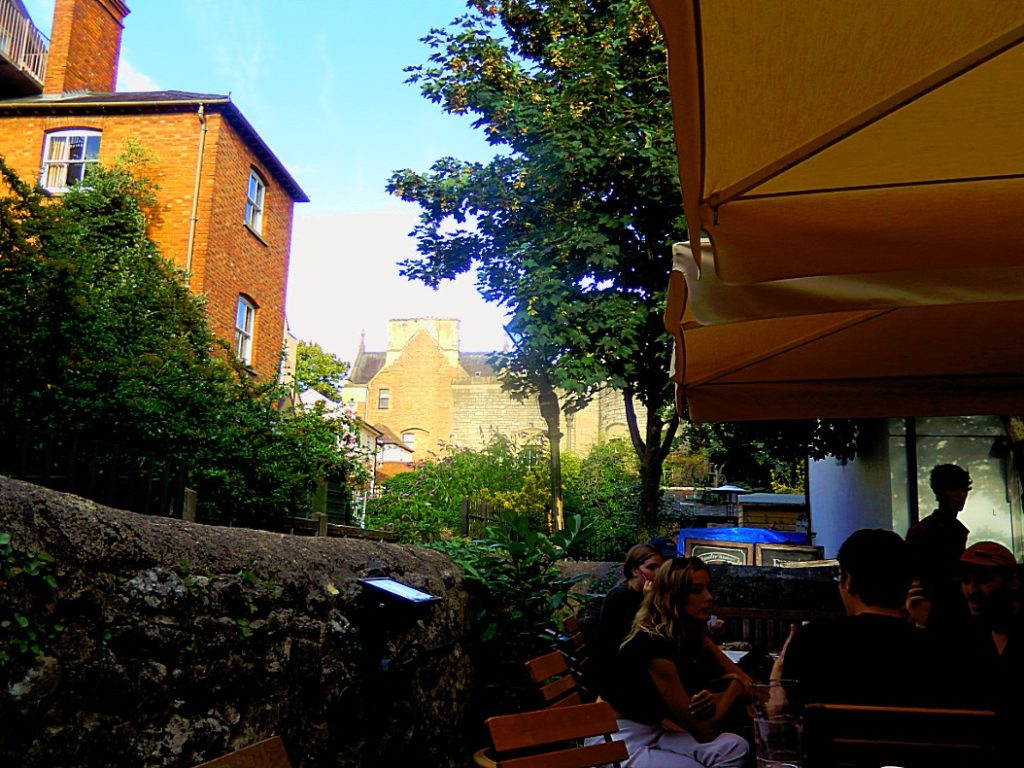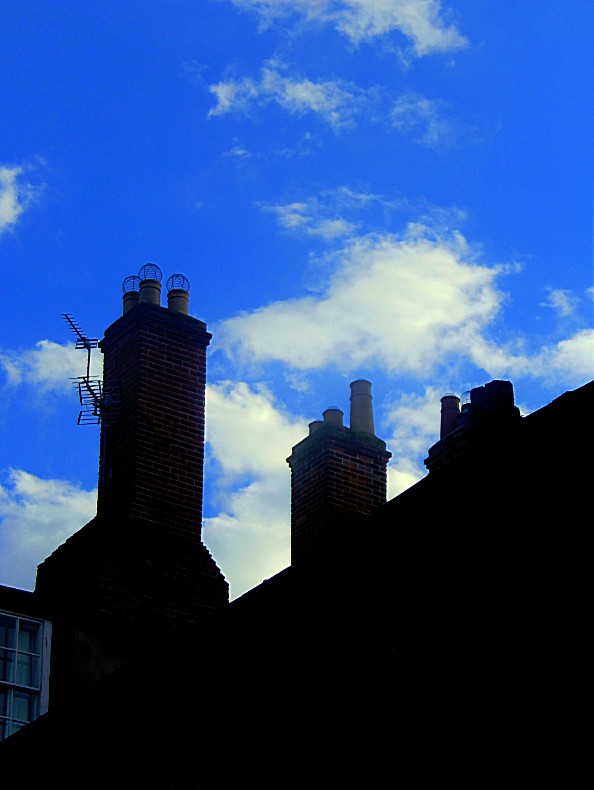An Oxford city walk with Alice, Harry, Bilbo and Inspector Morse
After my train journey to Didcot Parkway, I needed to take the bus to Oxford, due to repairs on the railroad between Didcot and Oxford.
Central Backpackers
I arrived in Oxford at around 12 o’clock and checked in at the local hostel of Central Backpackers at Park End Street. I chose this hostel because of its location right between and in the vicinity of the railway station and the hitoric city center. The employees were very friendly and helpfull and the hostel was the cheapest on this England journey, but it was also by far the noisiest and it took ’till deep in the night to get quiet and have an oppportunity to sleep. On the other hand things were simple but good. Breakfast, internet and electricity sockets at the bed and a vault for luggage on the room. I actually used this place twice, on the jouney west (2 nights) and on the return journey east (1 night). I booked them through booking.com of course.
Explore Oxford Tours
Then I started a walk through the old town of Oxford.
Oxford is (like London) a hub for Childrens books locations and I was most interested in Alice in Wonderland, The Hobbit, The Narnia Chronicles and Harry Potter. Apart from that I knew that Oxford had also been the background for the Inspector Morse (and its follow up Lewis) books and television series. All these famous books or book series were somehow related to Oxford and on my first city walk I already discovered a lot of those relations with this awesome city…
…and for those discoveries I had hired a professional and specialist Oxford Tour Guide from:
I had asked for a tour that would address as much as possible those places in Oxford that were related somehow to Classic English Children’s Literature and it’s authors.
Explore Oxford Tours offered this Guided tour:
________________________________________________________________________________________
Children’s Literary Tours
A visit of all the key historical sites included in the Past and Present Tour but with an emphasis on those Oxford locations and characters associated with children’s literature – Lewis Carroll and Alice in Wonderland, C.S. Lewis (The Chronicles of Narnia), J.R. R. Tolkien (Lord of the Rings), Philip Pullman (His Dark Materials), Kenneth Grahame (Wind in the Willows).
Also visit the Harry Potter filming locations in Oxford and, see if you can spot ‘Hogwarts’ dining hall, library and sick bay!
________________________________________________________________________________________
My guide named Isobel Lewis was founder (in 2005) of Explore Oxford Tours and Blue Badge guide*, who really kept me interested and actually quite flabbergasted about all the connections to English Children’s Literature in Oxford. Frankly much more than I had imagined before I took on this endeavour of finding all these connections, spots and additional stories. I can absolutely recommend this tour and organisation because it would have been a hell of a job to find all these locations and the connected stories myself. So it is more than worth to have a Blue Badge Guide guiding you through e.g. Oxford.
*Blue Badge Tourist Guides are the official, professional tourist guides of the United Kingdom. They wear a Blue Badge to indicate their professionalism.
Start of the guided tour:
Alice’s Shop
I had agreed to meet my guide on St. Aldates in front of the iron gate to Christchurch meadow, opposite Alice’s shop… Nowadays the shop is devoted to the sale of souvenirs related to Alice.
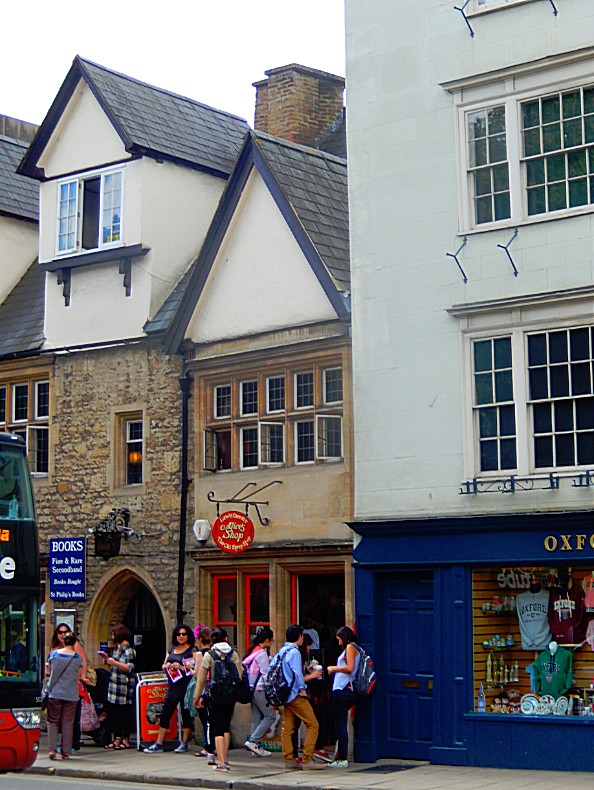
A curious little shop at St. Aldates 83 where once Alice made purchases from a shopkeeper with a bleating voice…
The shopkeeper then was a sheep…
Christchurch College
Christ Church is a royal foundation. Following the fall of Thomas Wolsey in 1529, Henry VIII inherited Cardinal College and refounded it, firstly as King Henry VIII’s College in 1532 and then as Christ Church in 1546. The reigning British monarch acts as the representative of the Founder and is known as its ‘Visitor’. Her Majesty Queen Elizabeth II last visited Christ Church in March 2013.
Meadow Building
After a short introduction to my guide, we entered the iron gate, away from the shop and towards Christchurch meadow, while on my left were already the beautiful buildings of Christchurch College. Through a large gate in the Meadow Building…
The Meadow building through which I entered, was built in 1863 by Thomas Newenham Deane. The Venetian style was favoured by the Christ Church art historian John Ruskin.
The Marble Staircase
Through the Cloisters we quickly walked towards the Great Hall, but doing so I immediately felt a familiarity with that environment. A bit of a deja vu feeling. This kept going on when I walked up on a great marble staircase towards the Great Hall and suddenly it struck me. This wasn’t Christ Church at all! This was Hogwarths!!!
I felt like Harry Potter who in The Sorcerers Stone climbed these very stairs for the very first time. Excited!
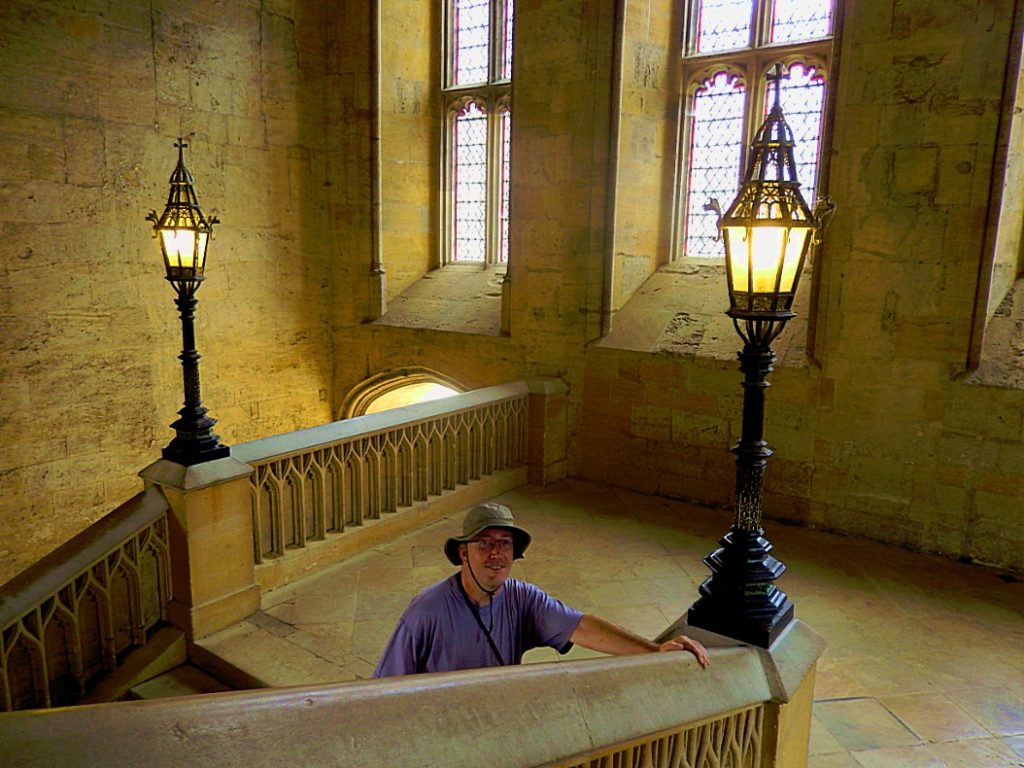
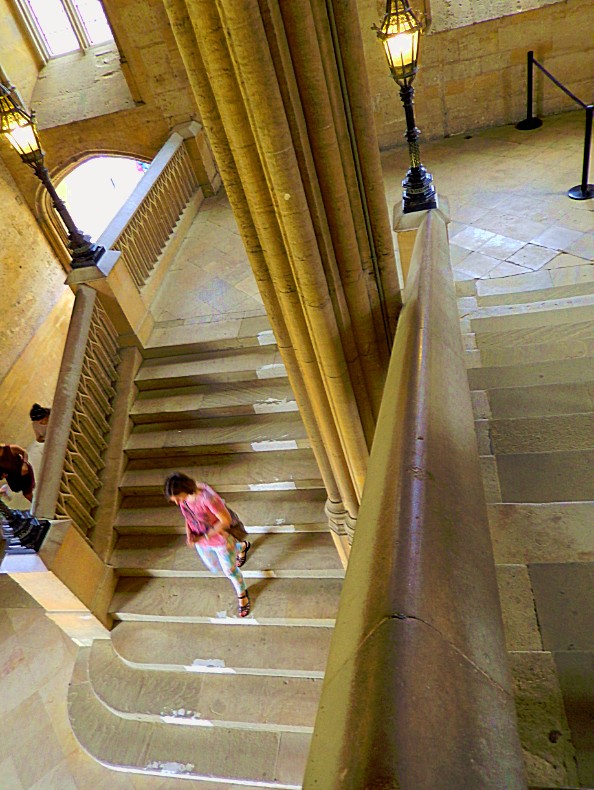 And after Professor Minerva McGonagall had explained the sorting hat procedure to them … and Neville had found his lost toad, Harry and the other first year students entered the Great Hall…
And after Professor Minerva McGonagall had explained the sorting hat procedure to them … and Neville had found his lost toad, Harry and the other first year students entered the Great Hall…
Great Hall
The Hall is at the centre of college life; the academic community congregates here to dine each day and on special occasions banquets are held. The Hall has a magnificent ‘hammerbeam’ ceiling. Portraits of many famous members of Christ Church hang on the walls, including John Locke, six of the nineteen Prime Ministers educated at the college, and Charles Dodgson.
And it really was and felt like I had stepped into the magical world of Harry Potter now and that I soon would sit in a classroom where Professor Snape would teach me Potion making… The funniest thing is that at the end of my journey, trailing these wonderful Childrens books, I would also visit the studio version of this hall. The film set at Warner Bross. And yes the actual hall in Harry Potter was build in a studio and changed for movie magic sake, but this hall was its main inspiration…
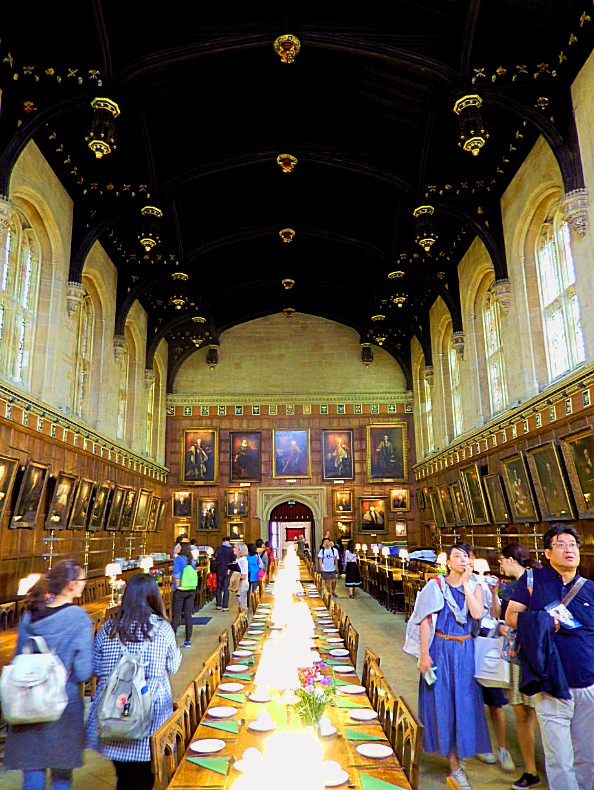
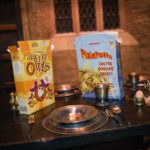 The hall was still in use as a dining hall for students and professors at Christchurch College who eat their breakfast here and is opened to public after breakfast is finished. I didn’t see any Cheeri Owls or PixiePuffs though 😉
The hall was still in use as a dining hall for students and professors at Christchurch College who eat their breakfast here and is opened to public after breakfast is finished. I didn’t see any Cheeri Owls or PixiePuffs though 😉
But there were more traces regarding children’s books in this hall.
Look at the fireplace and their brass firedogs…
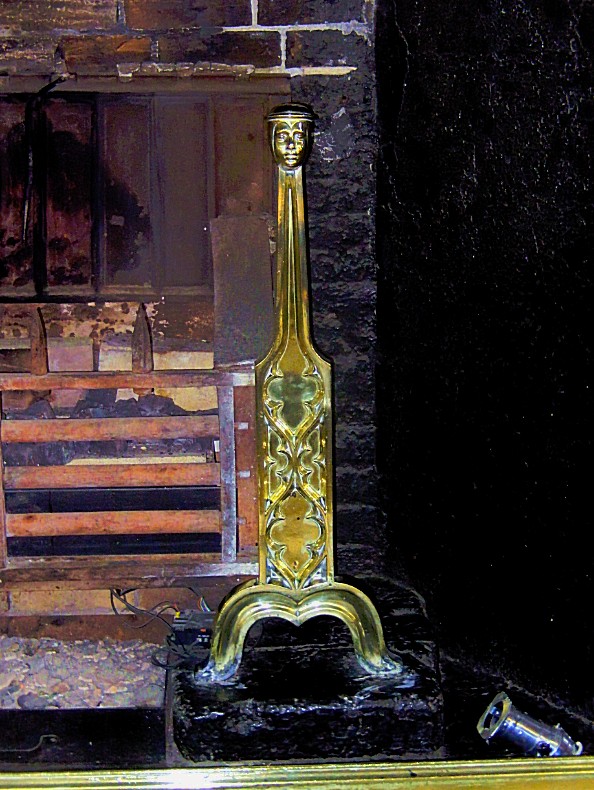
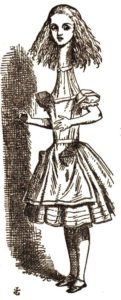 They somehow do look familiar, that is, if you read and looked at John Tenniel’s illustration in Alice in Wonderland, where the telescoped Alice has “an immense neck which seemed to rise like a stalk”.
They somehow do look familiar, that is, if you read and looked at John Tenniel’s illustration in Alice in Wonderland, where the telescoped Alice has “an immense neck which seemed to rise like a stalk”.
Above the fireplace is a frieze showing some blue faces with an open red mouth…
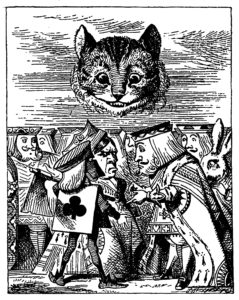
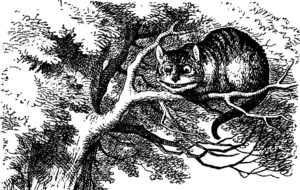 This might have been the origin or inspiration to the Cheshire Cat the cat that slowly dissapeared but for its lingering smile……
This might have been the origin or inspiration to the Cheshire Cat the cat that slowly dissapeared but for its lingering smile……
And then there are the beautiful stain glass windows…
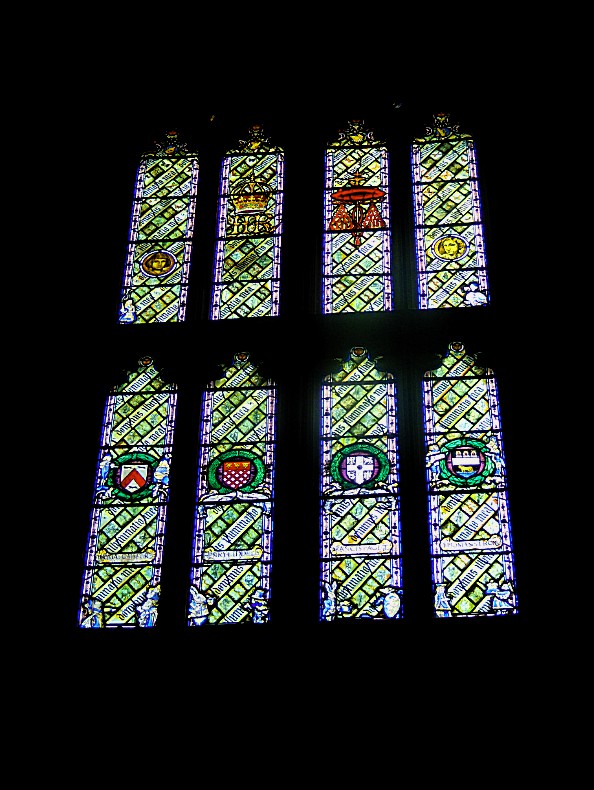 Let’s zoom in a bit on some details…
Let’s zoom in a bit on some details…
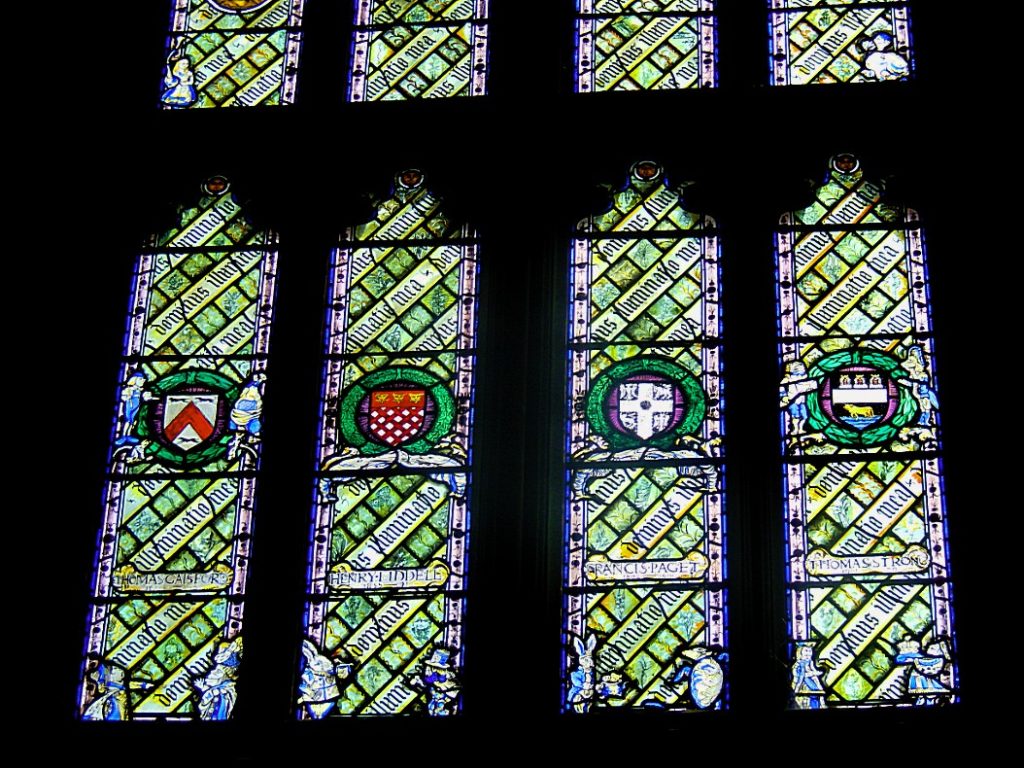 At the bottom of the lowest row of windows we clearly see characters from Alice in Wonderland: The evil Red Queen, The Duchess, The White Rabbit, The Mad Hatter, the March Hare, the Mock Turtle,The King of hearts and a lackey and…
At the bottom of the lowest row of windows we clearly see characters from Alice in Wonderland: The evil Red Queen, The Duchess, The White Rabbit, The Mad Hatter, the March Hare, the Mock Turtle,The King of hearts and a lackey and…
A bit higher we again see different minor characters from the books…
Now let’s zoom in on the top row of windows too…
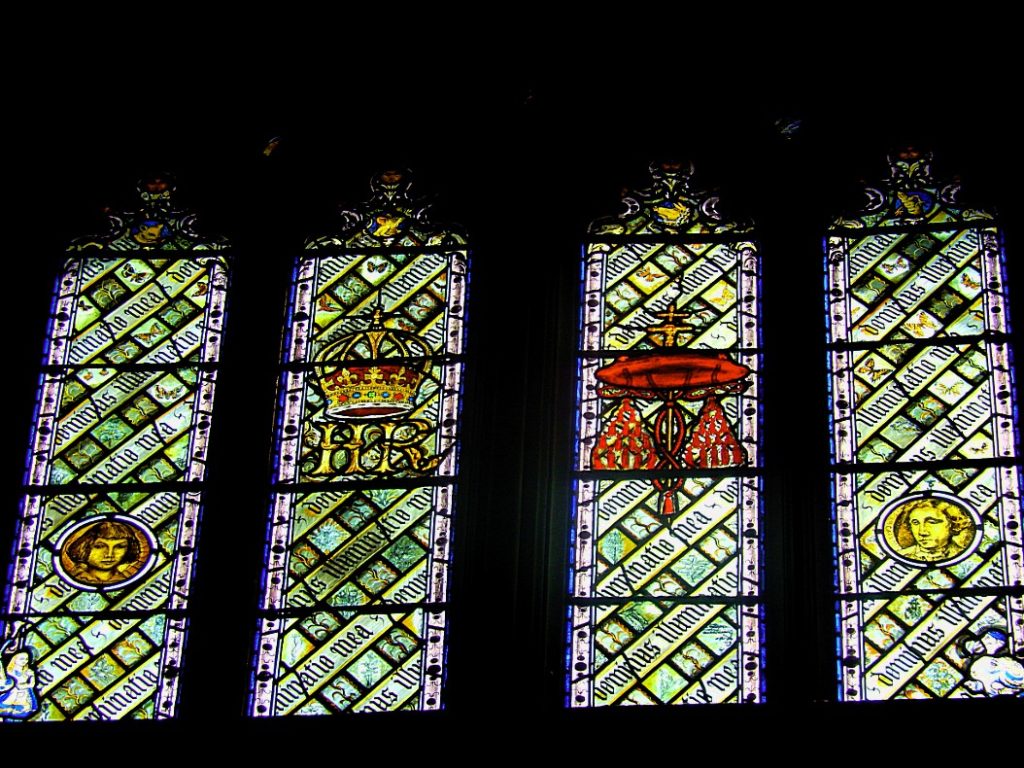
…on the bottom of the windows above (the ones on the outside right and left) we see Alice and the Dodo and above Alice and the dodo (Charles Dodgson), we see in a medaillon to the left, Alice Lidell, (the daughter of Dean Lidell who lived and worked at Christchurch) who inspired Charles Dodgson (better known as Lewis Caroll), to write Alice in Wonderland and Through the looking glass. We also see a medaillion to the right above the Dodo which is a portrait of Lewis Caroll os Charles Dodgson himself.
There are two more things to tell about these last windows: 1st Alice Lidell in the portrait has mid length dark brown hair. Alice drawn by John Tenniel has long blonde hair. Well, although the character of Alice was based on Alice Lidell, her appearance was not. This was because her father Dean Lidell, didn’t approve of this. He wanted her to be unrecognizable and Charles Dodgson complied. John Tenniel used another model for his drawings, but it is not known whom. 2nd we see this Dodo. Charles Dodgson has used the Dodo as his alter ego, as an avatar you might say. The Dodo is found on many buildings in Oxford and specially in Christchurch College, because his books became classic world literature.
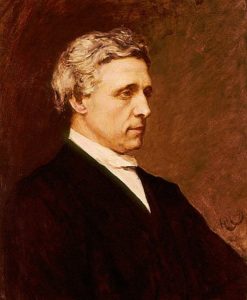 To the right beside the large entrance door is the portrait of Charles Lutwidge Dodgson (Aka Lewis Caroll): Charles Dodgson studied, taught and lived at Christ Church. The then Dean’s daughter, Alice Liddell, was immortalised in his Alice in Wonderland stories and so too were many places and people they encountered at Christ Church. For example
To the right beside the large entrance door is the portrait of Charles Lutwidge Dodgson (Aka Lewis Caroll): Charles Dodgson studied, taught and lived at Christ Church. The then Dean’s daughter, Alice Liddell, was immortalised in his Alice in Wonderland stories and so too were many places and people they encountered at Christ Church. For example
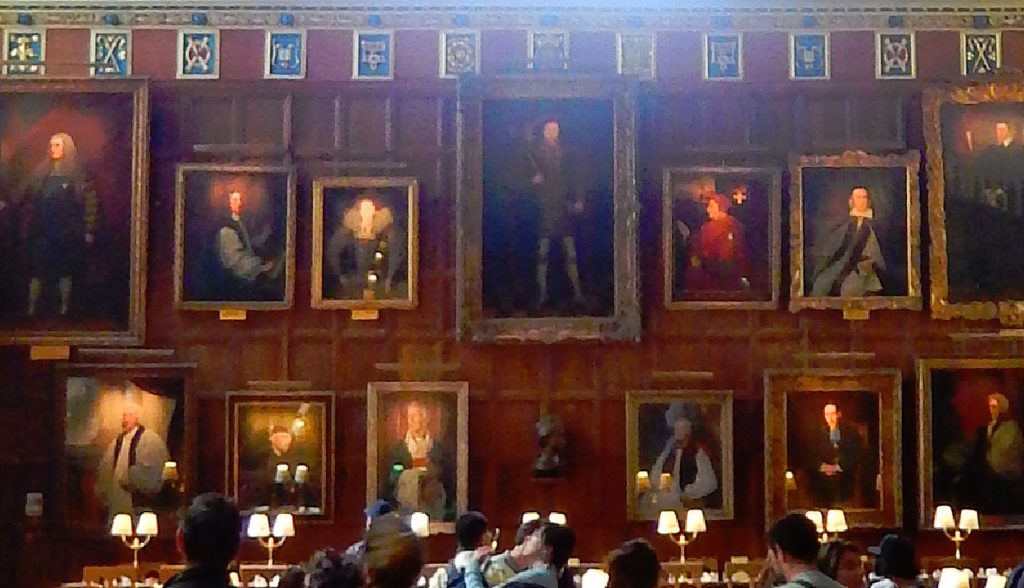
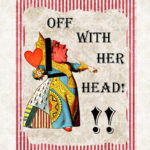
 Above the teachers table in the great hall is at the center a large painting of King Henry III, the founder of Christchurch College, who famously executed two of his wives. In Alice’s adventures, the Red Queen continually shouts “off with her head”.
Above the teachers table in the great hall is at the center a large painting of King Henry III, the founder of Christchurch College, who famously executed two of his wives. In Alice’s adventures, the Red Queen continually shouts “off with her head”.
This makes the small crowned bronze or wooden head sculpture beneath his painting all the more morbid 😉
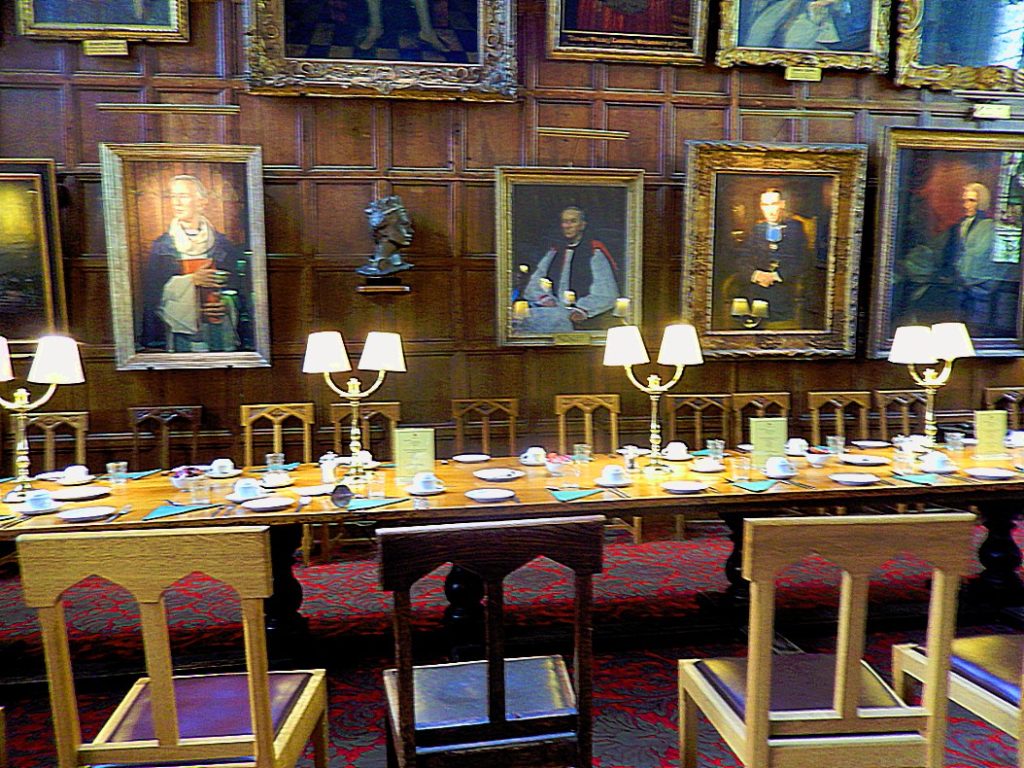 After a last view over the teachers’ table where Dumbledore, McGonagall, Snape and Hagrid sat, we left the Great Hall and walked on towards Christ Church Cathedral…
After a last view over the teachers’ table where Dumbledore, McGonagall, Snape and Hagrid sat, we left the Great Hall and walked on towards Christ Church Cathedral…
Tom Quad
Between the Great Hall and Christ Church Cathedral lies Tom Quad. It is a large quadrangular courtyard. I never read the book Northern light and I even didn’t see its movie The Golden Compass yet, but I had seen lots of photos containing scenes from this movie and Tom Quad was priominently in it:
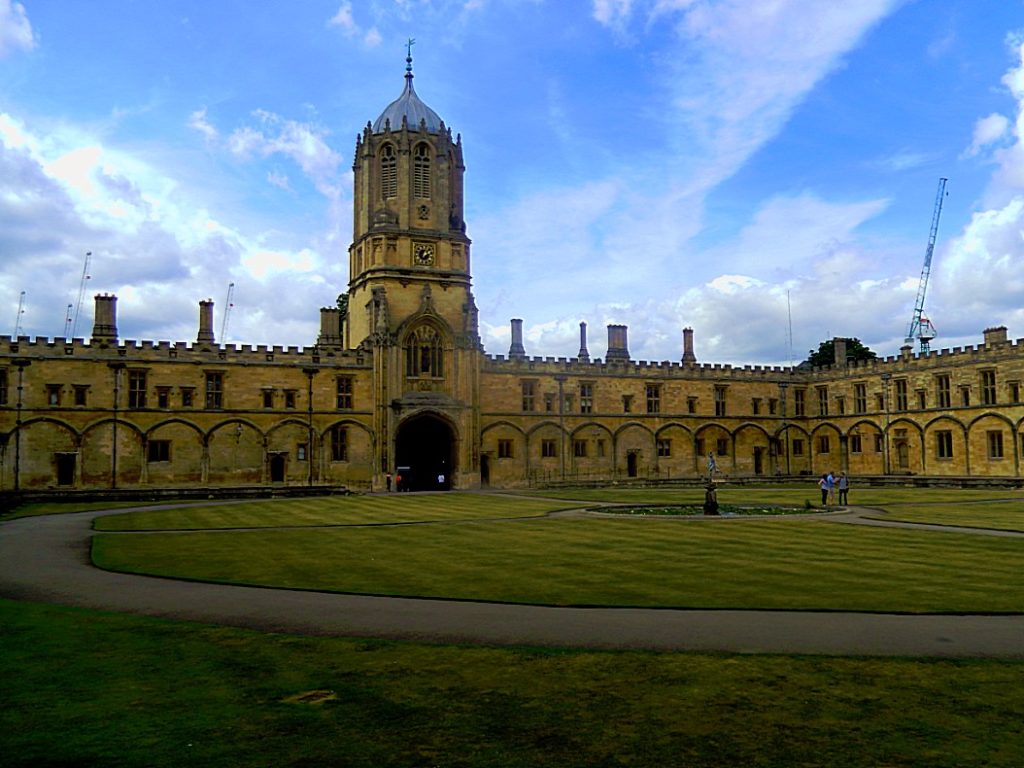 And as it appears in the movie…
And as it appears in the movie…
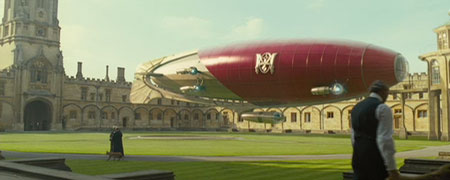 Tom Quad is named after the six-ton bell, Great Tom; which hangs in Sir Christopher Wren’s Tom Tower. A statue of Mercury, the winged Roman god, stands in the fishpond at the centre of Tom Quad.
Tom Quad is named after the six-ton bell, Great Tom; which hangs in Sir Christopher Wren’s Tom Tower. A statue of Mercury, the winged Roman god, stands in the fishpond at the centre of Tom Quad.
Dean Lidell, Alice’s father and his family lived in the Deanery at Tom Quad and Alice must heve passed this place lots of times. Walking on the east side of the quad from the Cathedral to the Deanery, you will be seeing the exact same view that Alice would have seen frequently although the Cathedral was not linked to the Great Quadrangle until 1873. The Deanery faces onto the Quad in the north-eastern corner.
From Tom Quad we entered Christ Church Cathedral…
Christ Church Cathedral
- The Jonah Window
- St. Frideswide Window
- The Shrine
- The Bell Altar
- The Chancel Vault
- St. Catherine Window
- The Becket Window
Christ Church Cathedral is the cathedral of the diocese of Oxford, which consists of the counties of Oxford, Buckinghamshire and Berkshire. It is also the chapel of Christ Church at the University of Oxford. This dual role as cathedral and college chapel is unique in the Church of England.
The cathedral was originally the church of St Frideswide’s Priory. The site was historically presumed to be the location of the nunnery founded by St Frideswide, the patron saint of Oxford, and the shrine now in the Latin Chapel, originally containing relics translated at the rebuilding in 1180, was the focus of pilgrimage from at least the 12th until the early 16th century.
In 1522, the priory was surrendered to Cardinal Wolsey, who had selected it as the site for his proposed college. However, in 1529 the foundation was taken over by King Henry VIII. Work stopped, but in June 1532 the college was refounded by the King. In 1546, Henry VIII transferred to it the recently created see of Oxford from Osney. The cathedral has the name of Ecclesia Christi Cathedralis Oxoniensis, given to it by King Henry VIII’s foundation charter.
The remarkable stone vault is made up of intricate star-shaped patterns to create an image of heaven. Twelve beautiful pendants hang gracefully from it.
There has been a choir at the cathedral since 1526, when John Taverner was the organist and also master of the choristers. The statutes of Cardinal Wolsey’s original college, initially called Cardinal College, mentioned 16 choristers and 30 singing priests.
Christ Church Cathedral is one of the smallest cathedrals in the Church of England.
The nave, choir, main tower and transepts are late Norman. There are architectural features ranging from Norman to the Perpendicular style and a large rose window of the ten-part (ie botanical) type.
The stained glass windows are very old and they are connected to the Cathedrals’ and colleges’ history as well as to a classic childrens book named Alice in Wonderland…
In the St. Fideswide Window, the upper panel shows a ship of souls carrying St. Frideswide to heaven. The brilliantly coloured lower window panels tell the story of this eighth century local saint.
There’s a lot going on in this window which I’m not going to explain. I’m focussing on the top far right panel:
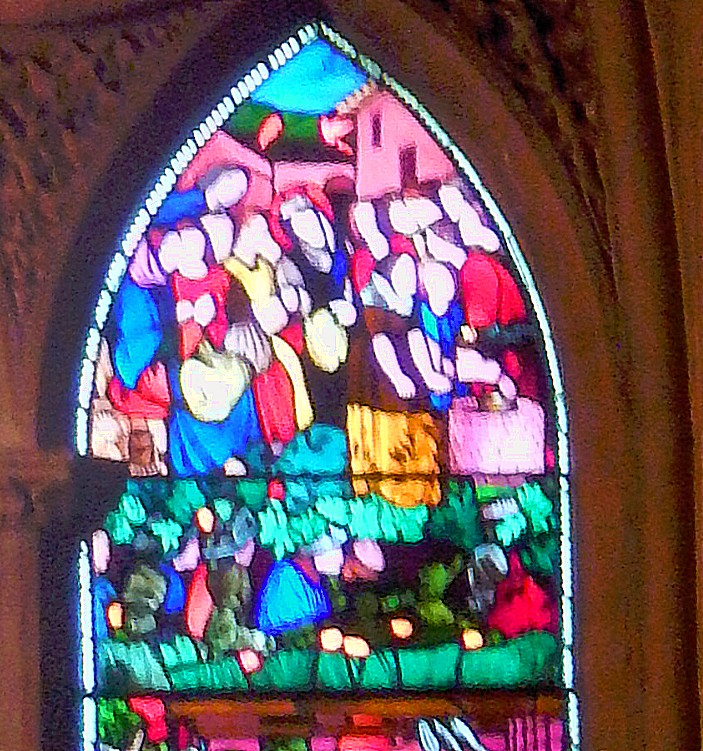 This panel shows the Binsey St. Margareths Well. The well was a place of pilgrimage in the middle ages for people who wished to be restored to health.
This panel shows the Binsey St. Margareths Well. The well was a place of pilgrimage in the middle ages for people who wished to be restored to health.
Binsey’s (Binsey is a village by the River Thames about 1.5 miles (2.4 km) northwest of the centre of Oxford) most noted feature is the parish church of St Margaret, set at some distance north of the surviving houses. It dates from the 12th century and is a Grade I Listed Building. Its fame lies mostly in that just outside its west end and belltower stands St Margaret’s Well, a Grade II Listed Building, which is the model for Lewis Carroll’s ‘Treacle Well’ from Alice’s Adventures in Wonderland; this is a holy well dedicated to St Frideswide, patron saint of Oxford. According to legend, she fled to Binsey in a bid to escape marriage to a king of Mercia, whose pursuit of her was halted when he was struck blind at the gates of Oxford. Frideswide’s prayers brought forth a healing spring, whose waters cured his blindness, and the spring was walled into a shallow well which became a focus for pilgrimage, the mediaeval sense of the word ‘treacle’ meaning ‘healing unguent’. The well became a pilgrimage site in mediaeval times.
Another stained glass window connected to Alice is connected to real life Alice Lidell:
The center panel of this memorial window shows Saint Catherine of Alexandria of whom is said that the face resembles that of Edith Lidell who lies burried together with her parents in a vault in a private garden behind this window.
Edith became engaged to Aubrey Harcourt (the heir of Nuneham Park where she and her sister played on the riverbank on picnics with Dodgson) in 1876, but within days of the announcement, she died in great agony of peritonitis.
There were some other beautiful stained glass windows too…
This window is of great interest because only the figure of Jonah is made of stained glass. The rest of the window consists of small panels of painted glass, showing the city of Nineveh in minute detail.
One other window in particular I still like to mention because it contains the only image of Sir Thomas Becket’s left in whole England…
Focus on the centre piece..
This beautiful medieval window is the oldest in the cathedral, and contains a rare panel showing the martyrdom of Archboshop Thomas Becket, who died at Canterbury in 1170. Becket is kneeling between a monk and the four knights who murdered him. The panel was defaced in the 16th century, and the original face of Becket is now missing.
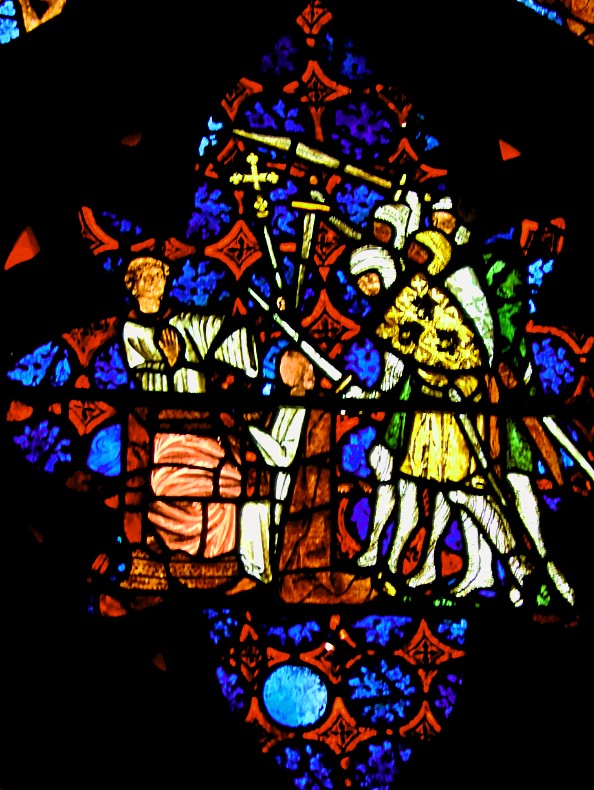 After Becket (Arch Bishop of Canterbury) was ordered to be killed by King Henry II, the king also ordered every depiction of the archbishop to be destroyed. Even his grave in the Canterbury Cathedral is missing…
After Becket (Arch Bishop of Canterbury) was ordered to be killed by King Henry II, the king also ordered every depiction of the archbishop to be destroyed. Even his grave in the Canterbury Cathedral is missing…
Now we left the Cathedral and returned to its cloisters…
The Cloisters
As I mentioned before when entering Christ Church College I immediately got a sense of familiarity when walking through these cloisters and seeing the garden at its center. Well they also popped up in Harry Potter and the Philosopher’s Stone as a backdrop to Harry being shown his father’s Quidditch trophy by Hermione.
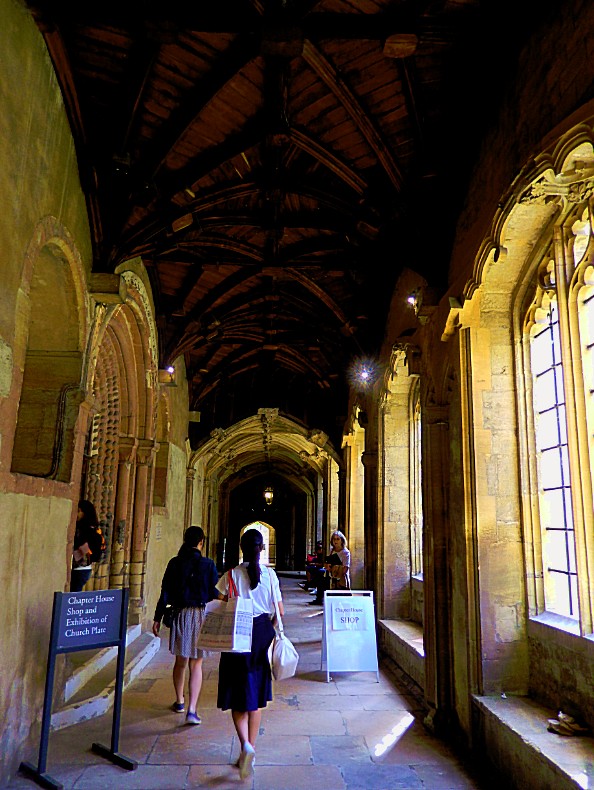
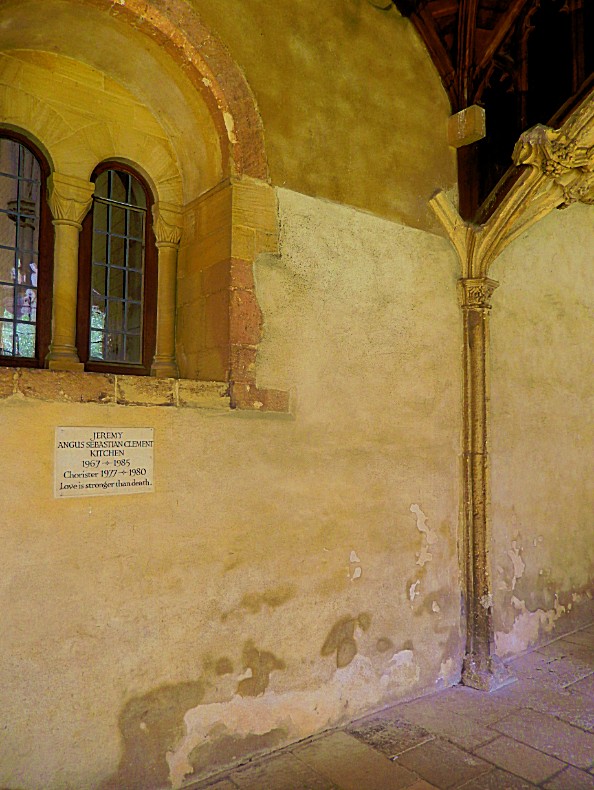
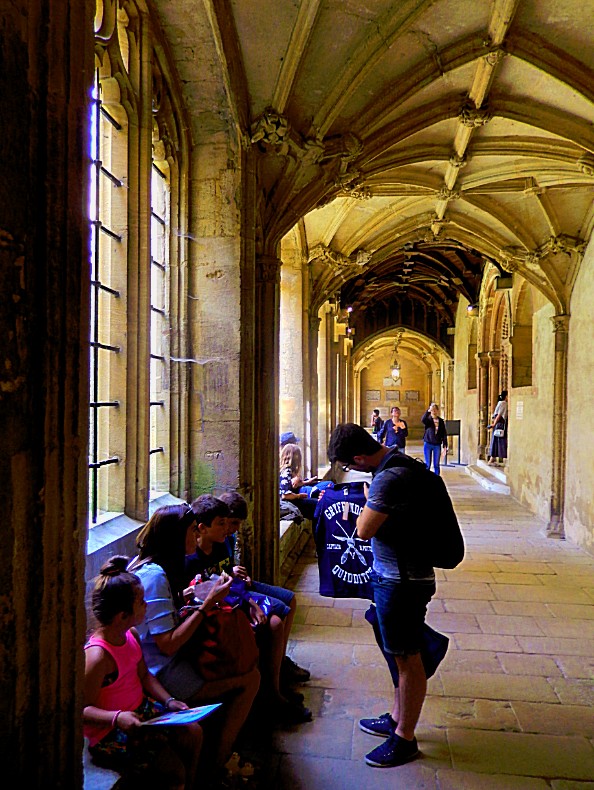 And here how the cloisters and garden appeared in the movie:
And here how the cloisters and garden appeared in the movie:
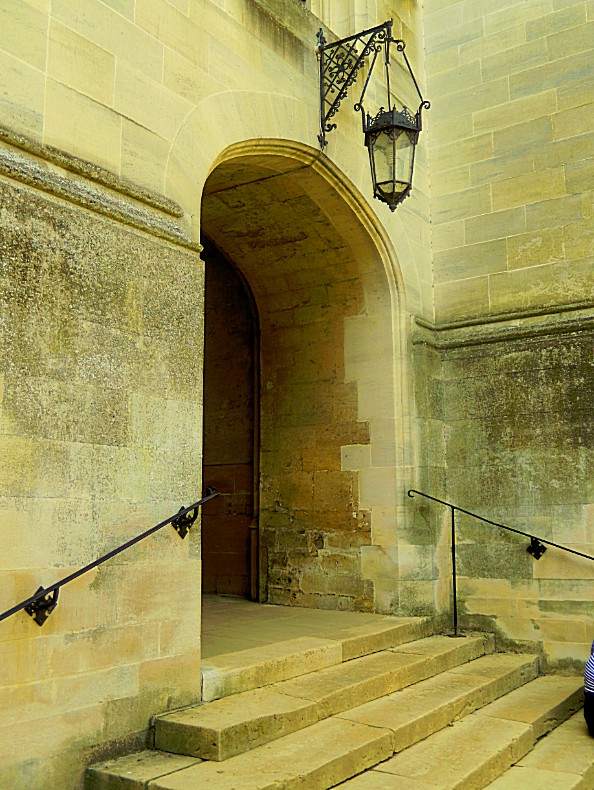 We now walked quickly back towards the entrance gate of Meadow Building and crossed a part of Christ Church Meadow and reached Merton College
We now walked quickly back towards the entrance gate of Meadow Building and crossed a part of Christ Church Meadow and reached Merton College
Christ Church Meadow
Christ Church Meadow was a place that was crossed a lot by Alice, e.g. to reach the shop mentioned before.
Then we reached Merton College.
Merton College
Although it was not possible to visit Merton College on this guided tour, there is an interesting thing to tell:
JRR Tolkien, the author of The Lord of the Rings and The Hobbit, and an expert on Old and Middle English, was Merton Professor of English Language and Literature from 1945 to 1959.
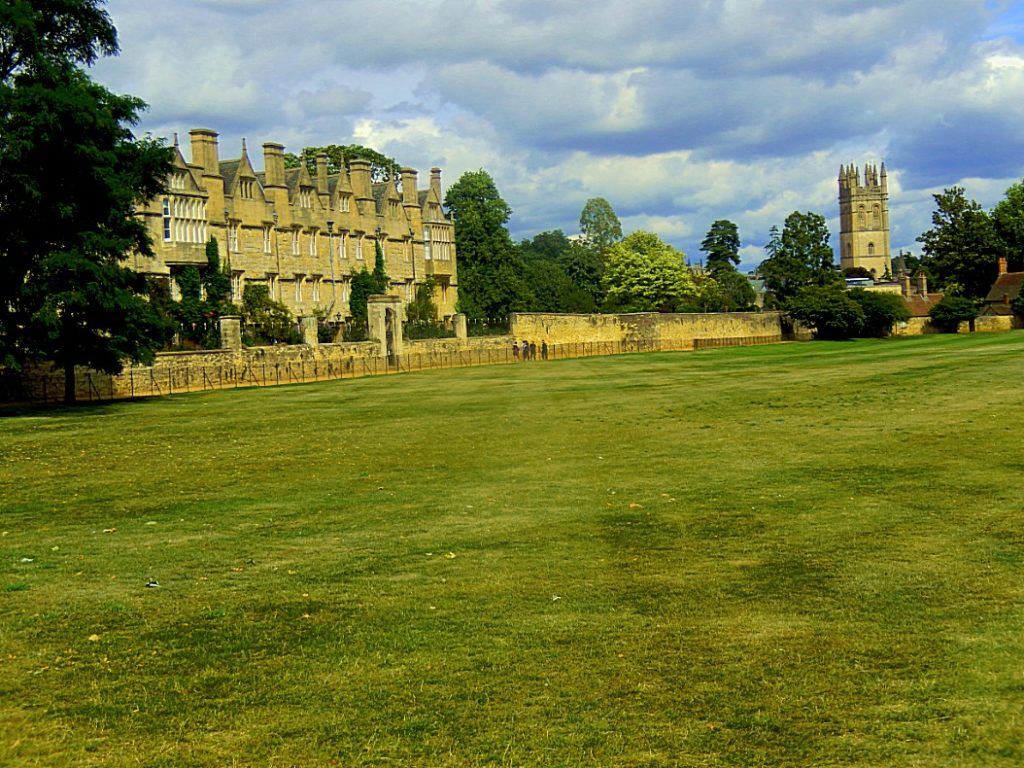
Behind one of the windows Professor J.R.R. Tolkien must have sat down and watched over Christ Church Meadow…
From here he could walk easily to one of his favorite old trees at the Botanic Gardens.
We walked a small path between Christ Church College and Merton College and reached Magpie Lane and High Street. Going left and right into Turl Street we reached Exeter College.
Exeter College
We reached the Quad, but the we couldn’t get in any further because there was a wedding ceremony in the chapel.
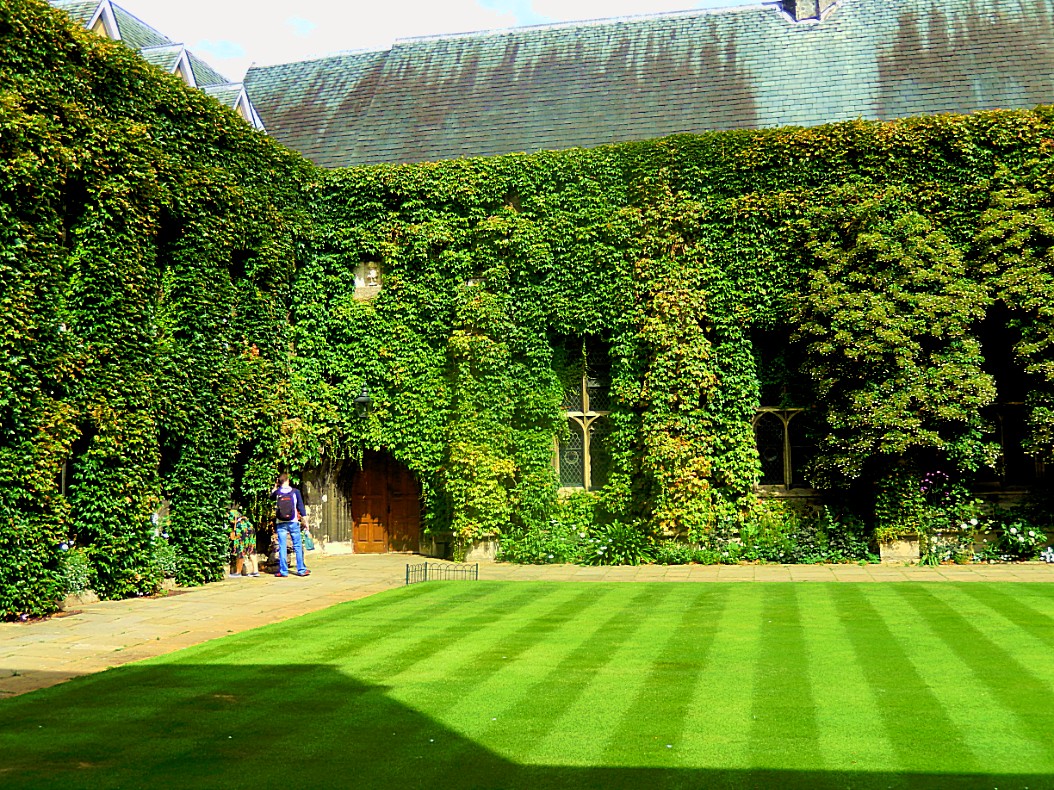
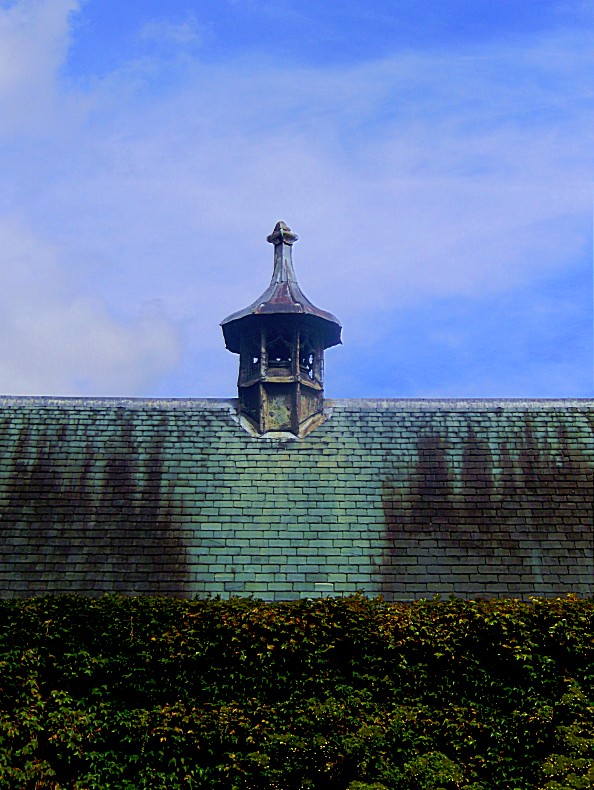
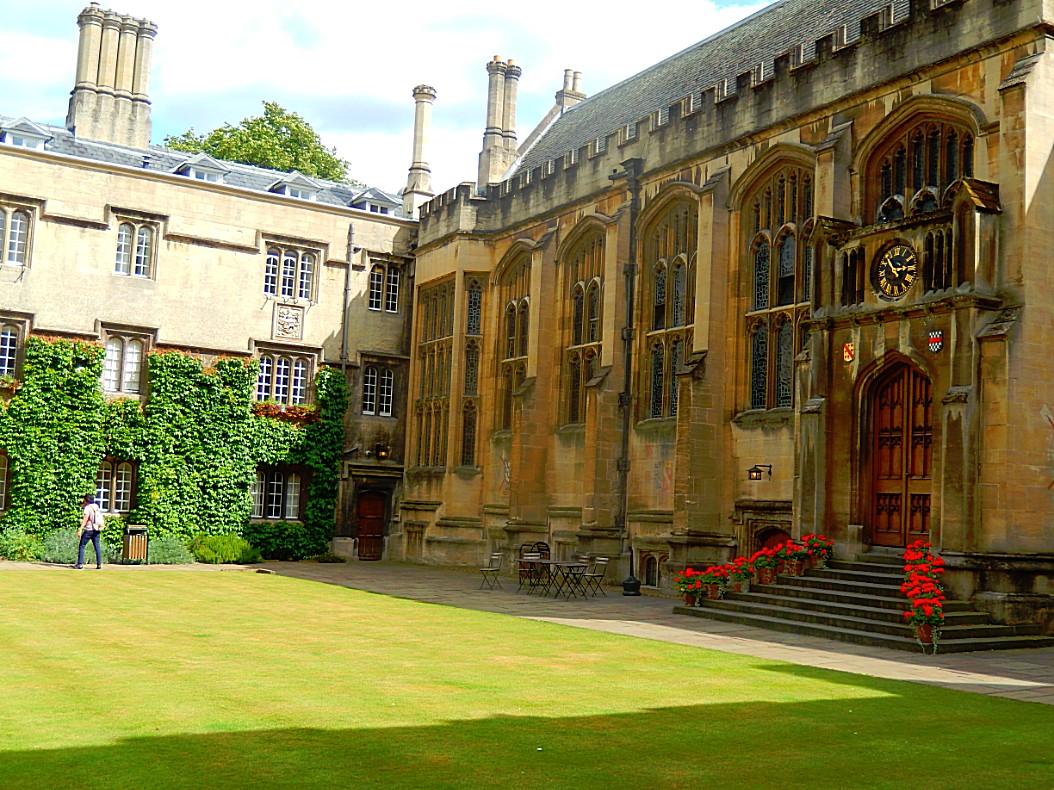
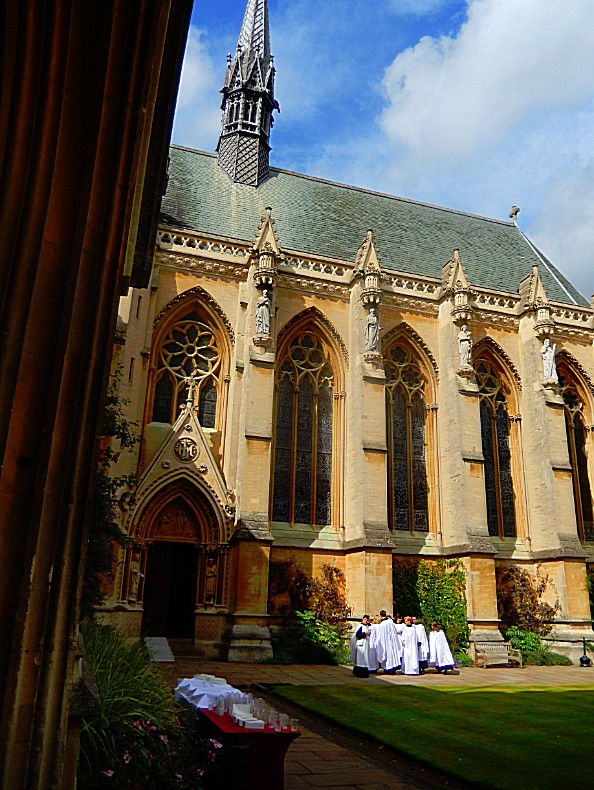 And I really would have liked to visit this chapel because of this:
And I really would have liked to visit this chapel because of this:
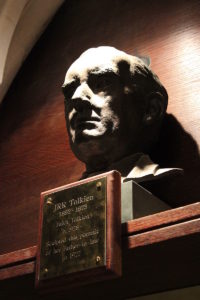 The chapel has a bust of Tolkien, who was a student at Exeter.
The chapel has a bust of Tolkien, who was a student at Exeter.
In October 1911, Tolkien began studying at Exeter College, Oxford. He initially studied Classics but changed his course in 1913 to English Language and Literature, graduating in 1915 with first-class honours in his final examinations.
I can’t tell you how glad I am he did 😀 He went on and wrote The Hobbit and even better The Lord of the Rings, my favorite book…
Then we walked on to Broad Street and turned right. Soon on the right we reached the Sheldonian Theatre.
The Sheldonian Theatre
The Sheldonian Theatre, located in Oxford, England, was built from 1664 to 1669 after a design by Christopher Wren for the University of Oxford. The building is named after Gilbert Sheldon, chancellor of the University at the time and the project’s main financial backer. It is used for music concerts, lectures and University ceremonies, but not for drama until 2015 when the Christ Church Dramatic Society staged a production of The Crucible.
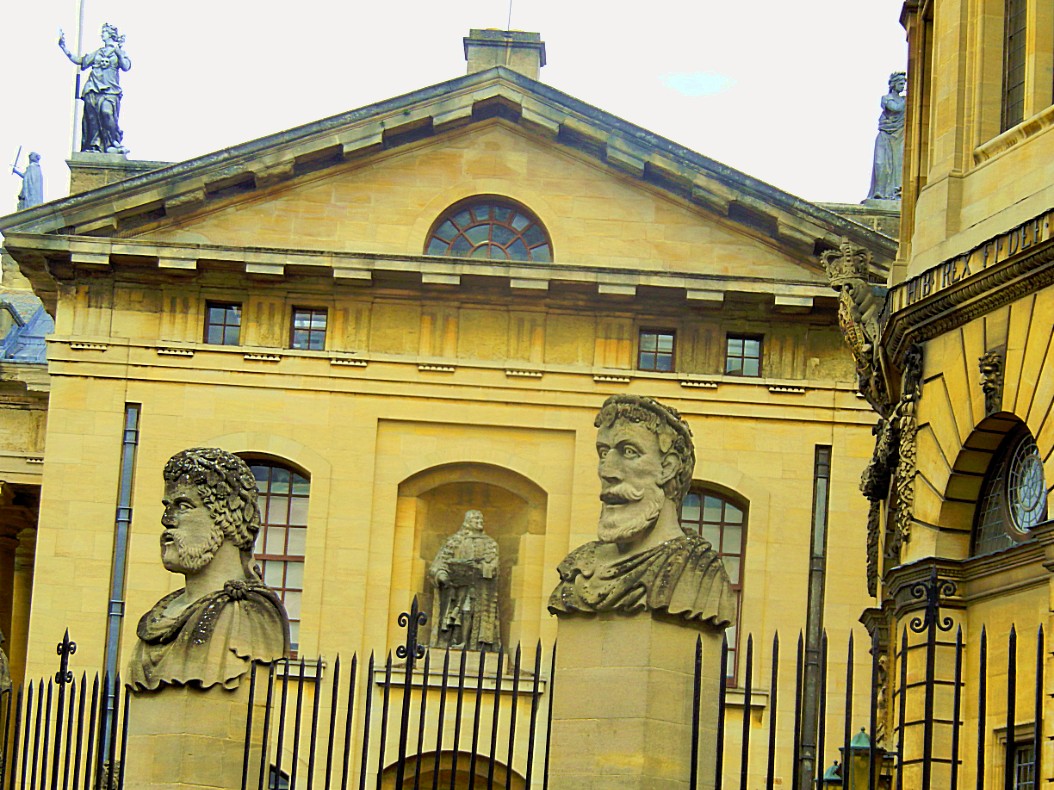
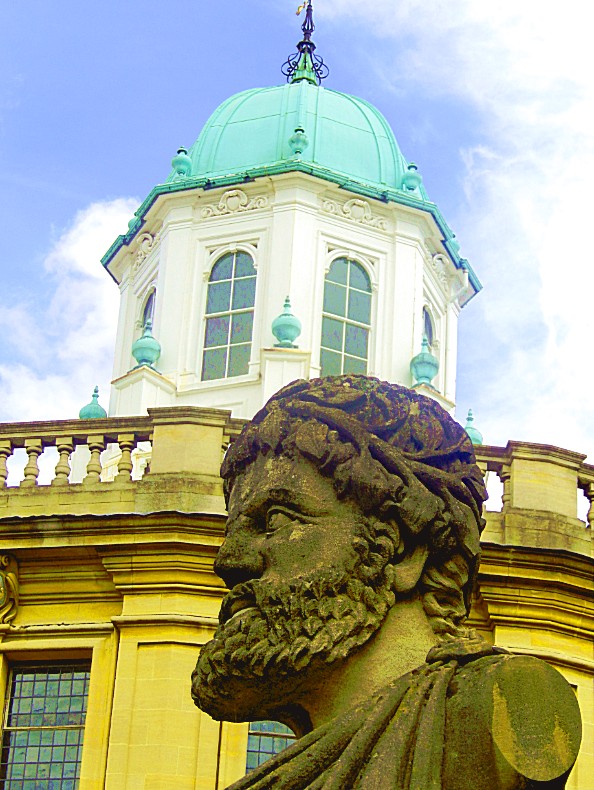 We walked from Broad Street through a small gate and around the theatre to a square at it’s back. Oppsite the theatre was the buiklding which for many, many years now I loved to visit most in all of England:
We walked from Broad Street through a small gate and around the theatre to a square at it’s back. Oppsite the theatre was the buiklding which for many, many years now I loved to visit most in all of England:
The Bodleian Library
The Bodleian Library (/ˈbɒdliən, bɒdˈliːən/) is the main research library of the University of Oxford, and is one of the oldest libraries in Europe. With over 12 million items, it is the second-largest library in Britain after the British Library. Under the Legal Deposit Libraries Act 2003 it is one of six legal deposit libraries for works published in the United Kingdom and under Irish Law it is entitled to request a copy of each book published in the Republic of Ireland. Known to Oxford scholars as “Bodley” or “the Bod”, it operates principally as a reference library and, in general, documents may not be removed from the reading rooms.
In 2000, a number of libraries within the University of Oxford were brought together for administrative purposes under the aegis of what was initially known as Oxford University Library Services (OULS), and since 2010 as the Bodleian Libraries, of which the Bodleian Library is the largest component.
All colleges of the University of Oxford have their own libraries, which in a number of cases were established well before the foundation of the Bodleian, and all of which remain entirely independent of the Bodleian. They do, however, participate in OLIS (Oxford Libraries Information System), the Bodleian Libraries’ online union catalogue. Much of the library’s archives were digitized and put online for public access in 2015.
The Divinity School
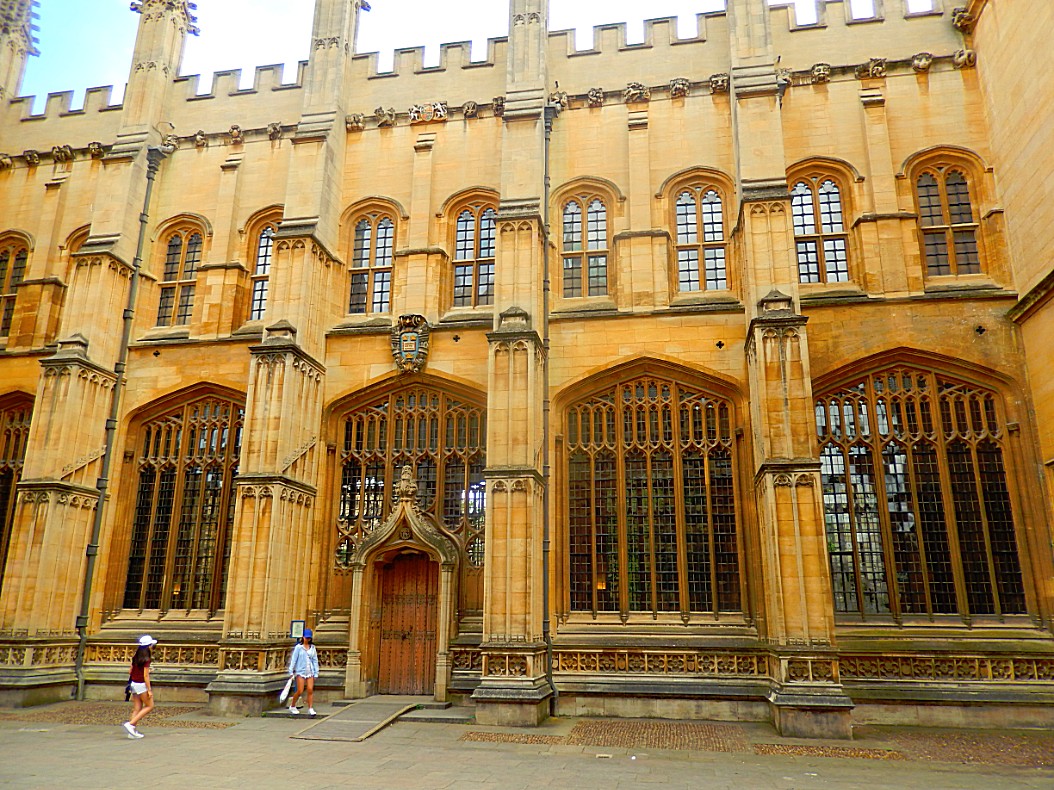 The part of the building were looking at at the above picture is the Divinity School.
The part of the building were looking at at the above picture is the Divinity School.
The Divinity School is a medieval building and room in the Perpendicular style in Oxford, England, part of the University of Oxford. Built between 1427 and 1483, it is the oldest surviving purpose-built building for university use, specifically for lectures, oral exams and discussions on theology. It is no longer used for this purpose, although Oxford does offer degrees in divinity taught by its Faculty of Theology, which is housed at the Theology Faculty Centre, 41 St Giles’, Oxford.
The ceiling consists of very elaborate lierne vaulting with bosses (455 of them), designed by William Orchard in the 1480s.
The building is physically attached to the Bodleian Library (with Duke Humfrey’s Library on the first floor above it the Bodleian Library), and is opposite the Sheldonian Theatre where students matriculate and graduate. At the far end from the Bodleian Library entrance, a door leads to Convocation House (built 1634–7).
To the left of the Divinity School was the actual main building of the Bodleian Library.
Both; the main building and the Divinity School had lots of small sculptures a bit underneath the roof, of which many dealt with literature or Children’s literature:
Three Men in a Boat (To Say Nothing of the Dog), published in 1889, is a humorous account by English writer Jerome K. Jerome of a two-week boating holiday on the Thames from Kingston upon Thames to Oxford and back to Kingston. The book was initially intended to be a serious travel guide, with accounts of local history along the route, but the humorous elements took over to the point where the serious and somewhat sentimental passages seem a distraction to the comic novel. One of the most praised things about Three Men in a Boat is how undated it appears to modern readers – the jokes seem fresh and witty even today.
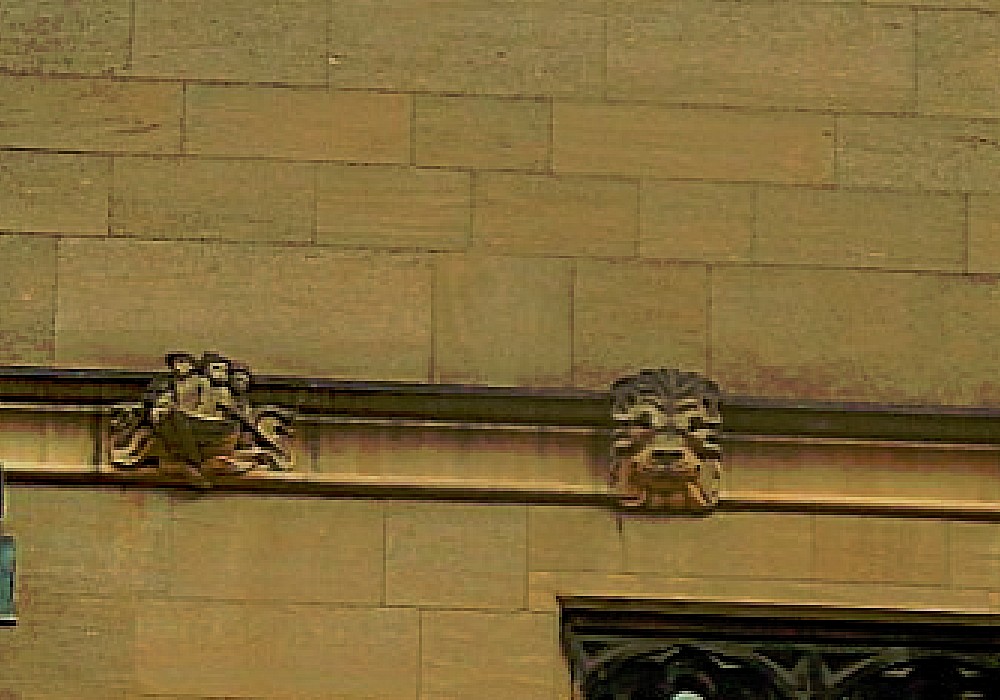
Right of Three men in a boat is probably a depiction of the great lion Aslan from the Narnia Chronicles by C.S. Lewis.
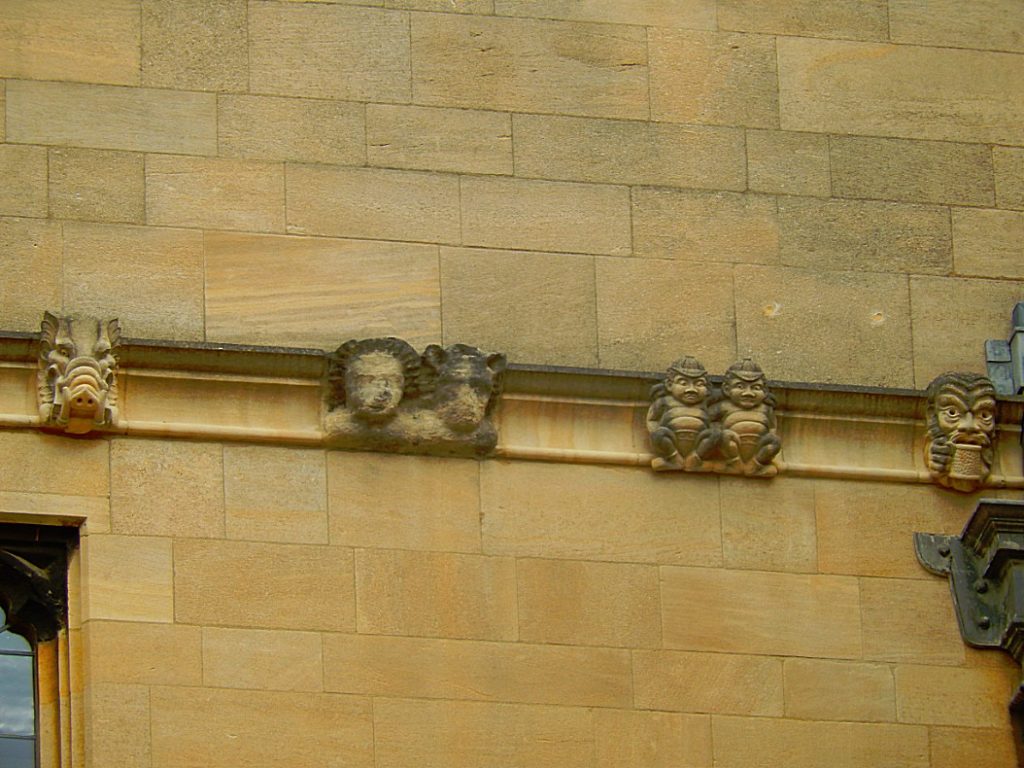 Then I entered the Divinity Room and that strange sense of familiarity of deja vu, struck again…
Then I entered the Divinity Room and that strange sense of familiarity of deja vu, struck again…
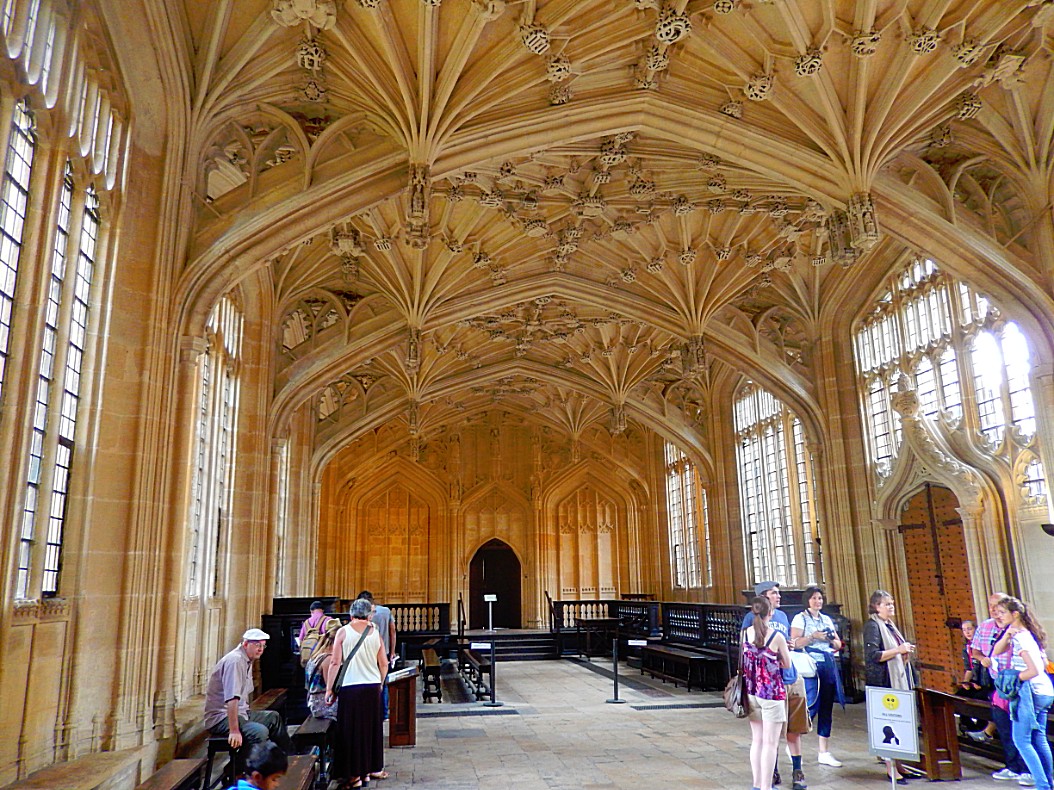 This famous hall with its classic gothic vaulted ceiling was used as Hogwarts Infirmary.
This famous hall with its classic gothic vaulted ceiling was used as Hogwarts Infirmary.
Harry ends up here at the end of the film cycle after his confrontation with Voldermort.
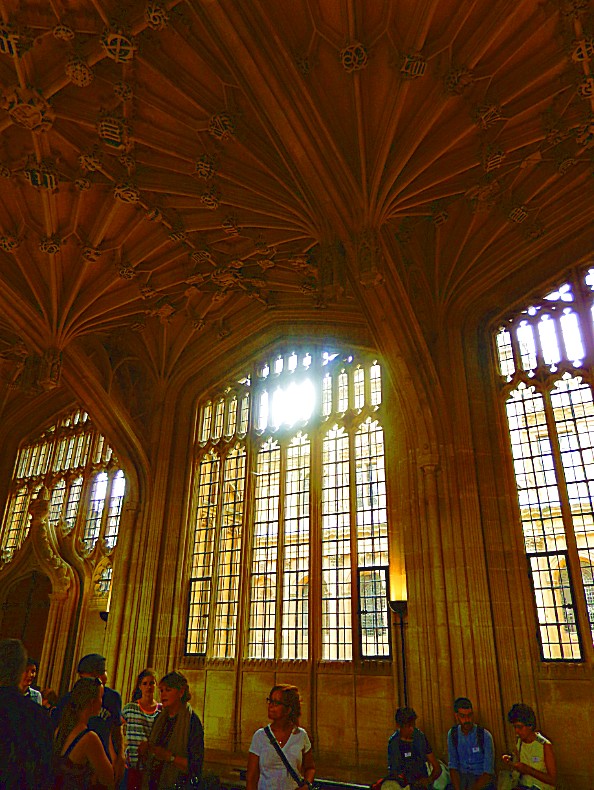
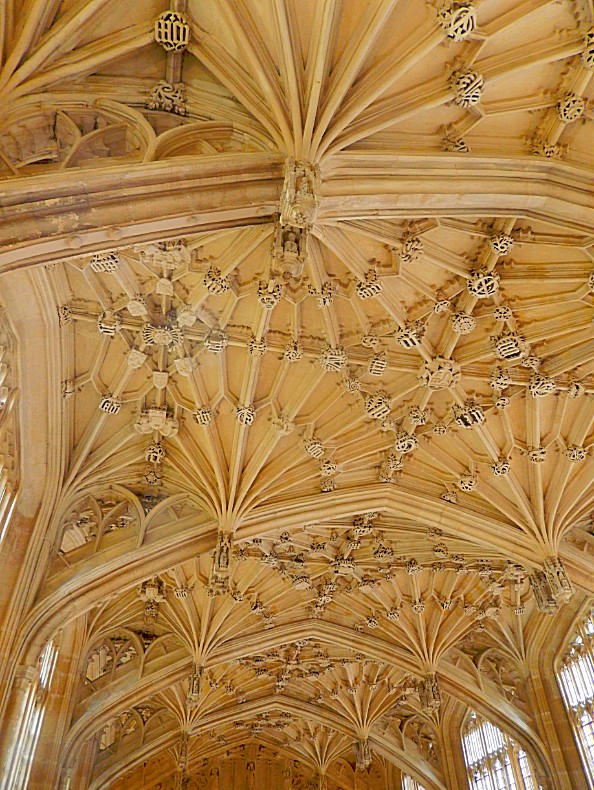
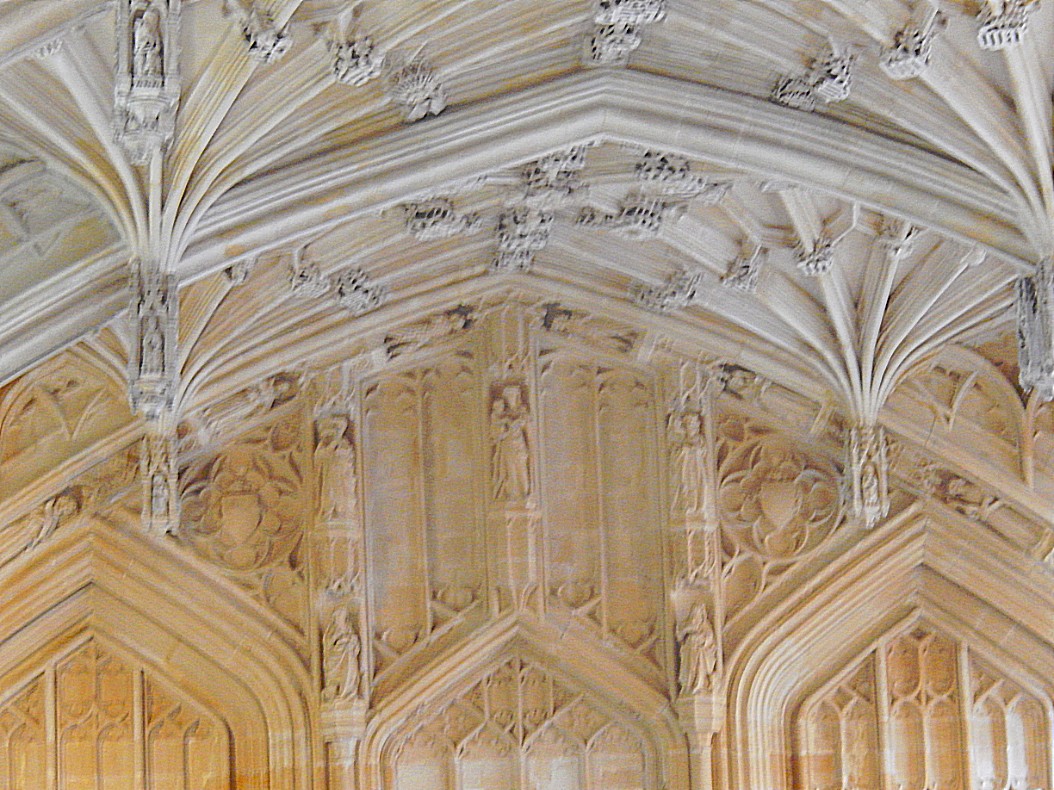
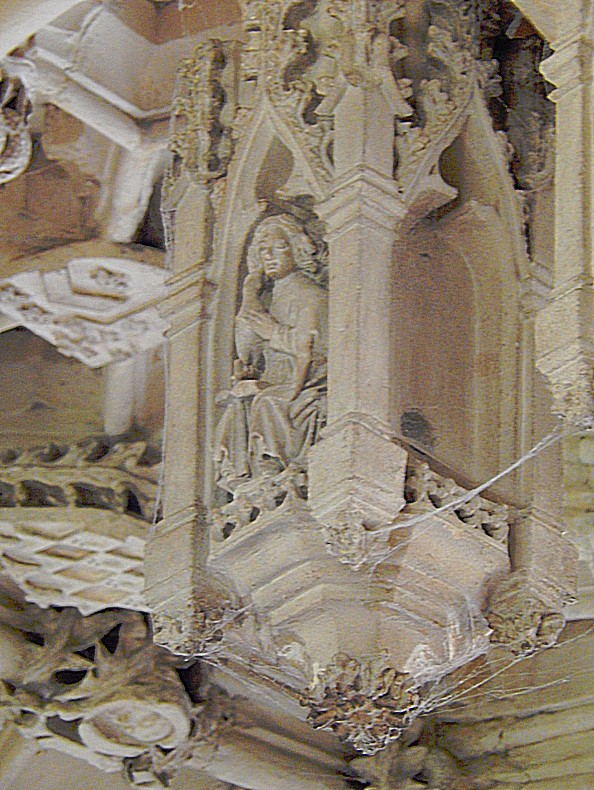 Then The wandelgek left the Divinity Room and walked towards the Clarendon Building.
Then The wandelgek left the Divinity Room and walked towards the Clarendon Building.
Clarendon Building
The Clarendon Building is an early 18th-century neoclassical building of the University of Oxford. It is in Broad Street, Oxford, England, next to the Bodleian Library and the Sheldonian Theatre and near the centre of the city. It was built between 1711 and 1715 and is now a Grade I listed building.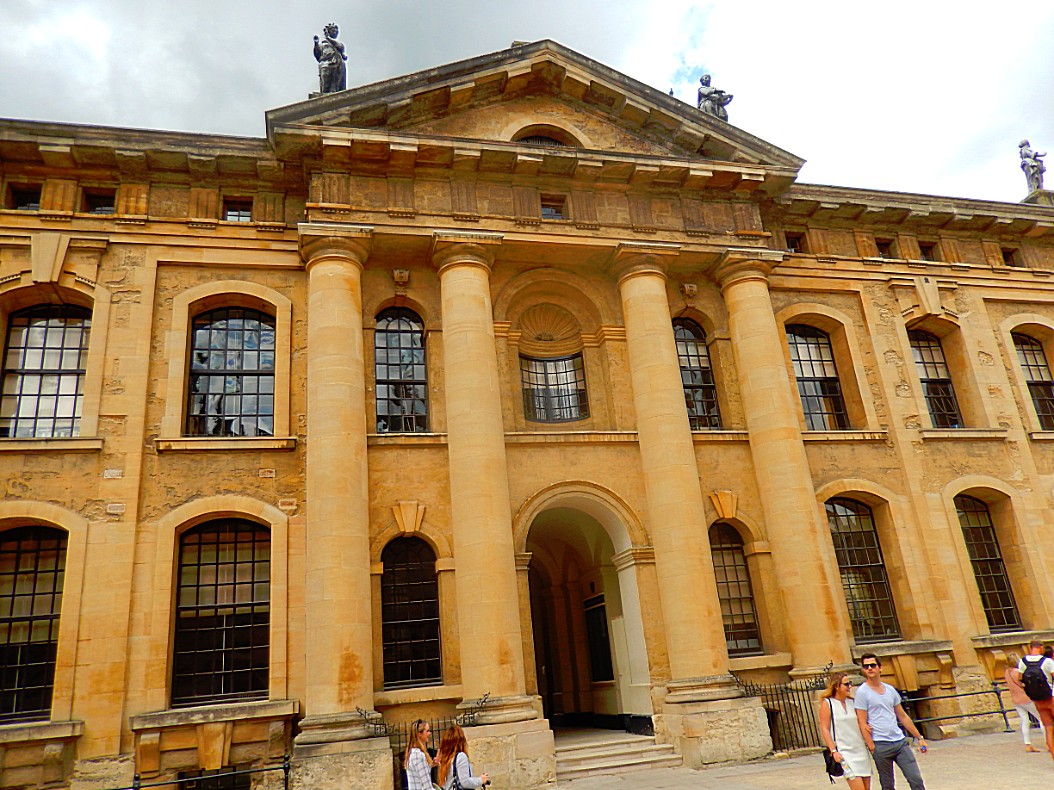 After passing the Clarendon Building, we walked right into Catte Street towards the awesome Radcliffe Camera.
After passing the Clarendon Building, we walked right into Catte Street towards the awesome Radcliffe Camera.
The Radcliffe Camera
The Radcliffe Camera (Camera, meaning “room” in Latin; colloquially, “Rad Cam” or “The Camera“) is a building of Oxford University, England, designed by James Gibbs in neo-classical style and built in 1737–49 to house the Radcliffe Science Library. It is sited to the south of the Old Bodleian, north of St. Mary’s Church, and between Brasenose College to the west and All Souls College to the east.
The Library’s construction and maintenance was funded from the estate of John Radcliffe, a notable doctor, who left £40,000 upon his death in 1714. According to the terms of his will, construction only began in 1737, although the intervening period saw the complex purchase of the site. The exterior was complete in 1747 and the interior finished by 1748, although the Library’s opening was delayed until 13 April 1749.
Upon completion, Francis Wise was appointed as its first librarian. Until 1810, the Library housed books covering a wide range of subjects, but under Dr George Williams it narrowed its focus to the sciences. Williams brought the Library from a state of neglect up to date, although by 1850 the Radcliffe Library still lagged behind the Bodleian. It was at this point that Henry Wentworth Acland, then librarian, laid out plans for the Radcliffe Library building to merge with the University and the Library’s collection of books to be moved to the newly constructed Radcliffe Science Library, which were accepted by the Library’s trustees and the University. It was at this point that the building became known as the Radcliffe Camera, serving as a reading room for the Bodleian.
The Radcliffe camera borders the beautiful All Souls College… (left on the above picture)
Then we walked back towards the Bridge of Sighs and entered New College Lane towards the entrance of New College.
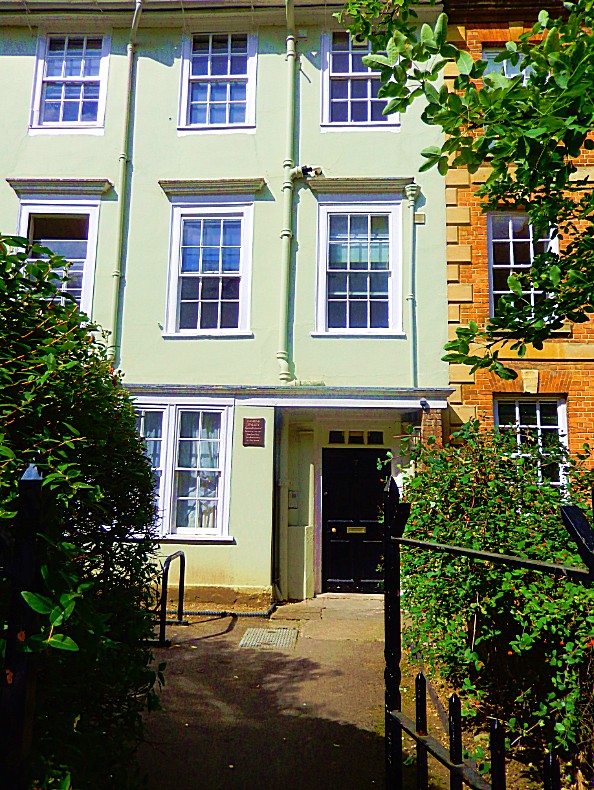 Before reaching the entrance to New College, we passed the home and Observatory of Edmund Halley, the famous discoverer of Halley’s Comet…
Before reaching the entrance to New College, we passed the home and Observatory of Edmund Halley, the famous discoverer of Halley’s Comet…
New College
Entering New College my guide took me to its Cloisters which had been in the Harry Potter movies, specially in The Goblet of Fire…
Despite its name, New College is one of the oldest of the Oxford colleges; it was founded in 1379 by William of Wykeham, Bishop of Winchester, as “The College of St Mary of Winchester in Oxford”, the second college in Oxford to be dedicated to the Blessed Virgin Mary.
New College is one of the constituent colleges of the University of Oxford in the United Kingdom. Founded in 1379 by William of Wykeham, the full name of the college is The Warden and Scholars of St Mary’s College of Winchester in Oxford. The name “New College”, however, soon came to be used following its completion in 1386 to distinguish it from the older existing college of St. Mary, now known as Oriel College.
In 2017, the college ranked first in the Norrington Table, a table assessing the relative performance of Oxford’s undergraduates in final examinations. Historically, it has been ranked highly. It has the 3rd highest average Norrington Table ranking over the previous decade. The college is between Holywell Street and New College Lane (known for Oxford’s Bridge of Sighs), next to All Souls College, Harris Manchester College, Hertford College, The Queen’s College and St Edmund Hall. The college’s sister college is King’s College, Cambridge.
The college is one of the main choral foundations of the University of Oxford. The college choir is regarded as one of the leading choirs of the world, and has recorded over one hundred albums; it has been awarded two Gramophone Awards.
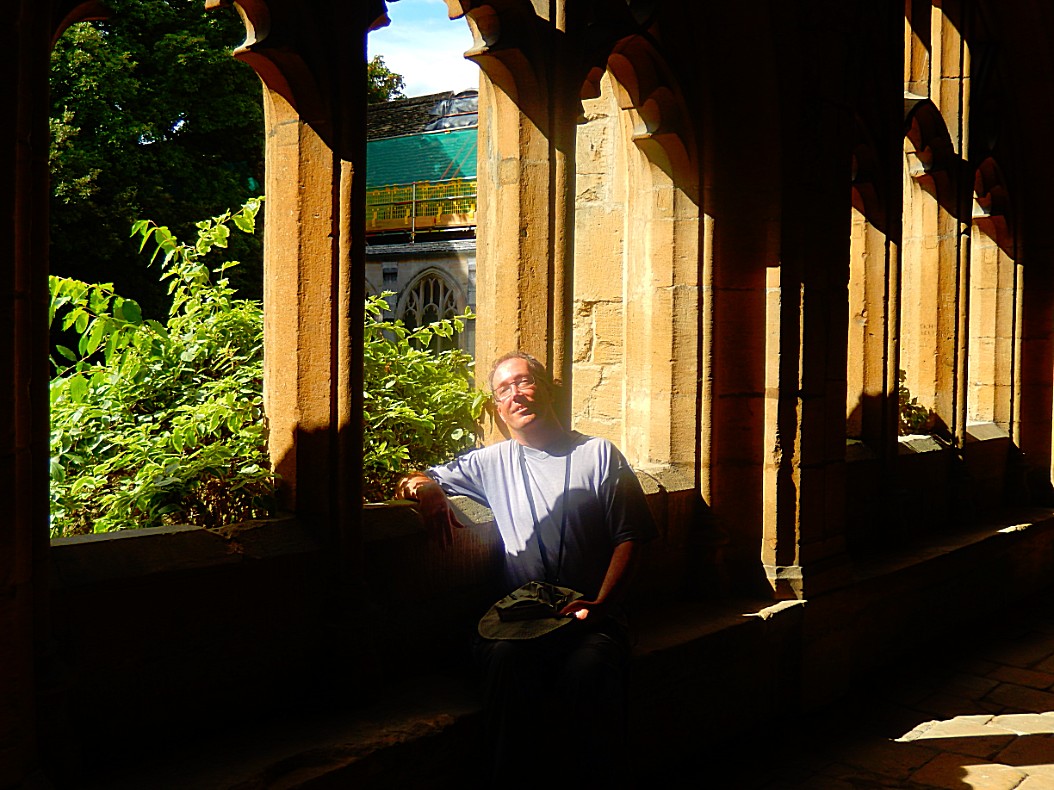 New College is one of the wealthiest colleges in Oxford University. As of June 2015, it had a financial endowment in excess of £190 million, and net assets of over £220 million.
New College is one of the wealthiest colleges in Oxford University. As of June 2015, it had a financial endowment in excess of £190 million, and net assets of over £220 million.
The Cloisters
In Harry Potter & the Goblet of Fire, many of the other students have turned against Harry – some are even wearing ‘Harry Stinks’ badges. The cloisters at New College, Oxford were used for a memorable segment of the film where Moody turns Malfoy into a ferret. The inside of the cloisters are seen in the movie along with several scenes outside around the giant oak tree.
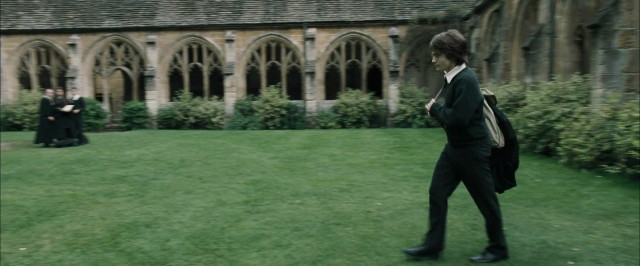
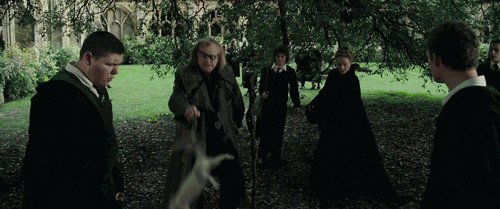
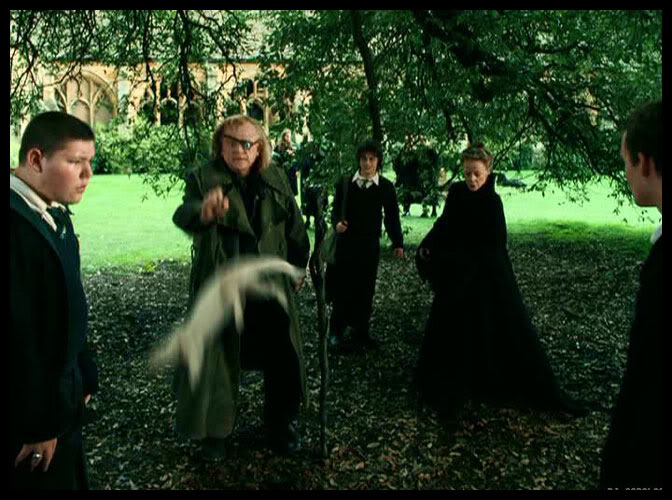 The real tree in which Malfoy sat and underneath which he was turned in to a ferret:
The real tree in which Malfoy sat and underneath which he was turned in to a ferret:
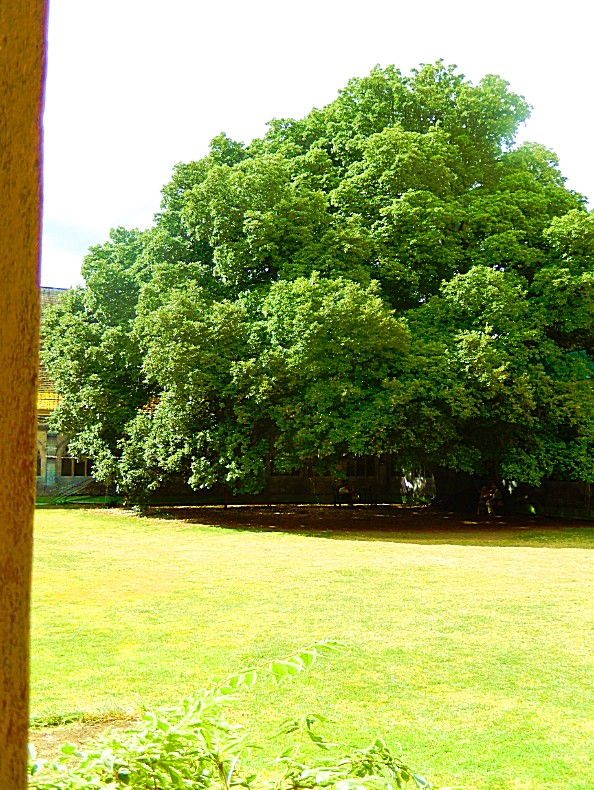
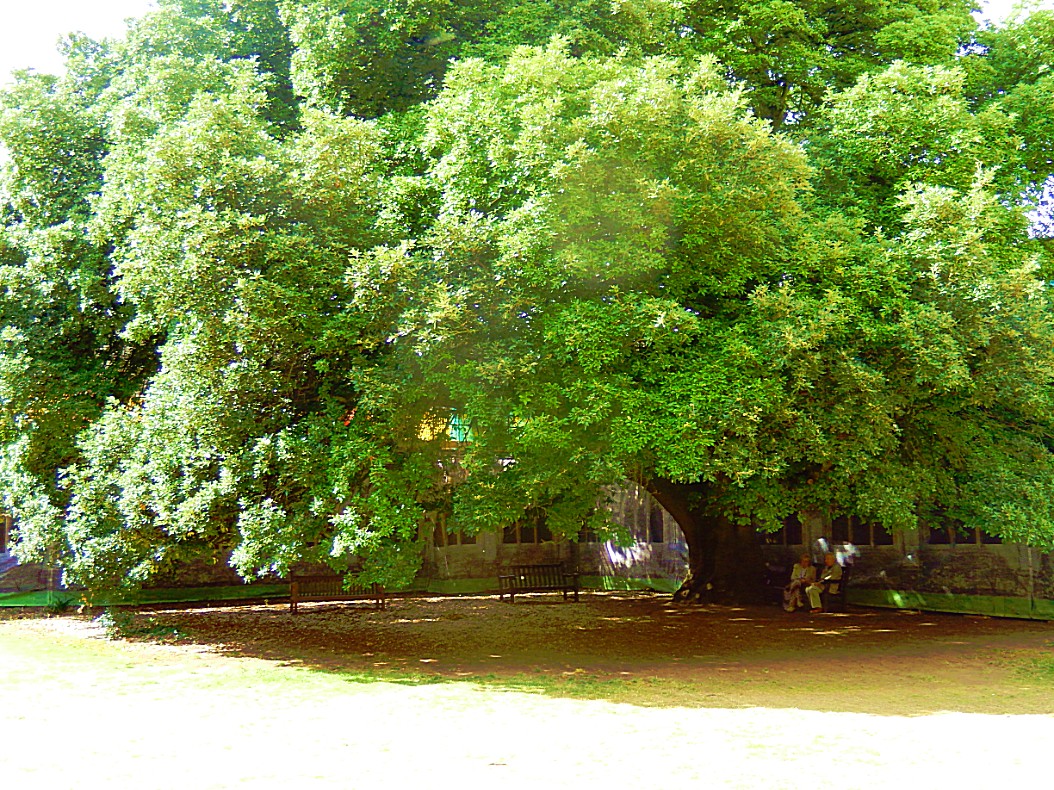
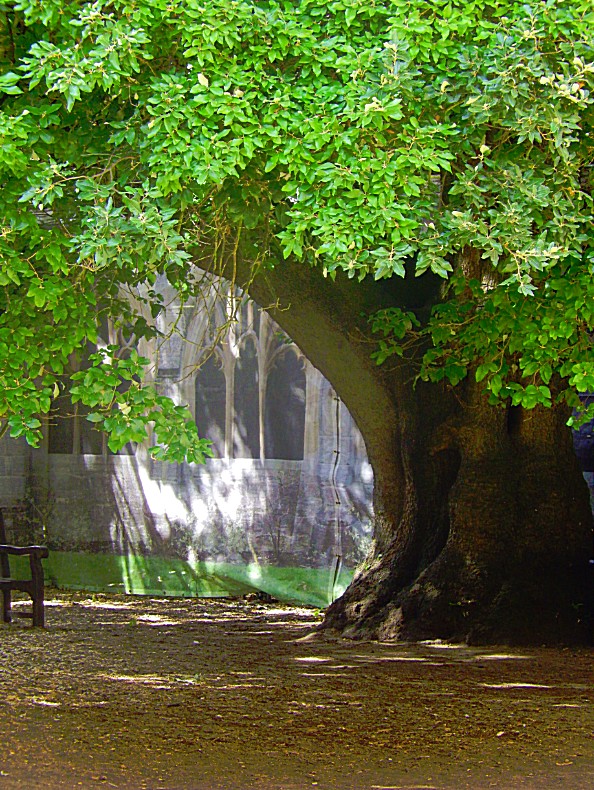 Above the cloister courtyard was a high bell tower which also had these beautiful sculptured figurines near to its top…
Above the cloister courtyard was a high bell tower which also had these beautiful sculptured figurines near to its top…
The Bell Tower
The bell tower contains one of the oldest rings of ten bells, which is rung by the Oxford Society of Change Ringers and the Oxford University Society of Change Ringers.
Next we walked through a door and found this wonderfull chapel…
The Chapel
The cloisters and the chapel are of particular note; much of the medieval stained glass in the ante-chapel has recently been restored. Renowned for its grand interior, some of the stained glass windows were designed by the 18th-century portraitist Sir Joshua Reynolds and contains works by Sir Jacob Epstein and El Greco. For example, the Great West window shows a design by Sir Joshua Reynolds.
The organ was built by the firm of Grant, Degens, and Bradbeer in 1969, in a case designed by George Pace; somewhat revolutionary at the time, the instrument remains no less remarkable and idiosyncratic today. The choir stalls contain 62 14th-century misericords which are of outstanding beauty — several of New College’s misericords were copied during the Victorian era, for use at Canterbury Cathedral. The niches of the reredos were provided by Sir Gilbert Scott and were fitted with statues in the 19th century. Near the east end of the chapel is the Founder’s Crosier, a relic overlaid with silver gilt and enamel that resembles a pastoral staff. This was exhibited at South Kensington in 1862.
After having spent some time photographing, we left New College in the east and walked passed the ancient Oxford city walls towards Queens Lane and back to Catte Street and the Bridge of Sighs….
City Wall
The ancient Oxford City Wall, belonging to New College, is often noted. When William of Wykeham acquired the land on which to build the college, he agreed to maintain the city wall. Every three years the Lord Mayor and Corporation of the City of Oxford take a walk along the wall to make sure that the obligation is being fulfilled, a tradition dating back to the college’s foundation in 1379.
Here the guided tour on Children’s Literature ended.
Bridge of Sighs
Hertford Bridge, often called “the Bridge of Sighs“, is a skyway joining two parts of Hertford College over New College Lane in Oxford, England. Its distinctive design makes it a city landmark.
Misnomer and myth
The bridge is often referred to as the Bridge of Sighs because of its supposed similarity to the famous Bridge of Sighs in Venice. However, Hertford Bridge was never intended to be a replica of the Venetian bridge, and instead it bears a closer resemblance to the Rialto Bridge in the same city.
In Cambridge is another Bridge of Sighs which also is linked to the Bridge of Sighs in Venice, but again, apart from both bridges being covered, there is no other architectural resemblance.
Here are images of the 3 bridges:
There is a false legend saying that many decades ago, a survey of the health of students was taken, and as Hertford College’s students were the heaviest, the college closed off the bridge to force them to take the stairs, giving them extra exercise. However, if the bridge is not used, the students actually climb fewer stairs than if they do use the bridge.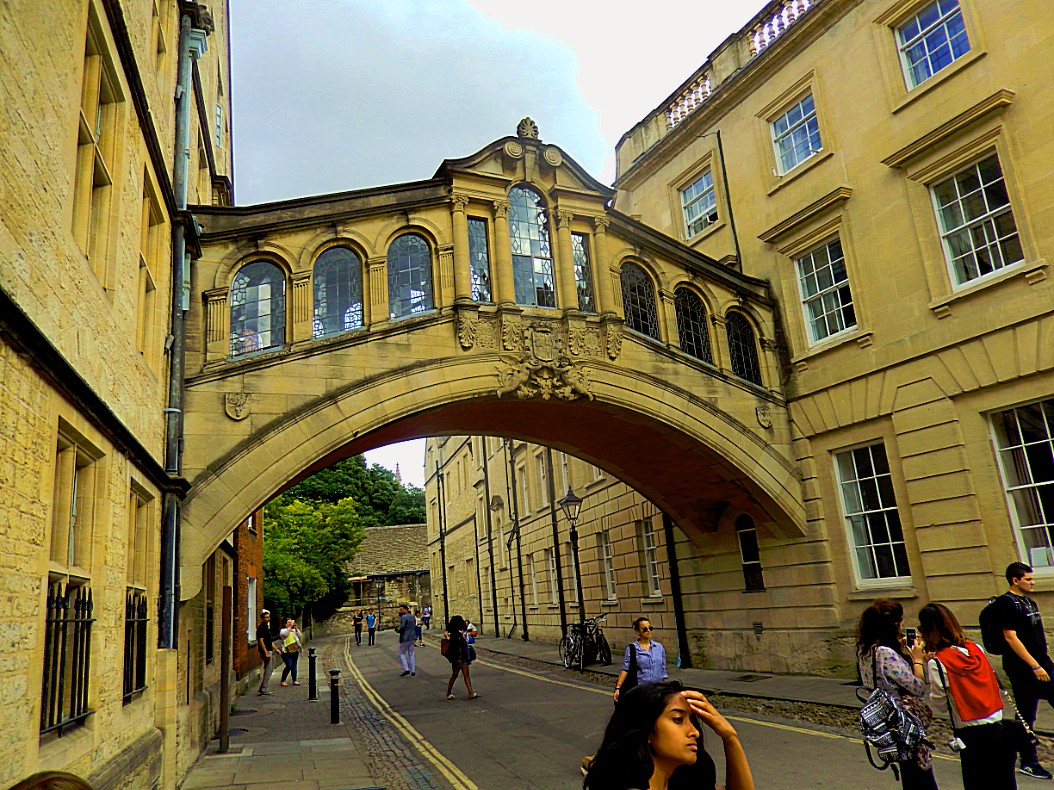
Building
The bridge links together the Old and New Quadrangles of Hertford College (to the south and the north respectively), and much of its current architecture was designed by Sir Thomas Jackson. It was completed in 1914, despite its construction being opposed by New College.
The building on the southern side of the bridge houses the College’s administrative offices, whereas the northern building is mostly student accommodation. The bridge is always open to members of the College, who can often be seen crossing it. The bridge is Grade II listed.
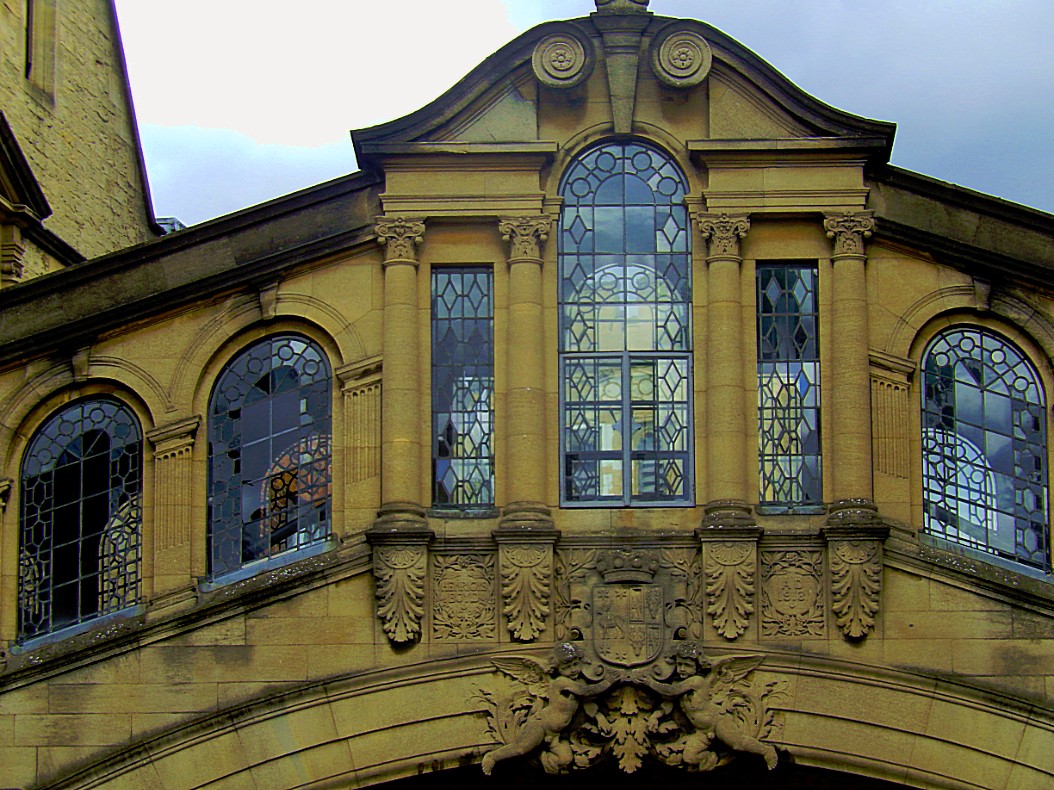
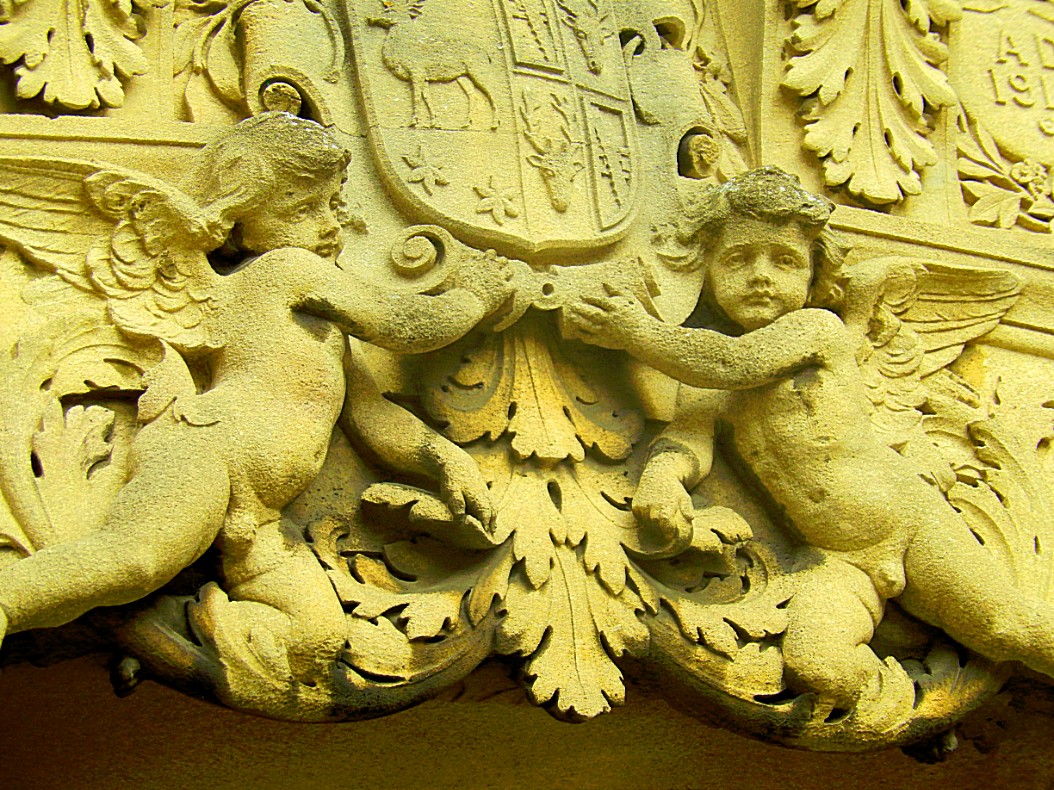
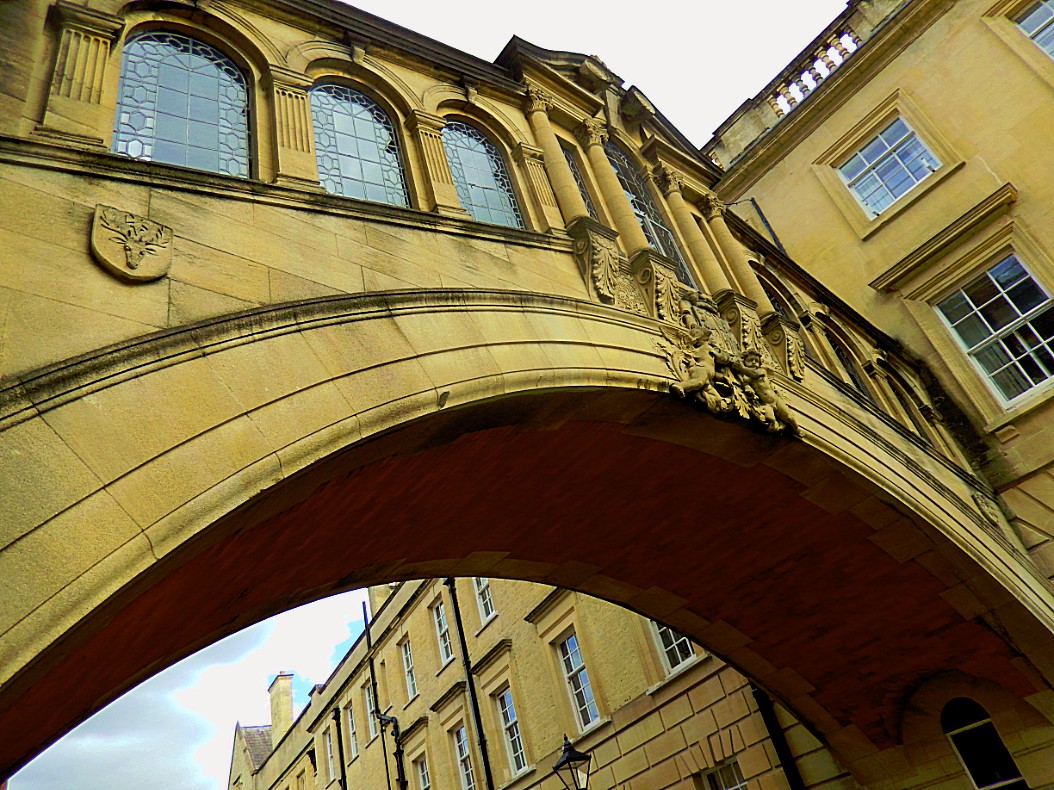 It was late in the afternoon and after saying goodbye to my very knowledgeable tour guide and after getting some last minute tips from her for the days to come, I thought I’d might grab a pint of something 🙂
It was late in the afternoon and after saying goodbye to my very knowledgeable tour guide and after getting some last minute tips from her for the days to come, I thought I’d might grab a pint of something 🙂
My guide had told me about the Turf Tavern, which was hidden away quite near the Bridge of Sighs and I decided to go and visit that…
The Turf Tavern
Now what is better than combining a surge for history with a pint o English Ale or a Porter or Stout 😉 Not much 😀
Finding The Turf Tavern however can be a bit of a challenge, because it is tucked away down a tiny alley. My guide however had prepared me for this. I had to look for a very small alley/passage which led behind the buildings around the Bridge of Sighs. She said: Keep walking, even if you think: “I’m completely wrong here, no way that there’s a commercially well functioning Tavern that is a warm and welcome place too in these back street alleys!!!” But hey, guess what: There is!!!
How is this even possible? Well, these Ale houses, Taverns and Inns (now all together categorized under the name Pubs (abbreviation of Public Houses), are often that old, that at the time of there origin, they most likely were located at important coach routes. But as time passed………
Actually The Turf Tavern started as a malt house, becoming a cider house in 1775 and an inn, The Spotted Cow, at the end of the 18th century. It took its present name in 1847 and is enjoyed by tourists and students alike.
This particular pub, probably originated as an Ale House (because that is what a text on the wall said), was frequently visited by Inspector Morse, in the books of Collin Dexter and also in the famous television series (even famous in the Netherlands 😉 ).
Probably the inspector knew that if he didn’t find the culprit here, at least chances were good finding some rare Pokémon and a pint of something ;-).
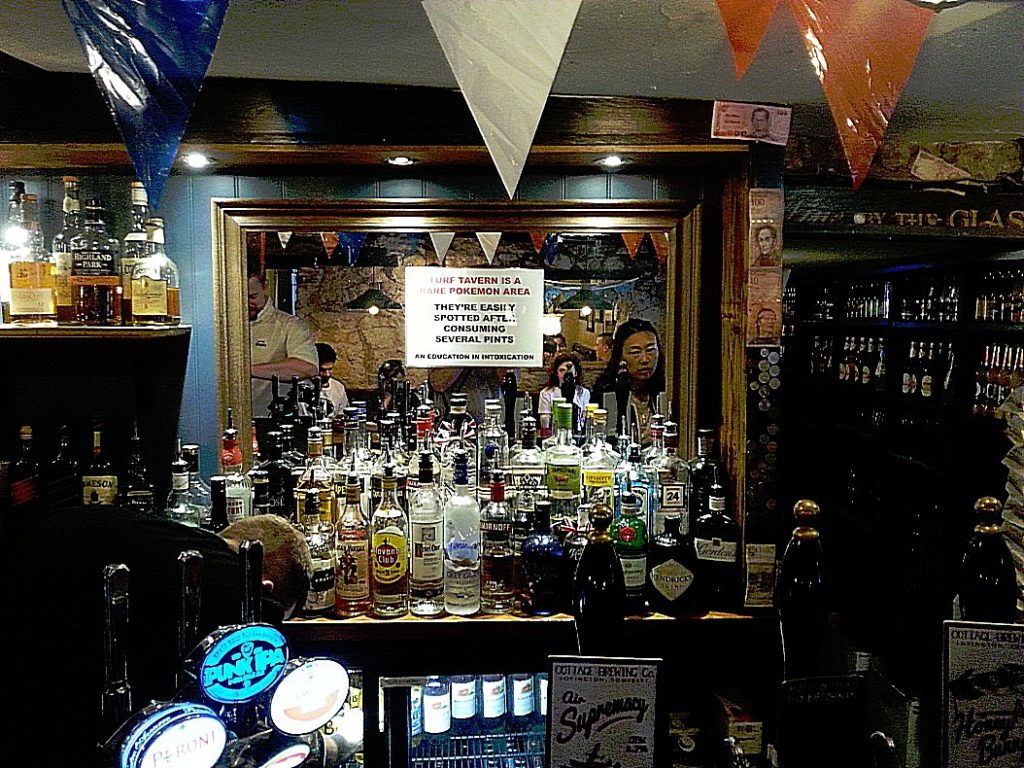 Morse and Lewis chat here in The Setting of the Sun as they investigate the murder of a Japanese summer-school student. In Service of All the Dead, Morse leaves without a beer after seeing Ruth Rawlinson (Angela Morant), whom he had hoped to take out to dinner, drinking with another man, murderer Harry Josephs (Maurice O’Connell).
Morse and Lewis chat here in The Setting of the Sun as they investigate the murder of a Japanese summer-school student. In Service of All the Dead, Morse leaves without a beer after seeing Ruth Rawlinson (Angela Morant), whom he had hoped to take out to dinner, drinking with another man, murderer Harry Josephs (Maurice O’Connell).
Lots of tourists and students were enjoying the warm sunny weather of the afternoon, outside on the rather large terrace (considering it being crammed in ia a backstreet alley between all these historic buildings).
What I really love about these English Pubs, is their blatant sense of humor. E.g.: The sign above the bar adressing the latest Pokemon Go mania…
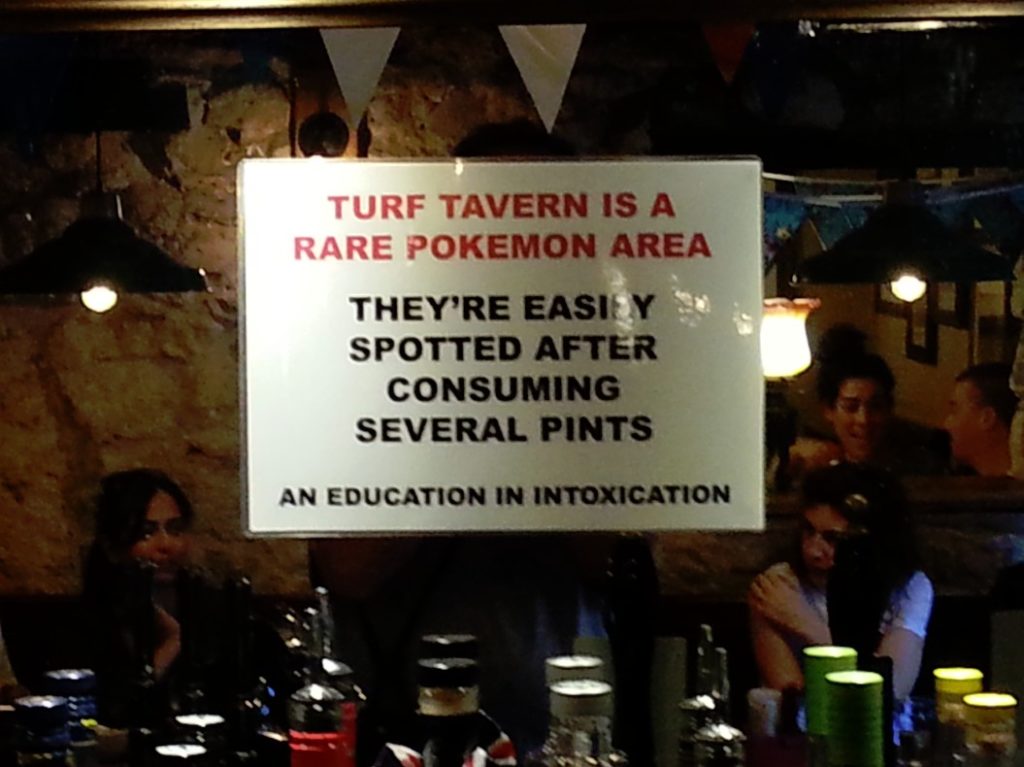 As I looked at the sky, drinking a Greene King Ale and a Guiness Stout I noticed the old chimneys against the deep blue sky.
As I looked at the sky, drinking a Greene King Ale and a Guiness Stout I noticed the old chimneys against the deep blue sky.
I decided to go on an evening walk before dinner, but that is a story for my next Oxford Blog…

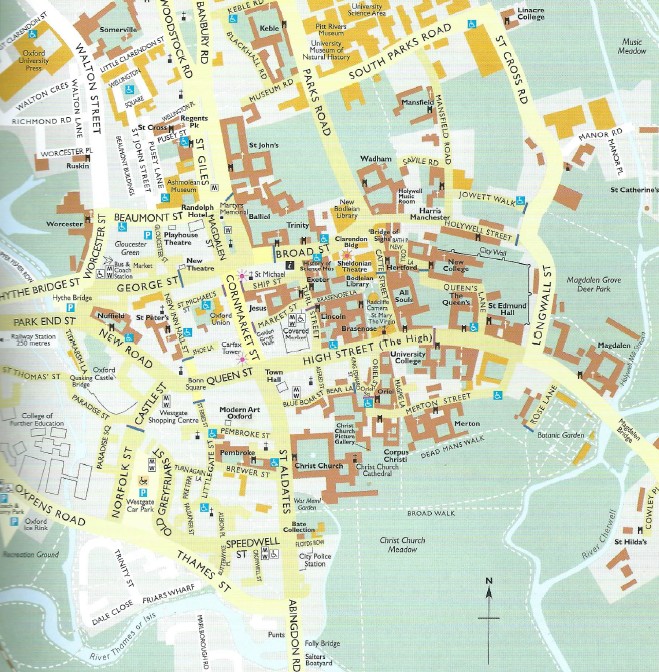
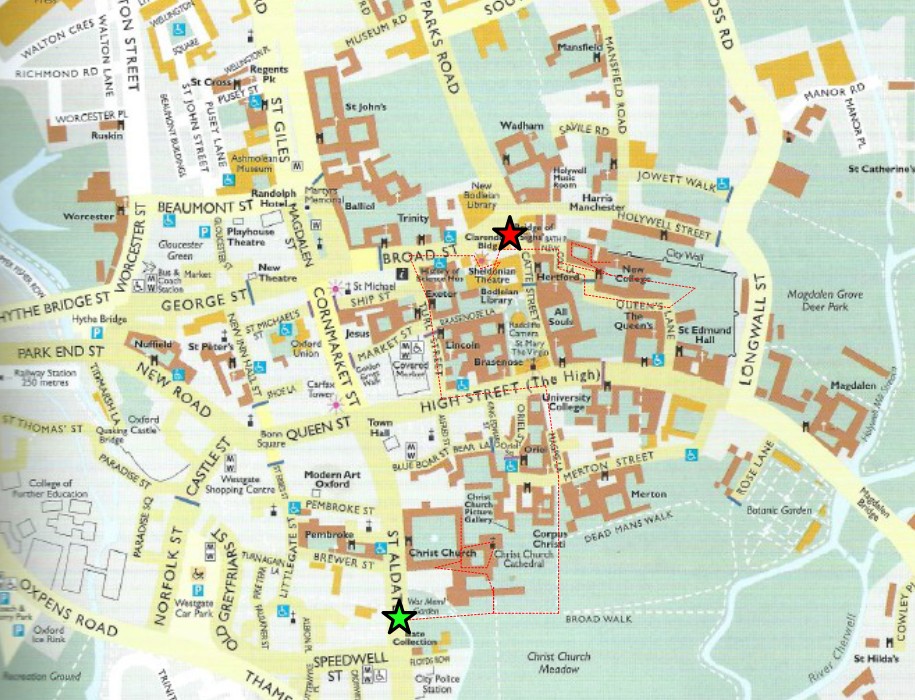
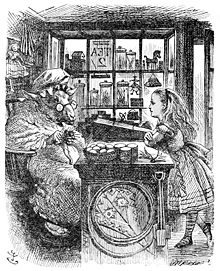
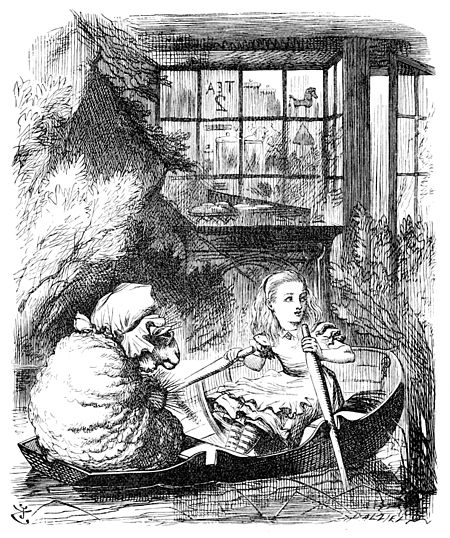
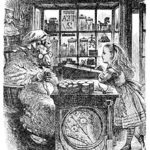
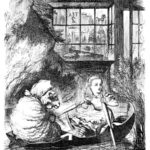
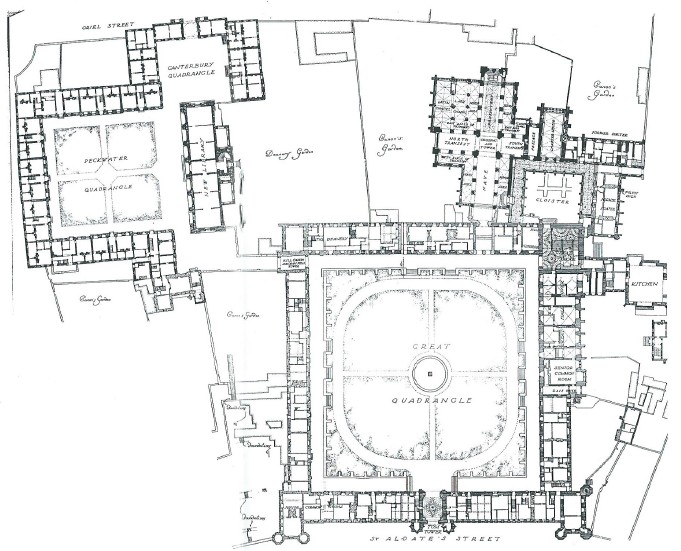
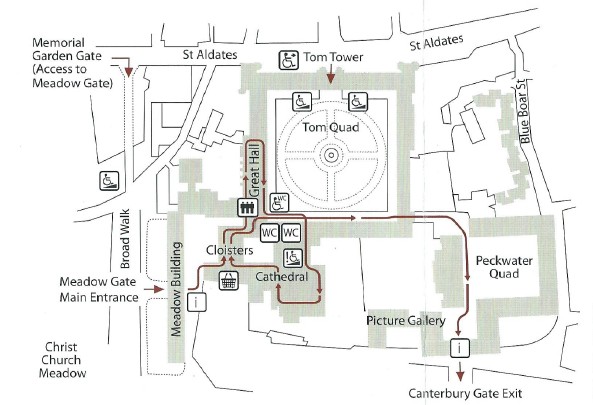
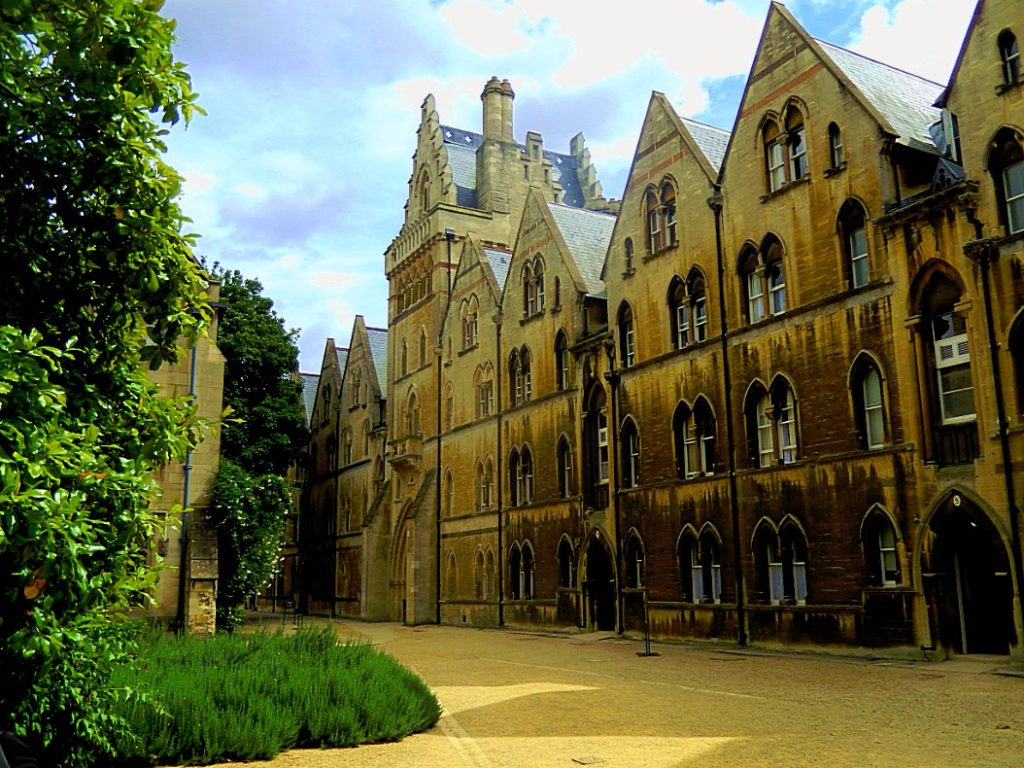
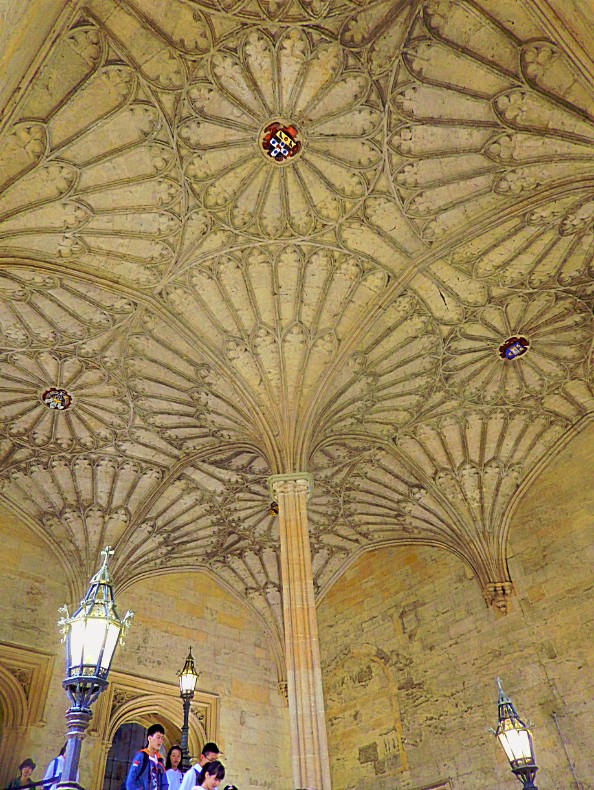
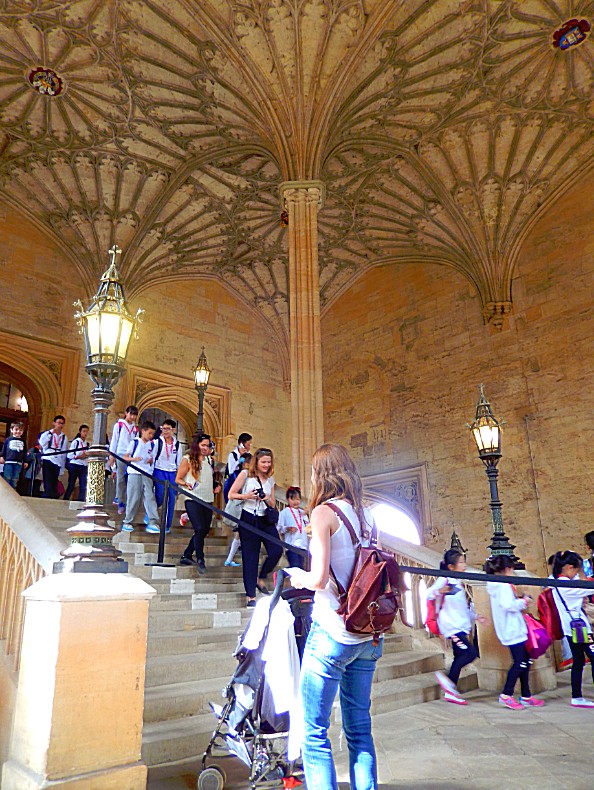
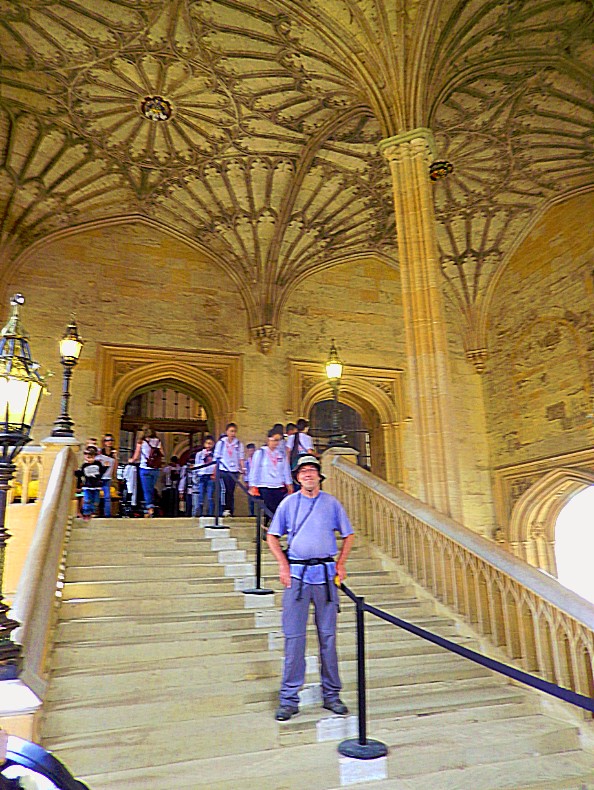
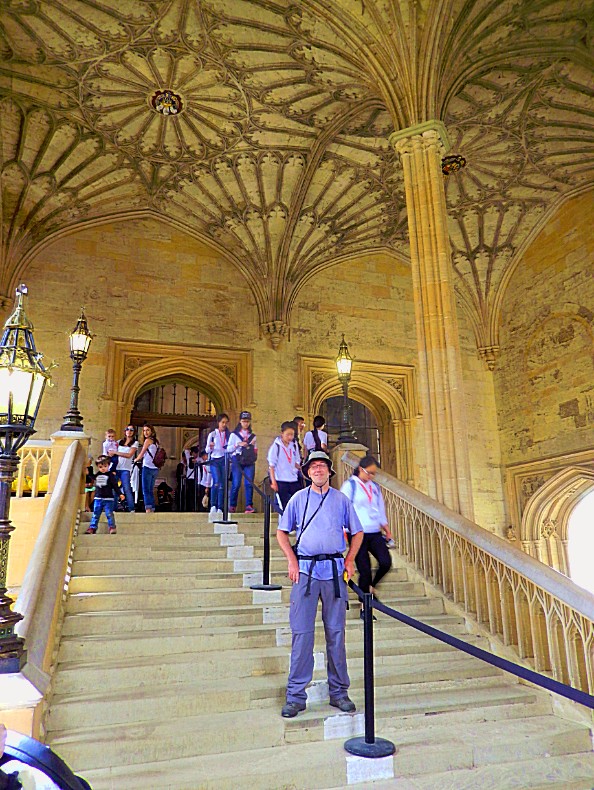
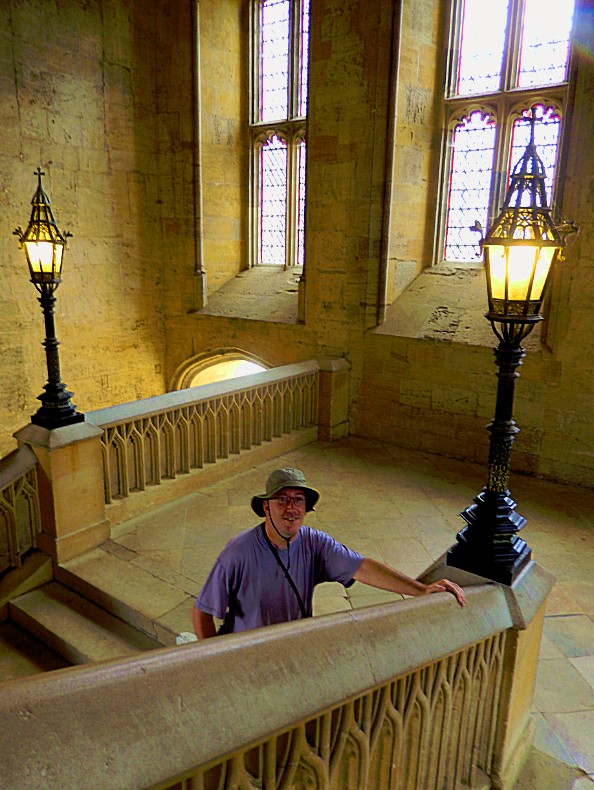
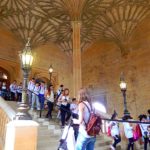
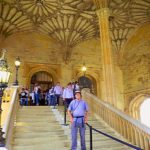
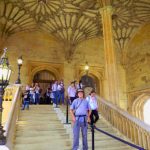
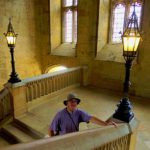
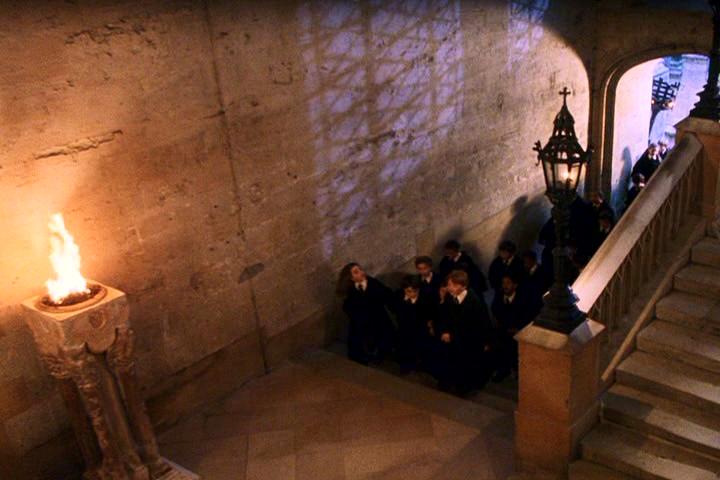
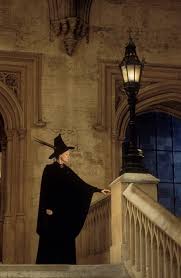
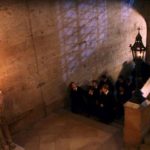
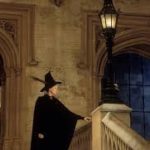
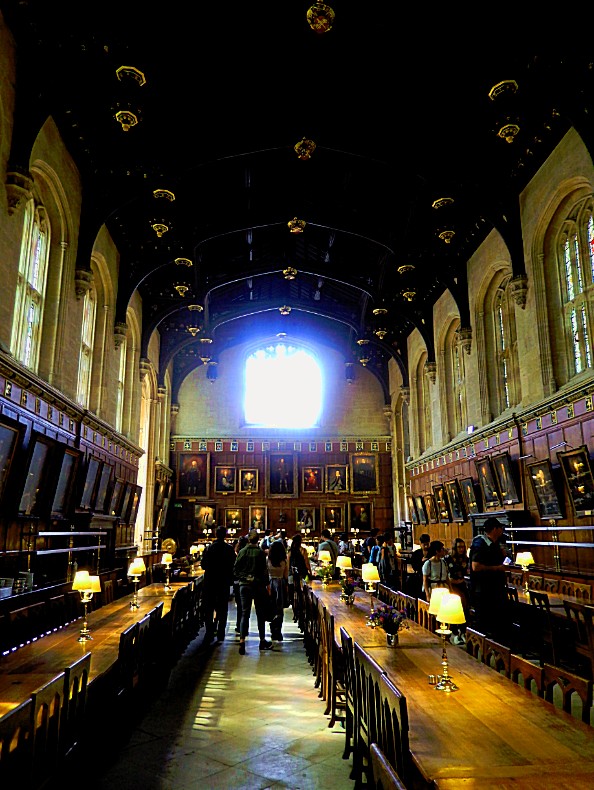
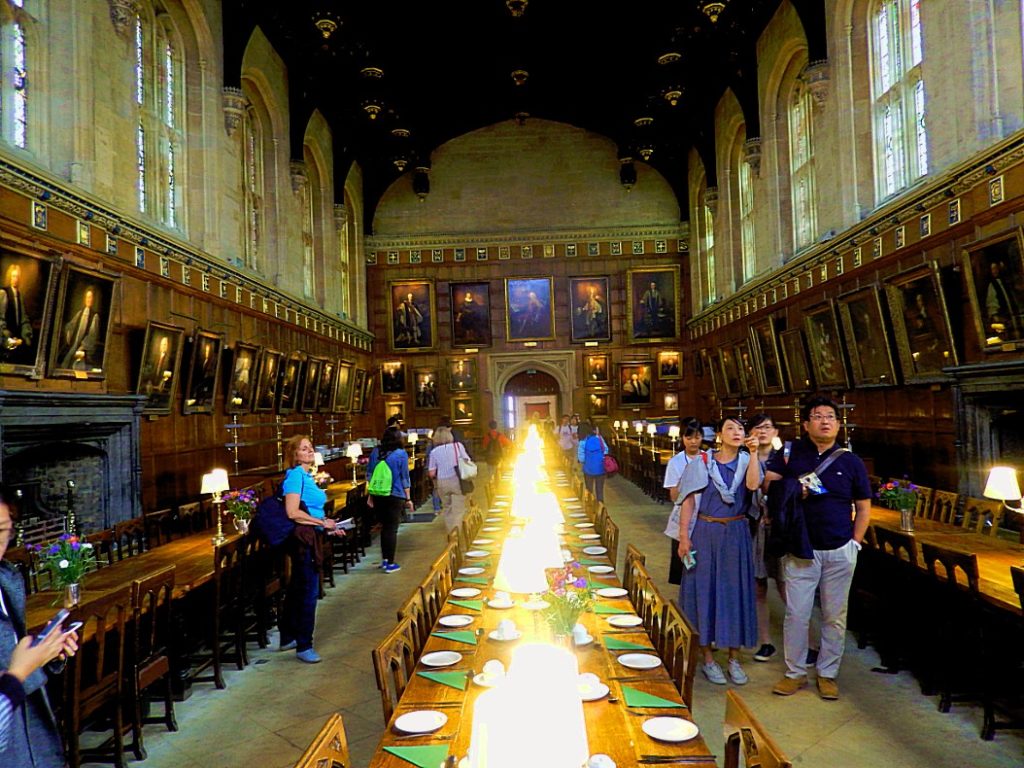
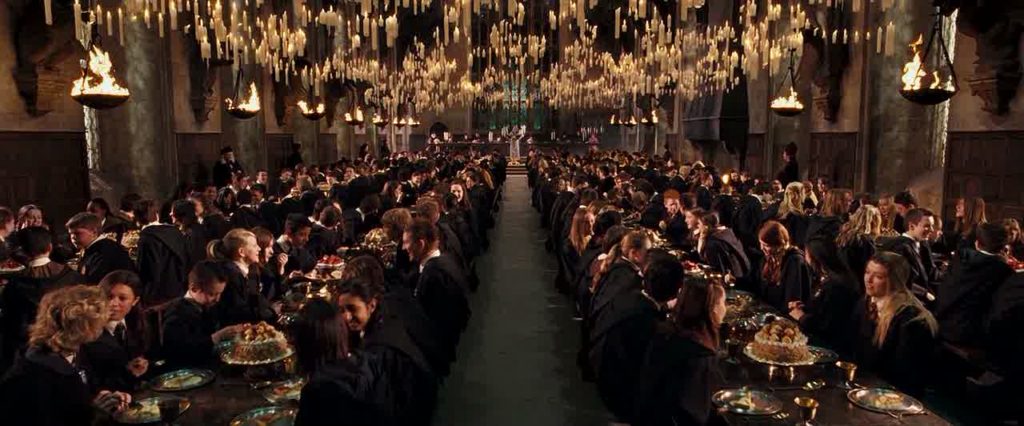
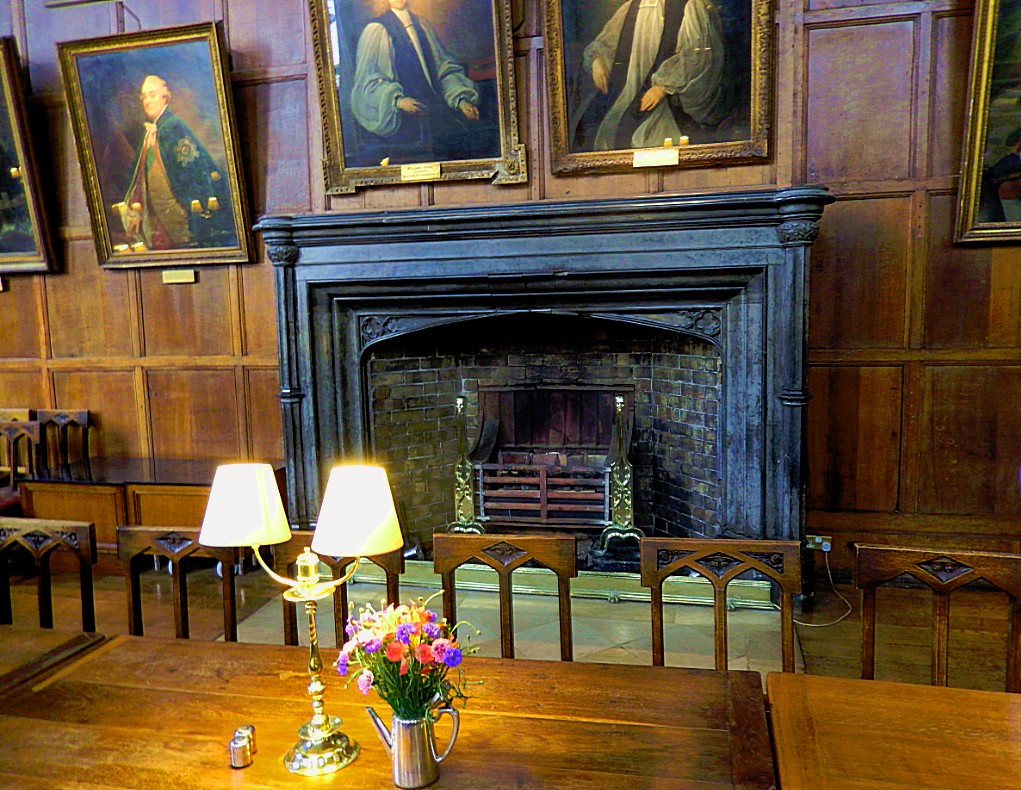
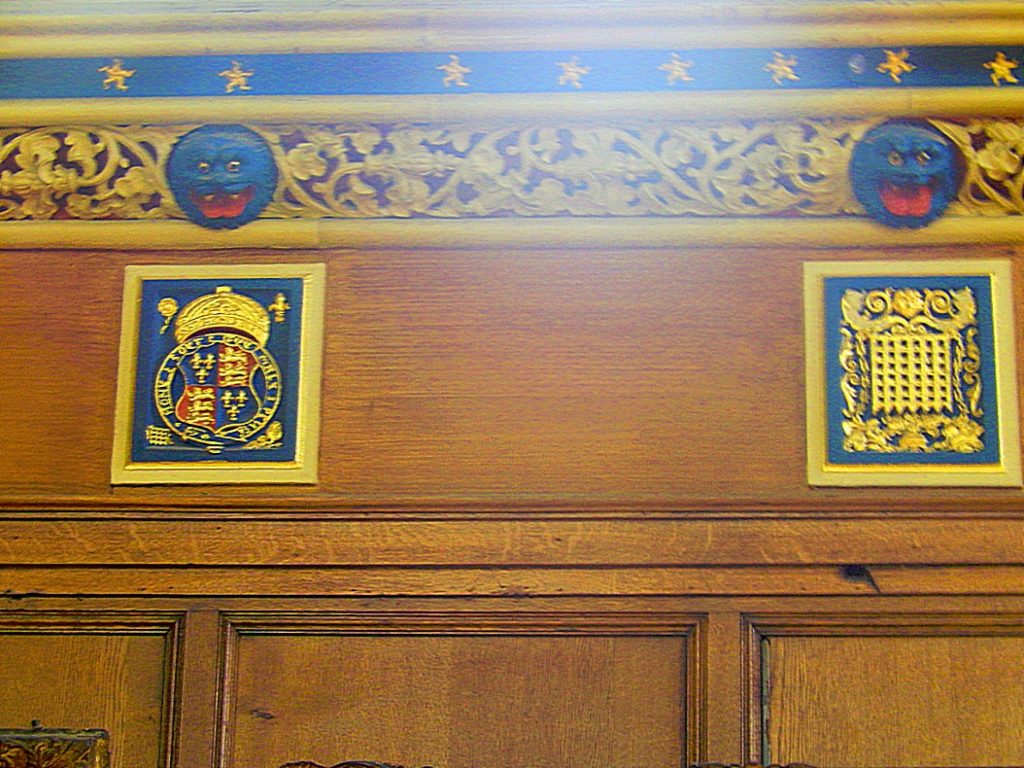
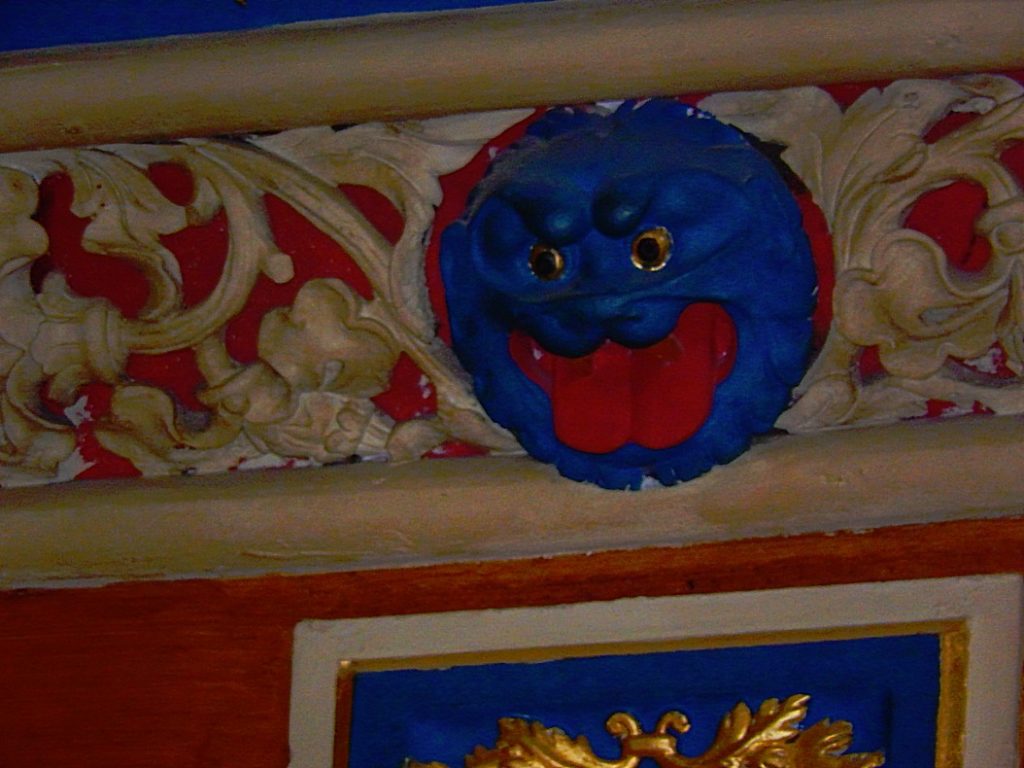
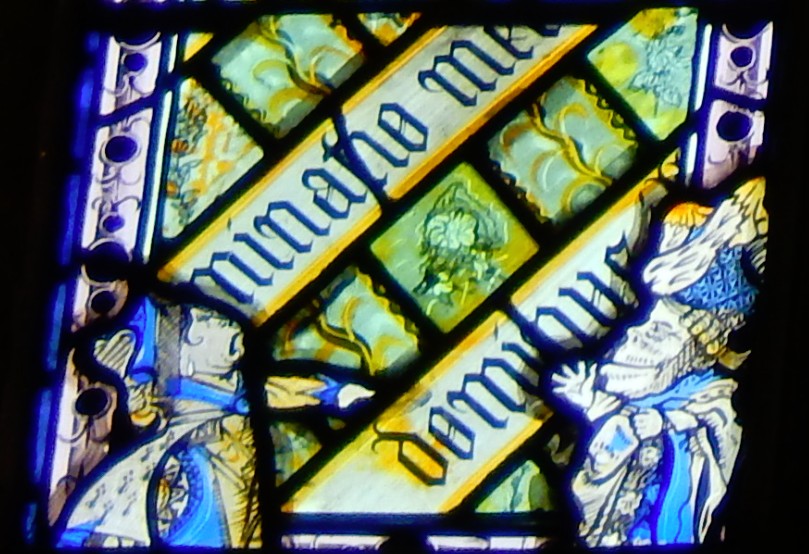
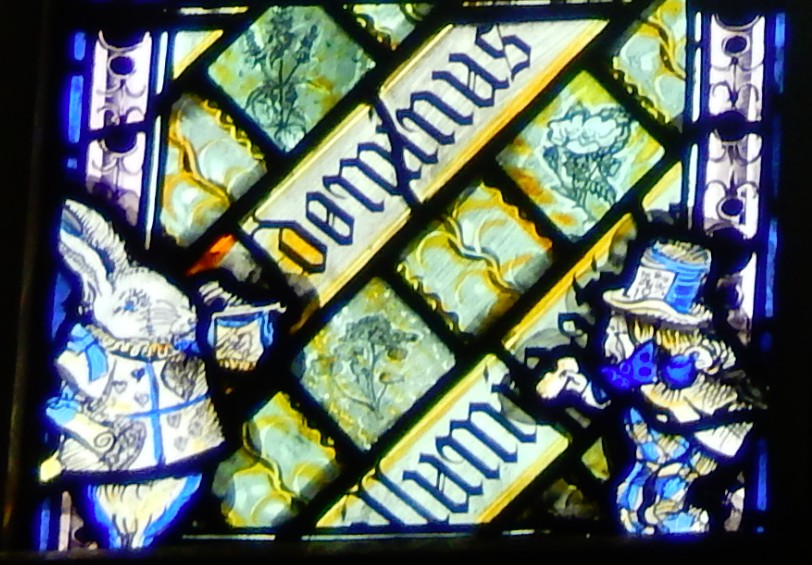
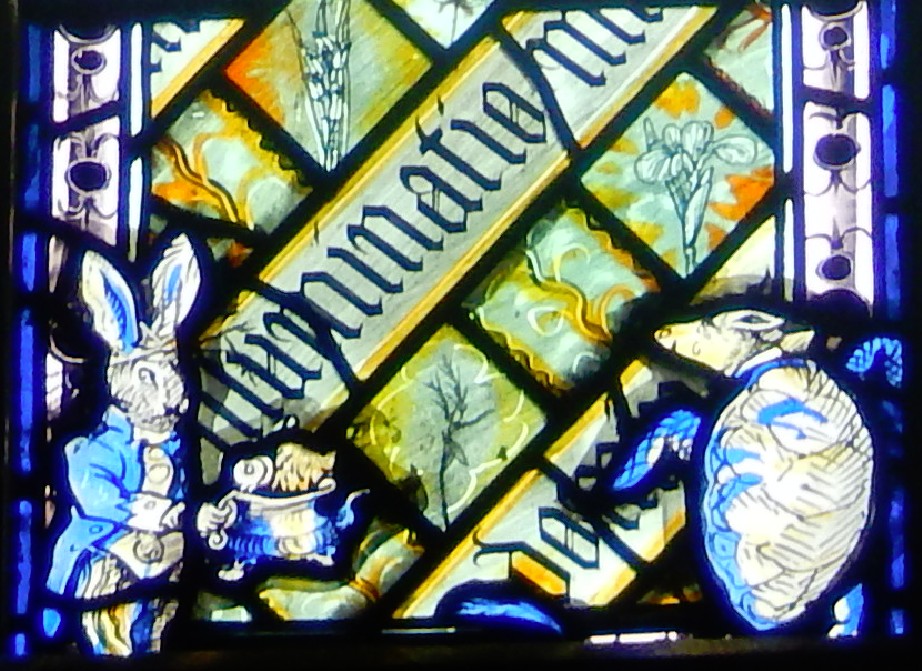
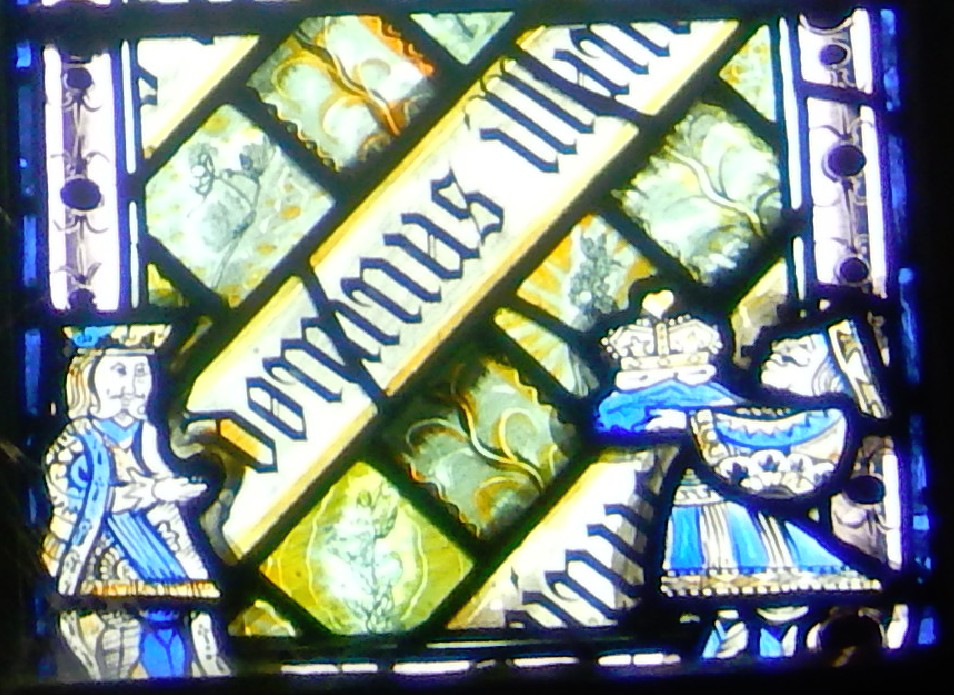
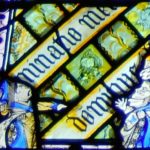
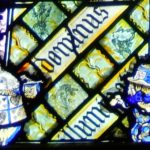
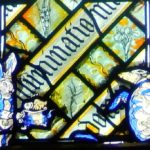
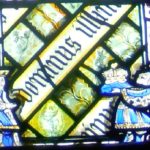
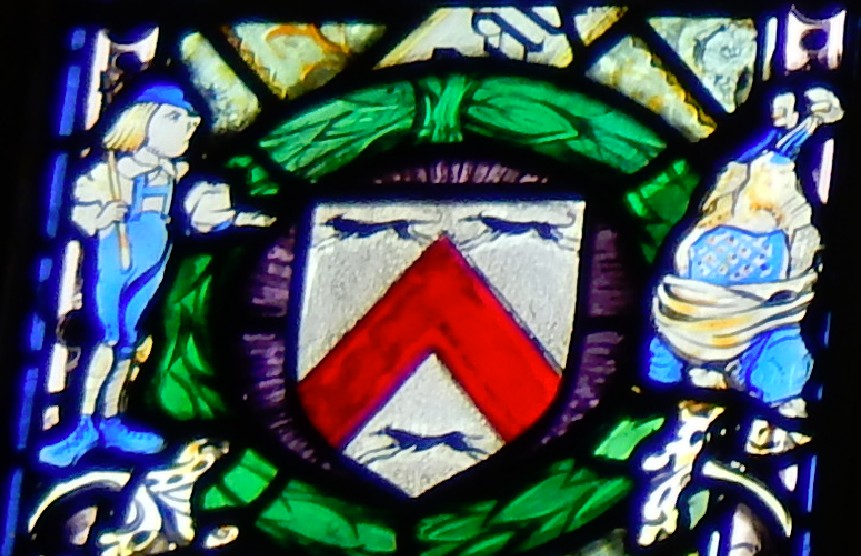
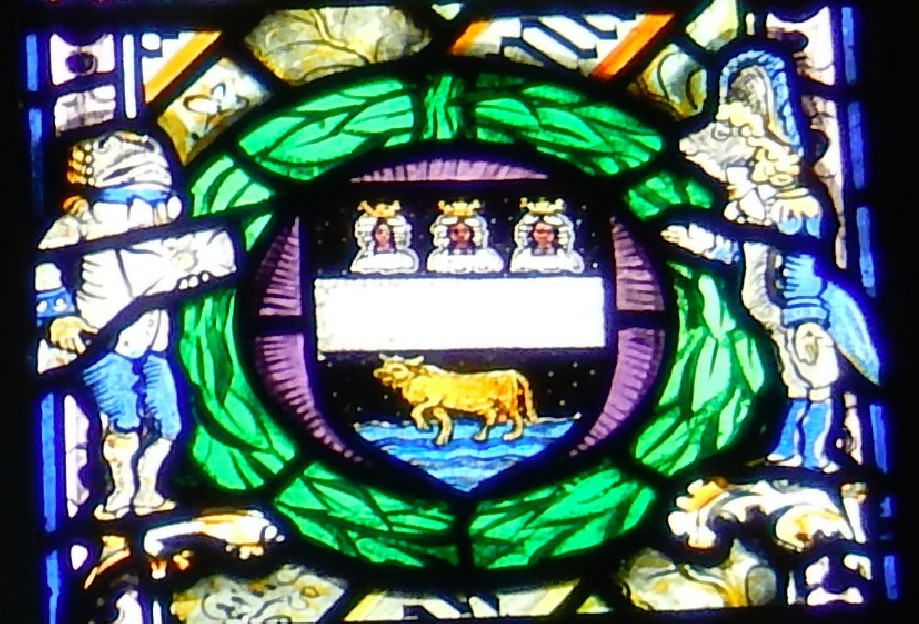
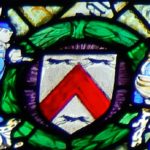
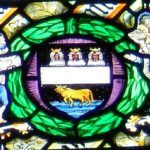
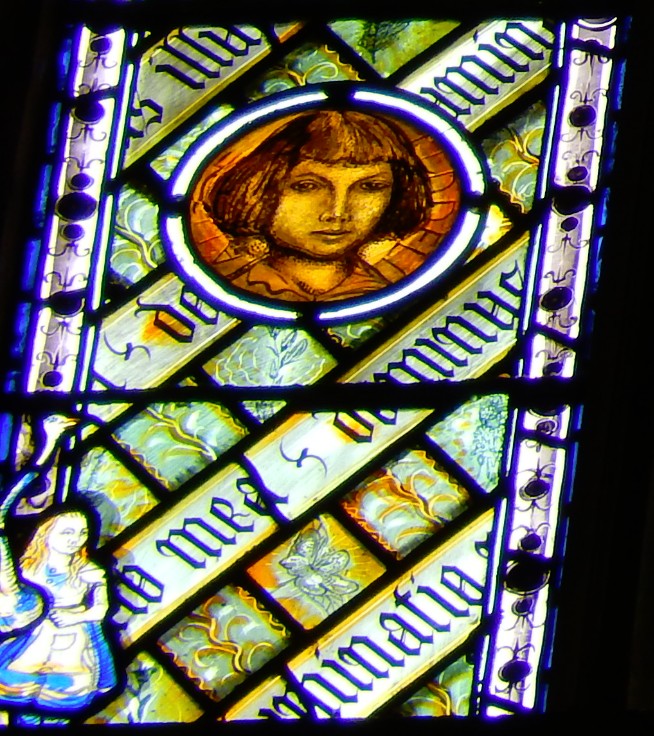
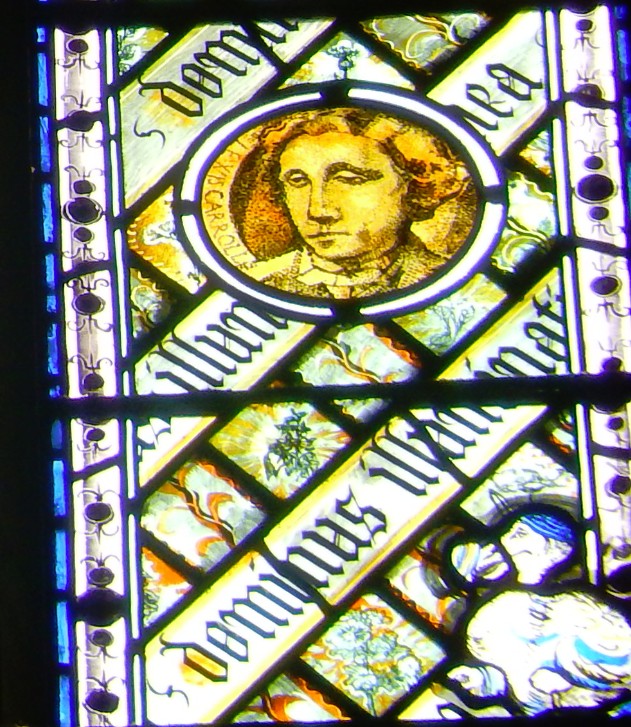
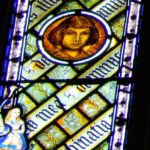
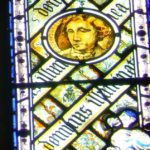

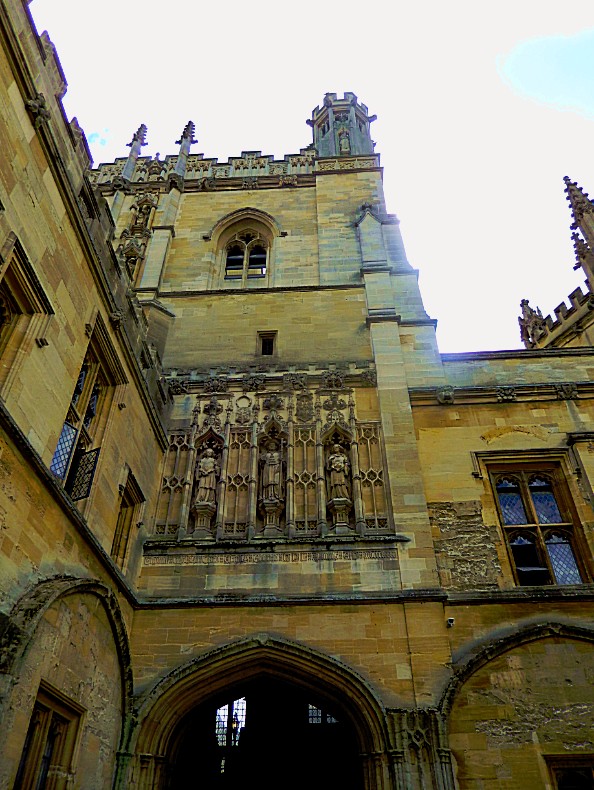
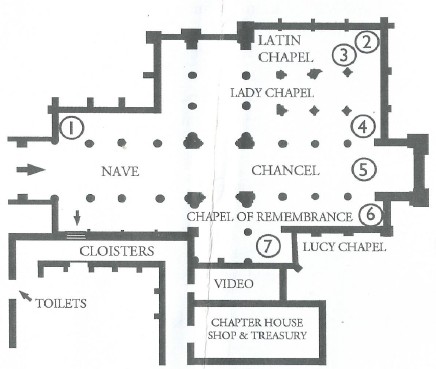
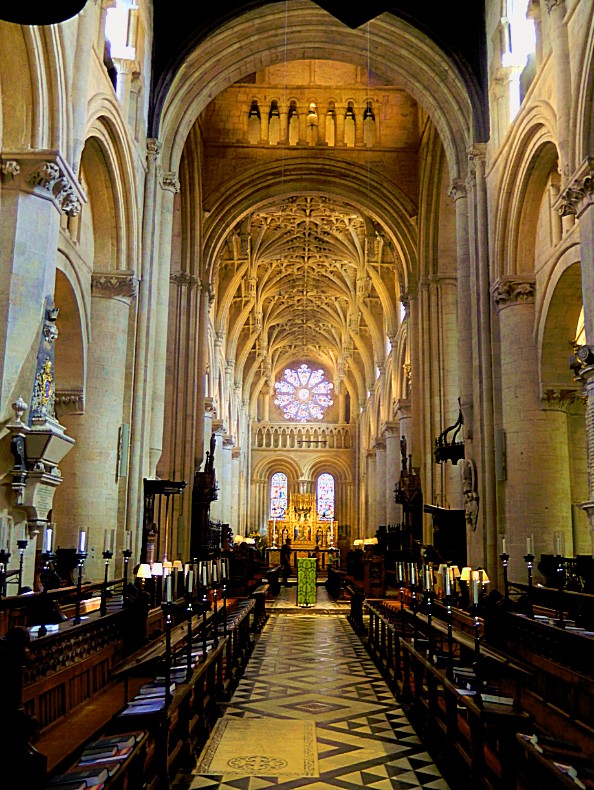
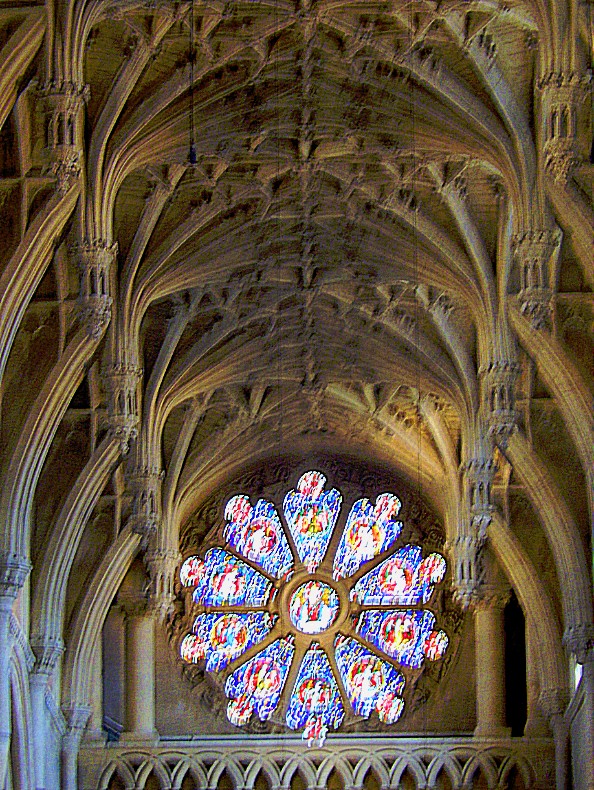
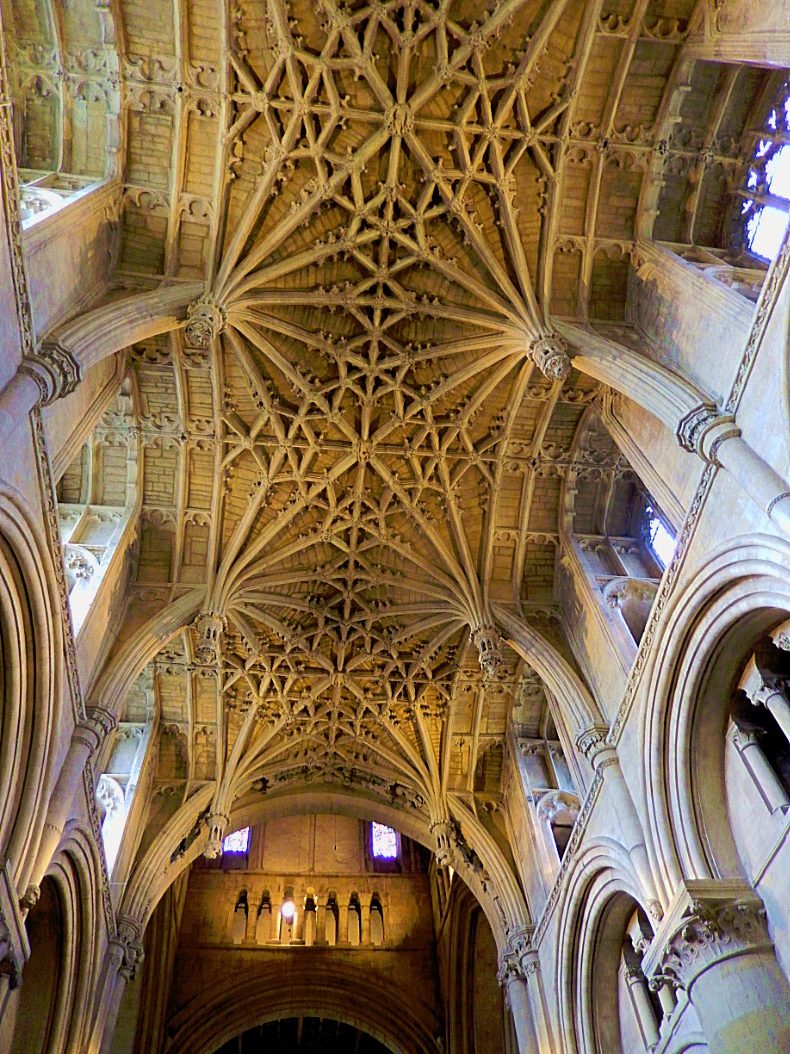
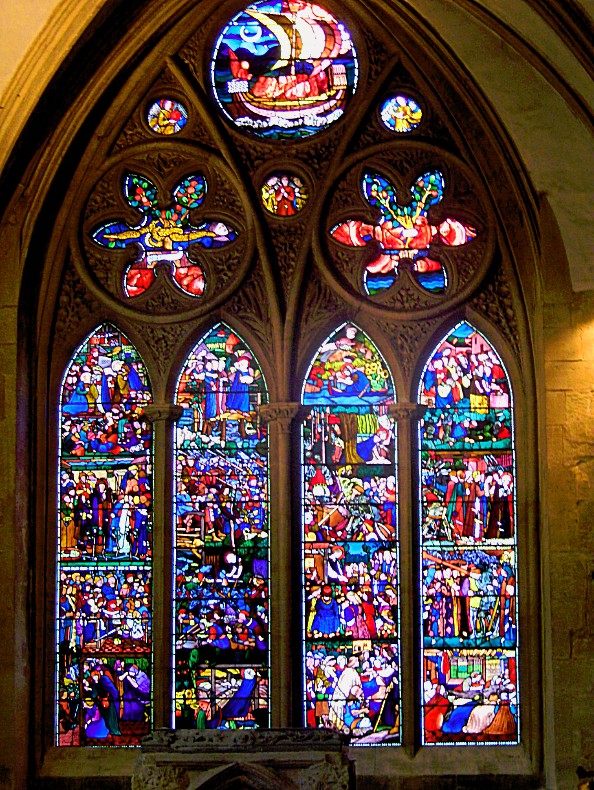
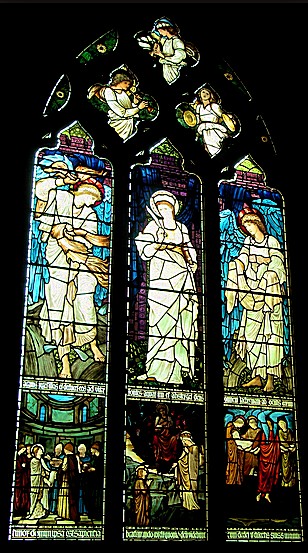
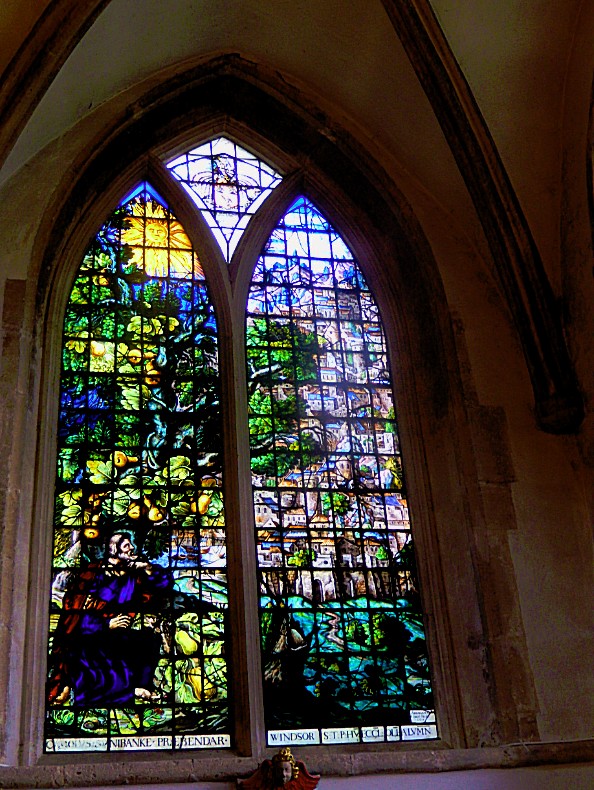
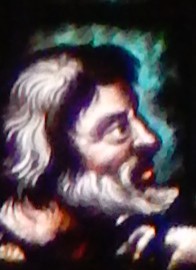
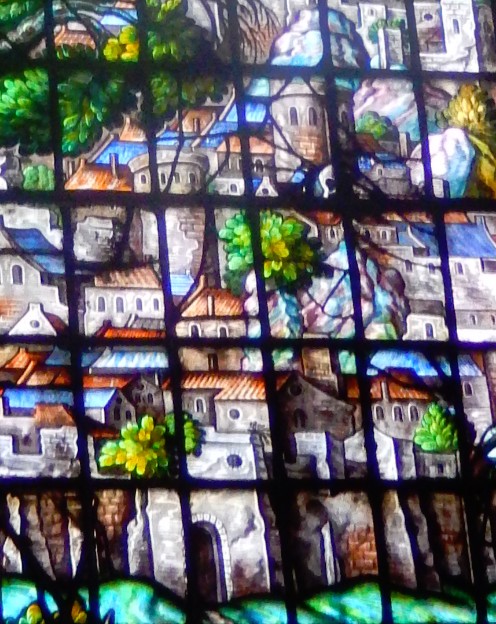
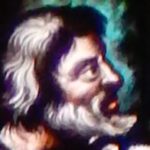
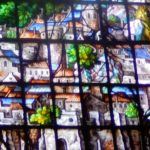
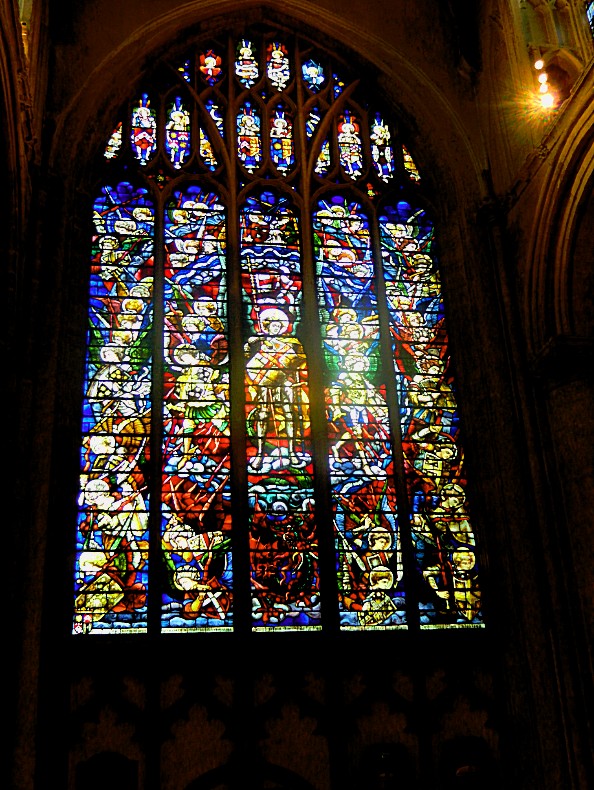
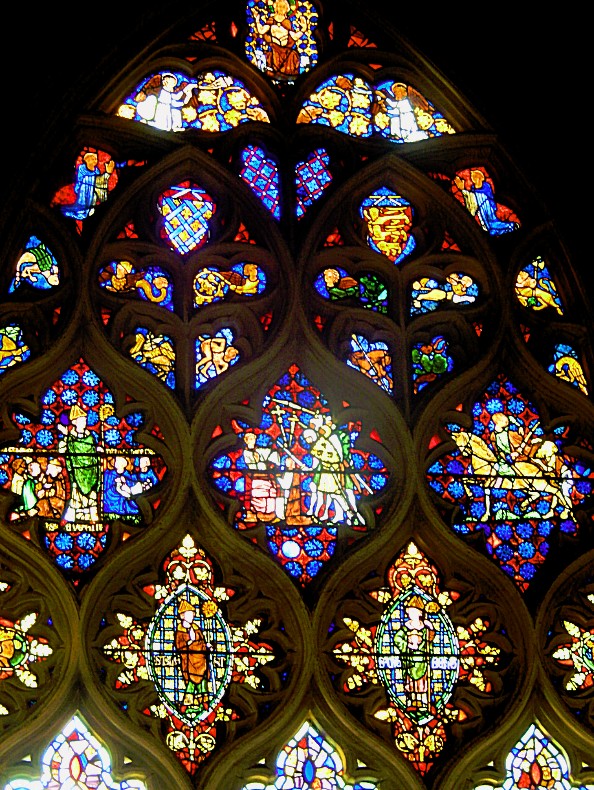
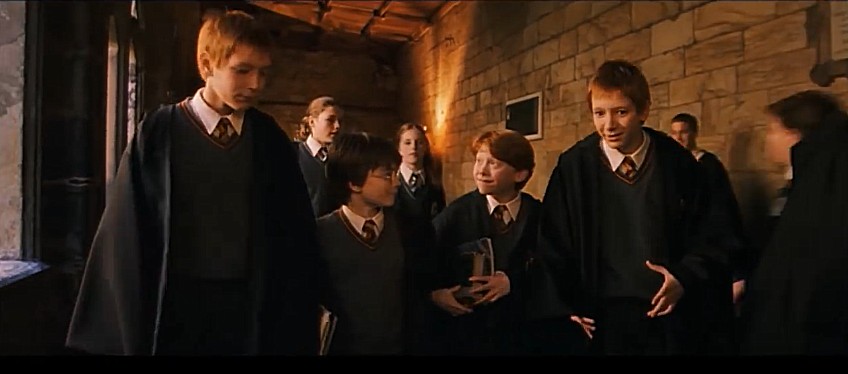
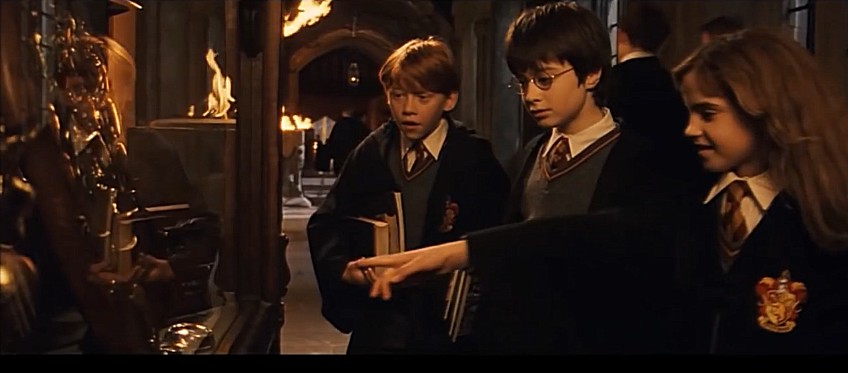
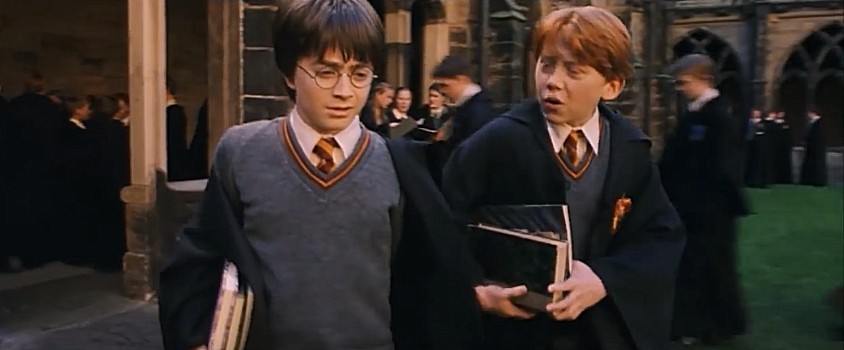 Then we left the Cloisters…
Then we left the Cloisters…